MINING IN ONTARIO
UPDATES ON CRITICAL MINING IN NORTHERN ONTARIO
HOW TO IMPROVE THE COMPETITIVENESS OF ONTARIO’S MINING INDUSTRY
WOMEN IN MINING
Challenging the status quo

FEBRUARY/MARCH 2023 | www.canadianminingjournal.com | PM # 40069240
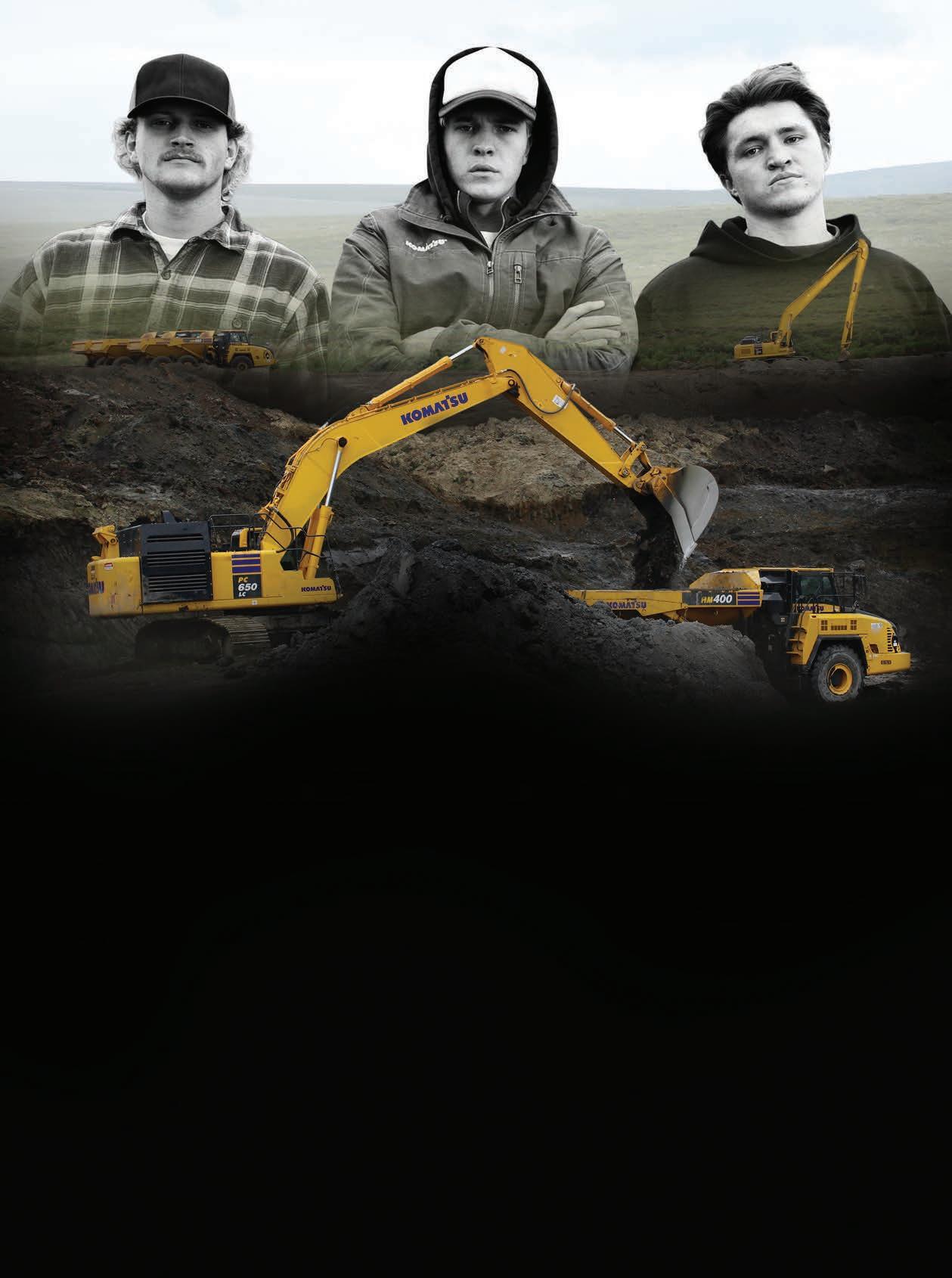

Ready for action? When the team of Hoffman Family Gold have to deal with harsh conditions deep in the wilderness of Alaska, they use Komatsu equipment designed for whatever reality (and reality TV) throws at them. Learn more about the equipment: komatsu.com/pc490lc
FEATURES
ESG
10 Using a regeneration lens, mine waste becomes a resource: Part 2.
12 How does innovation in mining accelerate ESG goals?
17 What’s all that noise?
WOMEN IN MINING
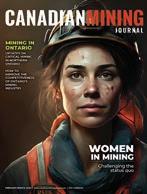

22 Challenging the status quo: An interview with Jamile Cruz.
28 The social impacts of mining on Indigenous women and communities .
TECHNOLOGY
33 The latest evolution in sealing technology.
35 Building a business case for OTR recycling.
39 Put an end to the frequent replacement of capping boards in cell house refineries.
42 A mid-term look at critical mining in North America.
VENTILATION
44 How ESG impacts the future of mine ventilation.
WATER MANAGEMENT
49 Unpacking mine water management: A cornerstone of long-term viability and mine value.
MINING IN ONTARIO
46 Updates on critical mining in northern Ontario.
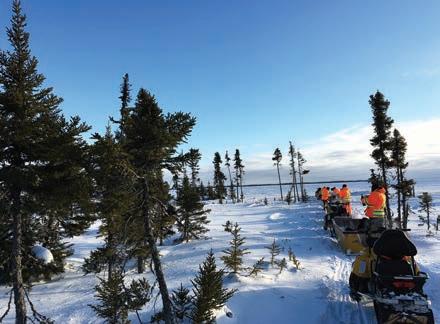
52 How to improve the competitiveness of Ontario’s mining industry: Interview with Chris Hodgson.
56 Ontario is making a significant contribution to Canada’s net-zero target.
58 The EV supply chain in northern Ontario.
60 Making critical connections: The races for minerals and talent.
RECRUITMENT, TRAINING & CAREERS
62 Human centered approach to maximizing returns.
64 Losing the next generation of women in mining.
66 How to mitigate top mining business risks.
DEPARTMENTS
4 EDITORIAL | Mining in Ontario and the need for female talent.

6 FAST NEWS | Updates from across the mining ecosystem.
14 LAW | Green technologies and geopolitics are on a collision course.
20 COSTMINE | The cost of salt.
68 ON THE MOVE | Tracking executive, management, and board changes in Canada’s mining sector.
www.canadianminingjournal.com
Coming in April 2023
Canadian Mining Journal’s April issue will tie-in BEVs, mine electrification, and the hunt for the resources to fuel de-carbonization. The issue will include a report on transportation and logistics.
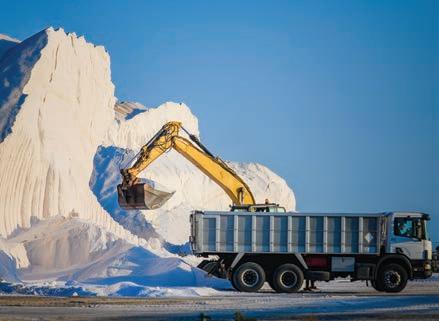
For More Information
Please visit www.canadianminingjournal.com for regular updates on what’s happening with Canadian mining companies and their personnel both here and abroad. A digital version of the magazine is also available at https://www.canadianminingjournal.com/digital-edition/
Front cover image: Portrait of a female worker in a mine in protective gear.
CREDIT: MESTOCK/ADOBE STOCK.
20 28 FEBRUARY/MARCH 2023 VOL. 144, N O .2
CANADIAN MINING JOURNAL | 3 46
Mining in Ontario and the need for female talent
Tamer Elbokl, PhD
Big restructuring and acquisition news will be the theme of 2023. Just before I started drafting this editorial, Teck Resources, Canada’s largest diversified miner, announced major changes including rebranding to Teck Metals Corp. as it spun off its steelmaking coal unit into a new company: Elk Valley Resources Ltd.
The Vancouver-based miner’s business separation will allow it to focus on critical metals that are crucial to the global energy transition, such as copper. Teck will seek shareholder approval of the separation at its annual and special shareholders meeting scheduled for Apr. 26.
Another big news was Canada’s B2Gold’s announcement that it is buying fellow precious metals miner Sabina Gold & Silver in an all-stock deal worth $1.1 billion (US$824 million).
The transaction hands B2Gold the Back River gold district property in Nunavut, which holds multiple high-potential mineralized zones. In my opinion, this is a strategic move for B2Gold as the company operates mines in Mali, Namibia, and The Philippines, so this would be their first property in Canada. Soon, I will be interviewing Clive T. Johnson, president and CEO of B2Gold, to speak on the Sabina transaction.
Just one week before B2Gold’s announcement, the world’s largest gold producer, Newmont, confirmed it had approached Australia’s biggest gold miner, Newcrest Mining, with a US$17-billion takeover offer.
If you are planning to attend the Prospectors and Developers Association of Canada (PDAC) 2023 convention in Toronto, Mar. 5-8, please visit our booth to pick up a hardcopy of this humungous issue, which is our biggest CMJ issue in a long time with 72 pages.
As the leading voice of the mineral exploration and development industry, PDAC recently provided the federal government with a list of recommendations that would help increase the competitiveness of Canada’s mineral exploration and development industry as part of the public consultation in advance of Budget 2023. PDAC’s recommendations focused on providing incentives to the industry to bolster exploration and development in Canada, including extending the Mineral Exploration Tax Credit (METC), expanding the eligibility of Canadian Development Expenses (CDE), reviewing the net benefit of flow-through share regime, increasing the METC for exploration within Canada’s territories, and expediting the development of a Pan-Canadian Geoscience Strategy (PGS).
With International Women’s Day (IWD) approaching on Mar. 8, we introduce our new “Women in Mining” section in this issue. Flip to page 22 for an exclusive interview with Jamile Cruz, founder of I&D 101 and currently director of joint ventures and Brazil country manager with Rio Tinto. On page 28, Kesiah Stoker highlights the social impacts of mining on Indigenous women and communities from PDAC’s recent social impact report.
Several articles in this issue highlight and provide updates on critical mining in Ontario with a focus section on careers and recruitment and the need for female talent in the mining sector (see pages 46-67).
Our April issue will tie-in BEVs, mine electrification, and the hunt for the resources to fuel de-carbonization. Editorial contributions will be accepted until Mar. 8, 2023, and should be sent to the Editor in Chief. CMJ
FEBRUARY/MARCH 2023 Vol. 144 – No . 02
225 Duncan Mill Rd. Suite 320, Toronto, Ontario M3B 3K9
Tel. (416) 510-6789 Fax (416) 510-5138 www.canadianminingjournal.com
Editor in Chief Dr. Tamer Elbokl TElbokl@CanadianMiningJournal.com

News Editors Marilyn Scales mscales@canadianminingjournal.com Moosa Imran mimran@canadianminingjournal.com

Production Manager
Jessica Jubb jjubb@glacierbizinfo.com
Advisory Board
David Brown (Golder Associates)
Michael Fox (Indigenous Community Engagement)
Scott Hayne (Redpath Canada)
Gary Poxleitner (SRK)
Manager of Product Distribution
Allison Mein 403-209-3515 amein@glacierrig.com
Publisher & Sales
Robert Seagraves 416-510-6891 rseagraves@canadianminingjournal.com
Sales, Western Canada
George Agelopoulos
416-510-5104 gagelopoulos@northernminer.com
Toll Free Canada & U.S.A.:
1-888-502-3456 ext 2 or 43734
Circulation Toll Free Canada & U.S.A.: 1-888-502-3456 ext 3
President, The Northern Miner Group Anthony Vaccaro
Established 1882
Canadian Mining Journal provides articles and information of practical use to those who work in the technical, administrative and supervisory aspects of exploration, mining and processing in the Canadian mineral exploration and mining industry. Canadian Mining Journal (ISSN 0008-4492) is published 10 times a year by Glacier Resource Innovation Group (GRIG). GRIG is located at 225 Duncan Mill Rd., Ste. 320, Toronto, ON, M3B 3K9 Phone (416) 510-6891.
Legal deposit: National Library, Ottawa. Printed in Canada. All rights reserved. The contents of this magazine are protected by copyright and may be used only for your personal non-commercial purposes. All other rights are reserved and commercial use is prohibited. To make use of any of this material you must first obtain the permission of the owner of the copyright. For further information please contact Robert Seagraves at 416-510-6891. Subscriptions – Canada: $51.95 per year; $81.50 for two years. USA: US$64.95 per year. Foreign: US$77.95 per year. Single copies: Canada $10; USA and foreign: US$10. Canadian subscribers must add HST and Provincial tax where necessary. HST registration # 809744071RT001.
From time to time we make our subscription list available to select companies and organizations whose product or service may interest you. If you do not wish your contact information to be made available, please contact us via one of the following methods:
Phone: 1-888-502-3456 ext 3; E-mail: amein@glacierrig.com
Mail to: Allison Mein, 225 Duncan Mill Rd., Ste 320, Toronto, ON M3B 3K9
We acknowledge the financial support of the Government of Canada.
4 | CANADIAN MINING JOURNAL www.canadianminingjournal.com
FROM THE EDITOR
Join Our Monthly Mining Newsletter
Long-term solutions for sustainable mining


No spam here, just quality content to help your mining operations excel.
Get expert-level features covering in-depth topics that will answer some of your burning questions - emailed directly to your inbox.
Matching the dump body to the payload
Over the past 30 years, SMS Equipment has designed, fabricated, and assembled hundreds of custom dump bodies for off-road mining trucks.
Recruiting skilled workers in remote regions
A career in Heavy Equipment Maintenance provides benefits and growth opportunities that few industries can match.

Updates from across the mining ecosystem
• DECARBONIZATION | New Gold orders four more Sandvik BEVs for New Afton
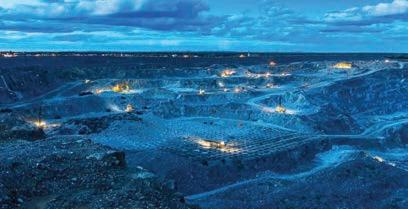
New Gold has ordered four more Sandvik LH518B battery-electric loaders for its New Afton gold-copper mine in British Columbia.
The new battery-electric vehicles (BEVs) will join the first-ever Sandvik LH518B, which New Afton trialled in late 2020 before purchasing in February 2021, and two Sandvik Z50 BEV trucks also operating at the mine.
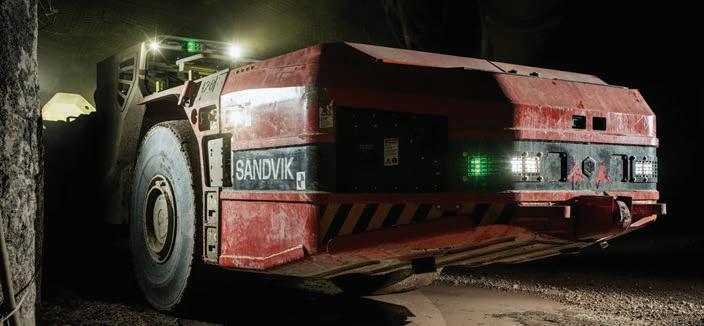
The Sandvik LH518B loader features the company’s patented self-swapping battery system, including the AutoSwap and AutoConnect functions, improving equipment safety and availability.
Located approximately 350 km northeast of Vancouver and 10 km from regional hub Kamloops in south-central British Columbia, the New Afton underground was among the industry’s earliest adopters of BEVs, which have contributed to the mine’s sustainability and productivity goals, the company says.
During more than two years in operation, the first Sandvik LH518B has helped
New Afton improve cycle times while reducing heat, noise, and greenhouse gas emissions.
Sandvik plans to deliver the first new LH518B in 2023, with the remaining units to be delivered by 2025.
“We’ve tested and proven battery-electric technology for larger scale adoption at New Afton and now we’re taking the
• MINERAL PROCESSING | Nicola to restart Merritt gold mill
Nicola Mining says the company is completing final preparations to commence gold mill near Merritt, B.C., by the end of the first quarter of 2023.
Nicola announced on Jan. 9 that it had signed a mining and milling profit share agreement with Osisko Development, and under the agreement, Osisko may transport material to Nicola’s mill site. It is the only facility in the province permitted to accept third party gold and silver mill feed from throughout the province.
Currently, the company has received more than 16,000 tonnes of ore from the Cariboo gold project. The company has also hired employees to fill key positions required for gold production.
On Jan. 3, Osisko shared results from a feasibility study done on Cariboo that indicated 163,695 oz. average annual gold production over a 12-year mine life, bulk tonnage and initial probable mineral reserves of 2 million oz. of gold (16.7 million tonnes at 3.78 g/t silver), an after-tax net present value at 5% discount of $502 million and 20.7% internal rate of return at $22.70/oz silver. CMJ
next step in our journey and growing our BEV fleet,” said Peter Prochotsky, New Afton mine manager.
“We’re looking forward to receiving the new loaders. We anticipate battery-electric and autonomous equipment will continue to play a vital role in improving safety and productivity in the years to come,” Prochotsky said. CMJ
• HEALTH | Teck funds copper for health care innovation at BCIT
Teck Resources has made a $1.75-million donation towards the new Teck Copper Innovation Hub at the British Columbia Institute of Technology (BCIT). Researchers and students at the facility will test the use of antimicrobial copper in a range of health care devices, including prosthetics and orthotics.
Copper has unique antimicrobial properties and is proven to eliminate up to 99.9% of harmful bacteria. This means copper can make such applications safe for both patients and health care professionals.
The Teck copper hub will be located inside the BCIT Centre for Applied Research and Innovation. New ways that copper can be used to enhance health and safety will be explored using 3D printing among other techniques.
Teck has a formal copper and health program through which it has funded many initiatives across a range of industries and public facilities. One such initiative involves the installation of copper in areas of high-traffic and high-touch surfaces such as hospitals, public transit, airports, museums, and post-secondary institutions. CMJ
6 | CANADIAN MINING JOURNAL www.canadianminingjournal.com
NEWS
FAST
New Afton’s first Sandvik LH518B SANDVIK
Osisko’s Cariboo gold mine is providing ore to Nicola’s Merritt, B.C., mill OSISKO DEVELOPMENT
PRECISION, SIMPLICITY, COMPATIBILITY. THE 6X ®. OUT NOW!
The new 6X radar level sensor is so easy to use, it’s simply a pleasure. Because we know customers value not just ‘perfect technology’, but also making everyday life better and less complicated. We wouldn’t be VEGA if measurement technology was our only value.

VEGA. HOME OF VALUES.
GET TO KNOW THE 6X® www.vega.com/radar

FEBRUARY/MARCH 2023 CANADIAN MINING JOURNAL | 7
Updates from across the mining ecosystem
• MINING | Victoria Gold launches coins honouring the Eagle mine
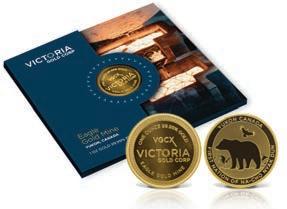
Victoria Gold has launched one-ounce gold and silver coins to honour its Eagle gold mine, the largest in the history of the Yukon. The coins are presented in a commemorative package, which features photos of the mine and celebrates Victoria’s valued relationship with the First Nation of Na-Cho Nyak Dun, within whose traditional territory the mine is located.
The mine lies on Victoria’s 100%-owned Dublin Gulch property about 375 km north of Whitehorse, Yukon. Annual production is estimated to be at least 200,000 oz. of gold annually. The mine life was recently extended to 2040 based on proven and probable reserves of 148 million tonnes grading 0.64 g/t gold for 3.1 million contained oz. in the Eagle deposit. CMJ
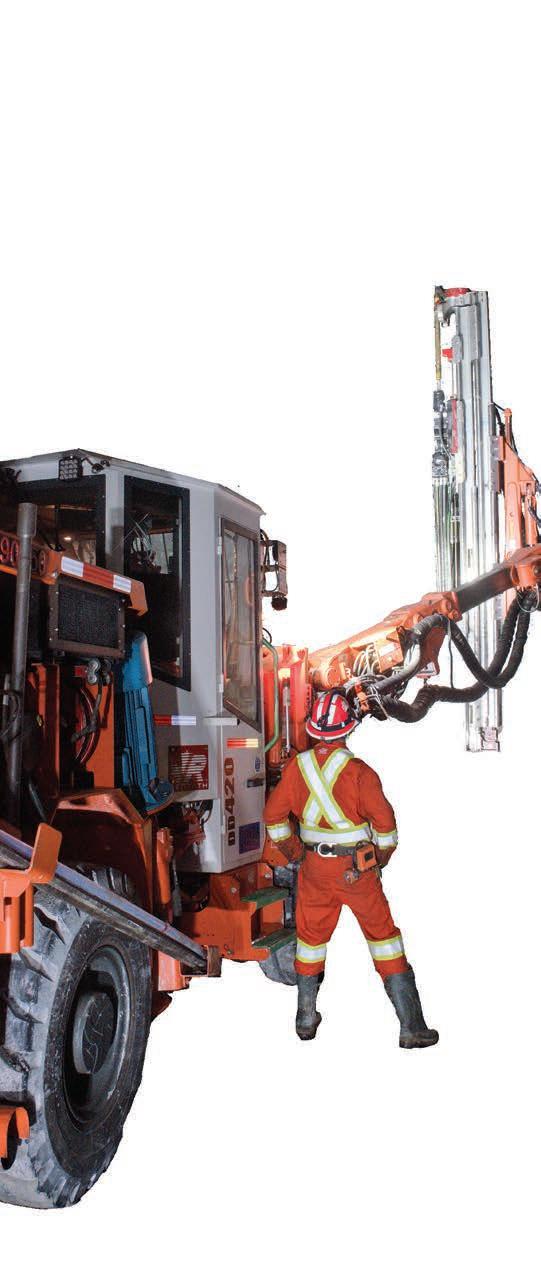

Coins commemorating the Yukon’s largest gold mine are available in gold or silver VICTORIA GOLD
• CONSERVATION | Taku River Tlingit declare Taku watershed protected
Following a series of community meetings, this week, the Tak’hu (Taku) River Tlingit First Nation (TRTFN) declared the Taku watershed an Indigenous protected and conserved area (IPCA) within their traditional territory.
The Taku watershed covers 1.8 million hectares and is the largest watershed on the Pacific coast of North America that is inaccessible by road. It contains five species of salmon and supports large mammal predator-prey relationships.
The Taku IPCA protects 60% of the Taku watershed, in hopes of preserving salmon rivers and spawning areas, and landscapes needed for wildlife, for clean water, and Lingít Kusteeyí (Tlingit way of living).
The remaining 40% of the Taku watershed is identified as specially managed landscapes which include areas with high mineral potential, where the Taku IPCA provides opportunities for clean mineral extraction and other uses that support a low carbon economy.
“Taku River Tlingit have a sacred relationship with our territory, reflected in the concept of Lingít Kusteeyí, which encompasses caring for all life. The declaration of the IPCA is an extension of this commitment to forever care for the fish, wildlife, waters, and all other life and spirits within Taku River Tlingit Territory,” said Jìnìk (Charmaine Thom), spokesperson for the Taku.
“The new IPCA establishes a fair, responsible and respectful framework for Indigenous leadership, reconciliation, economic certainty, environmental protection, climate resilience, and wild salmon conservation and restoration,” said Jìnìk. CMJ
8 | CANADIAN MINING JOURNAL www.canadianminingjournal.com
FAST NEWS
DEEPLY INVESTED IN MINING.
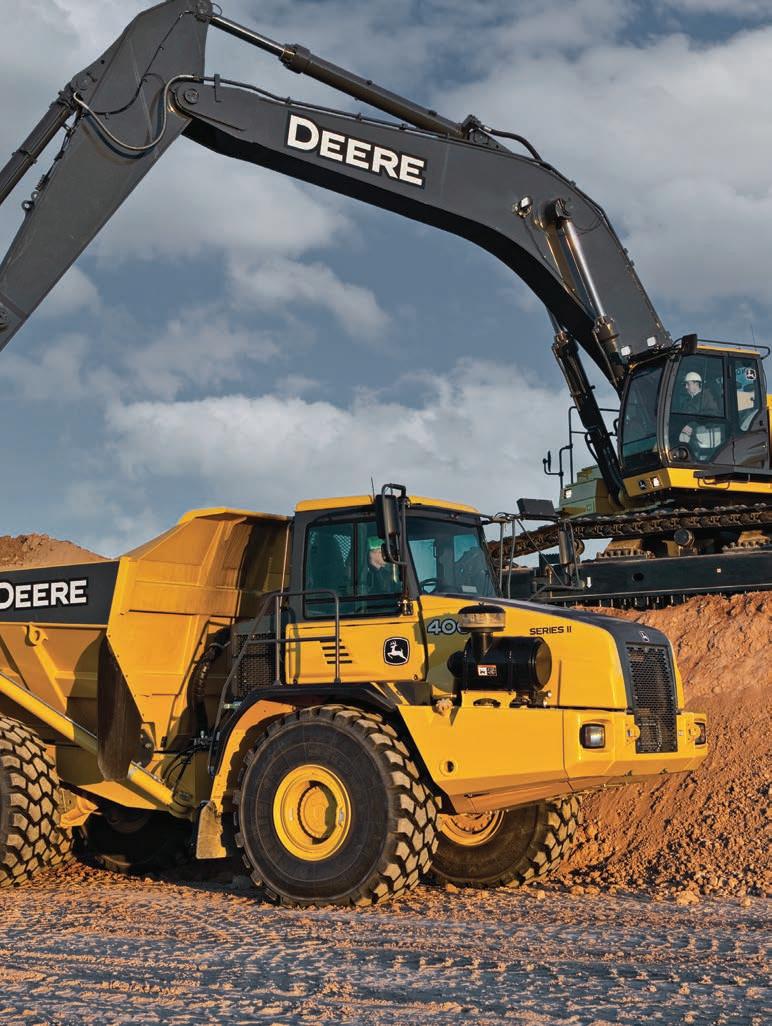

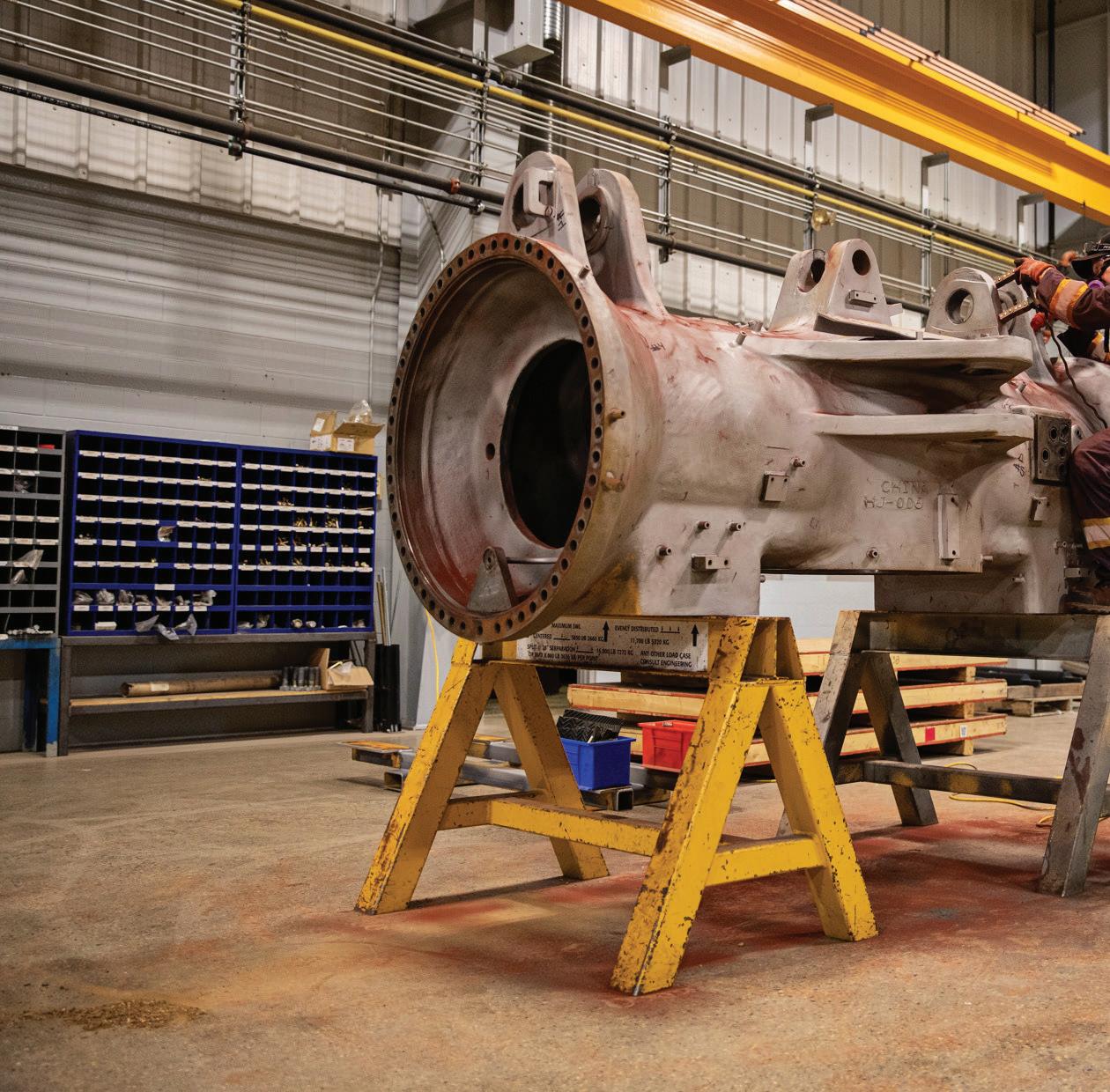
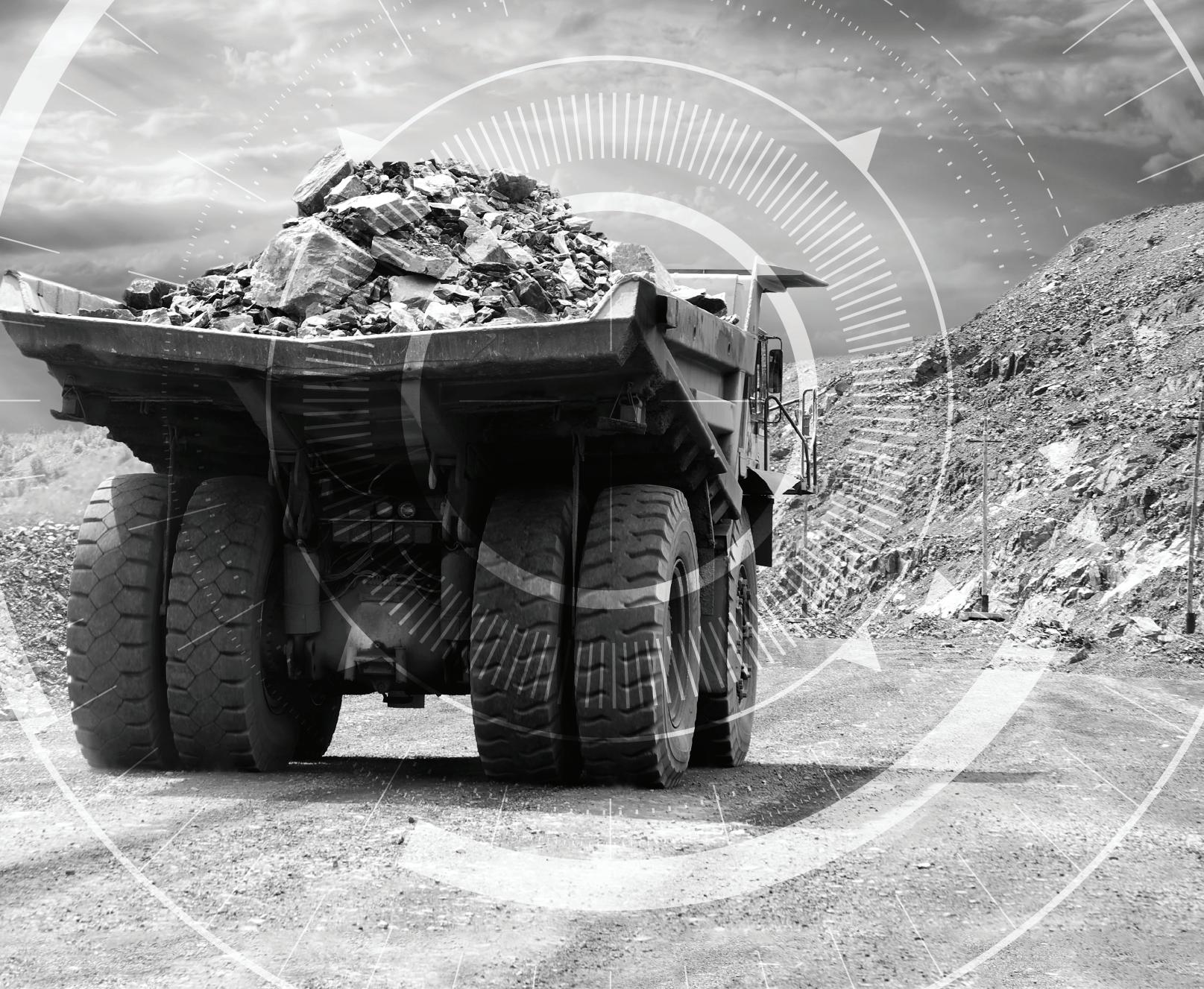
 By David Baker, Stephen D’Esposito, and John Thompson
By David Baker, Stephen D’Esposito, and John Thompson
Using a regeneration lens: mine waste becomes a resource
PART 2
Regeneration is an energy transition start-up that produces biodiversity, community, and climate positive minerals for the energy transition, green technology, and sustainable brands through re-mining, reprocessing, and restoration.
If the primary targets are legacy and historic mine and mill sites, there should be an emphasis on critical mineral production and the utilization of these sites for biodiversity restoration, renewable energy production, and carbon sequestration. Here, we explore the interdependence of site strategies, technologies, and policy innovation that contribute to our approach. We believe these have industry-wide relevance.
Legacy and historic mine sites, and mine and milling waste, can become environmental and community assets.

Start with a new vision for legacy mine sites
A nature positive development company would have two main functions: re-mining and restoration. Tailings, milling and processing residues, waste rock, and mine impacted waters represent oppor-
tunities to recover metals and minerals as well as create new products. With this in mind, people should take a fresh look at mining and milling waste.
A key objective is to finance restoration with revenue from minerals and, where possible, both renewable and nature-based products and outcomes. This is a different approach from the purely commercial re-mining and reprocessing of mine and milling wastes.
Achieving that objective requires assembling a portfolio of sites with the potential to create lasting value for communities and partners. For each site, work to create a coalition with a shared closure vision.
Characterizing the waste and identifying its potential value is one critical element.
An intensive focus on technology
helps us unlock residual value. Always seek the best recovery technologies (existing or new) that fit the challenges of the site and are scalable to a production rate not necessarily defined by traditional economic metrics.
Envision, design, and implement a clear path to a rehabilitated site that meets the needs of communities and governments.
Site assessment lens filters for net positive outcomes include the following:
> Improved post-mining environmental outcomes that effectively reduce site liabilities.
> Community support for and benefits from post-mining land use.
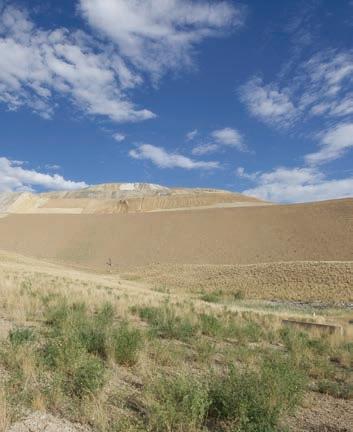
> Production of strategically important critical metals and minerals.
> Meeting the needs of downstream partners to source responsible metals and minerals.
For each site, the case presented to an investment committee should be unique and may include metal production, new products from waste, and other revenue streams aligned with our public benefit goals including value from biodiversity
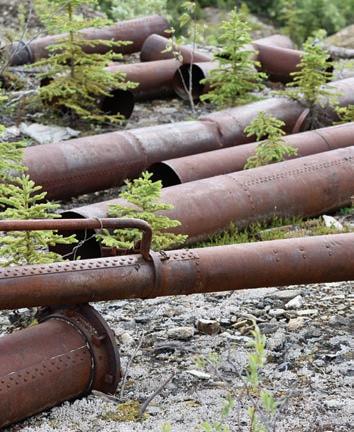
10 | CANADIAN MINING JOURNAL www.canadianminingjournal.com
ESG
From left to right: Initial restoration results at Sulphur Creek, Yukon, Canada; mine tailings in western U.S.; equipment from legacy placer mines, Alaska CREDIT: D’ESPOSITO/REGENERATION
and carbon credits, environmental and closure services fees, and liability reduction. Depending on the site, maximize value through the inclusion of renewable energy production, carbon sequestration, water management, agriculture, and other economic opportunities.
Good methodology, informed by sitebased learning, can be a catalyst for reducing the inventory of abandoned and legacy mine sites.
No longer will legacy sites suffer from minimum levels of compliance, nor will these sites simply be ‘managed.’
Legacy sites as technology incubators
There is a market gap. A rush of new technologies need access to mine sites for ground-truthing and testing. There are also proven technologies that can be re-applied to waste. However, access to sites is difficult.
The mining sector is not kind to innovation, where a “willing to test, fail, and try again” mentality is essential.
It is challenging for mining majors to support small scale trials, and potential liability issues can be prohibitive, creating an obstacle for technology innovators.
Mining juniors are trying to develop specific projects. Utilizing new, unproven technologies can lead to investor skepticism.
Proponents of new technologies can be viewed skeptically as trying to pitch one technology or system, even where an alternative may be better suited.
In fact, a focus on just one technology would narrow both market and impact because different sites require varied technology solutions. This can be solved by partnering with a range of technology providers, matching the right innovations with the right problems.
The use of proven and emerging technologies does not prevent the application of new technologies throughout the mineral extraction value chain, including those for waste characterization, material handling, processing and recovery, Products, waste management, reclamation, water treatment, and CO2 management.
Technology developers should have access to mining and milling sites to trial, verify, and validate their technologies.
For example, as a technology ecosystem partner, we are currently testing the application of an emerging technology, partnering with its developer to reduce the volume of bauxite residues.
An enabling policy environment
Working within the current regulatory context and seeking policy innovations will accelerate improved community and environmental outcomes while producing minerals for the energy transition. Policy, regulation, and voluntary standards can be modernized to support these goals.
Full value mining, optimizing the efficiency of extraction and production, at legacy, historic, and operating mine and mill sites should be incentivized.
Policies that support the use of proceeds from re-mining to restore and close abandoned mine sites are in the public interest. The community is better off and restored sites support the biodiversity goals of numerous governments.
Because these sites can produce carbon and biodiversity benefits, support for accessible credit and offset markets, including the development and use of transparent, credible tools to support these transactions, is essential. Tools and transparent markets will bring value for Indigenous governments and communities.
Communities can benefit from responsible sourcing and procurement standards that go beyond de-risking supply chains by rewarding minerals produced from re-mining and reprocessing, especially where restoration takes place. Through partnerships, new standards for restoration, re-mining, and Indigenous participation can be developed and tested.
To ignite a start-up culture and smart risk-taking, legacy sites can be treated as innovation and technology laboratories with tax incentives, grants, and funding for local and business partnerships. Some sites can be supported to test re-mining methods, develop biodiversity credits, and deploy renewables and green energy infrastructure.
This approach can support development efforts in countries with mineral resources. Sharing these strategies and tools with support from development agencies can strengthen and support development goals and enhance critical minerals supply chains.
Where governments are considering procurement policies and incentives that support the circular economy, definitions should include pre-consumer circularity, like products from metals extracted from mine waste.
Achieving an impact
This model requires us to build on mining’s traditions (the love of exploration, the value of discovery, and a hyper-focus on safety), ignite a start-up culture and thirst for innovation, and empower our restoration visionaries, whether in the profession or communities. CMJ
David Baker is the chief operating officer, Regeneration. Stephen D’Esposito is the founder and CEO, Regeneration. He is also the president of Resolve. John Thompson is the chief innovation officer, Regeneration.
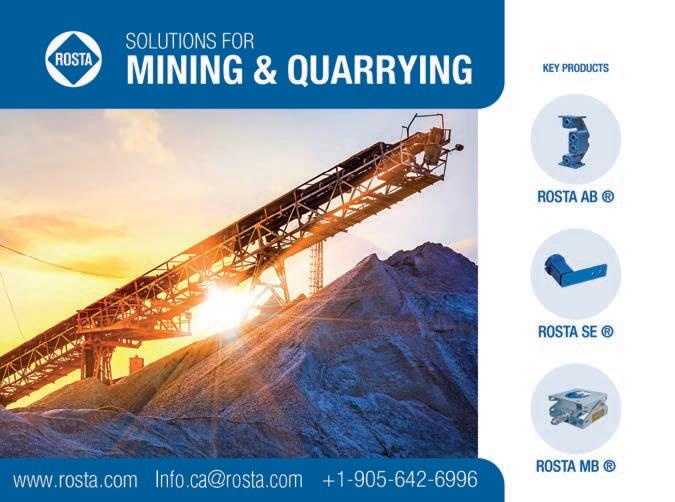
FEBRUARY/MARCH 2023 CANADIAN MINING JOURNAL | 11
How does innovation in mining accelerate ESG goals?
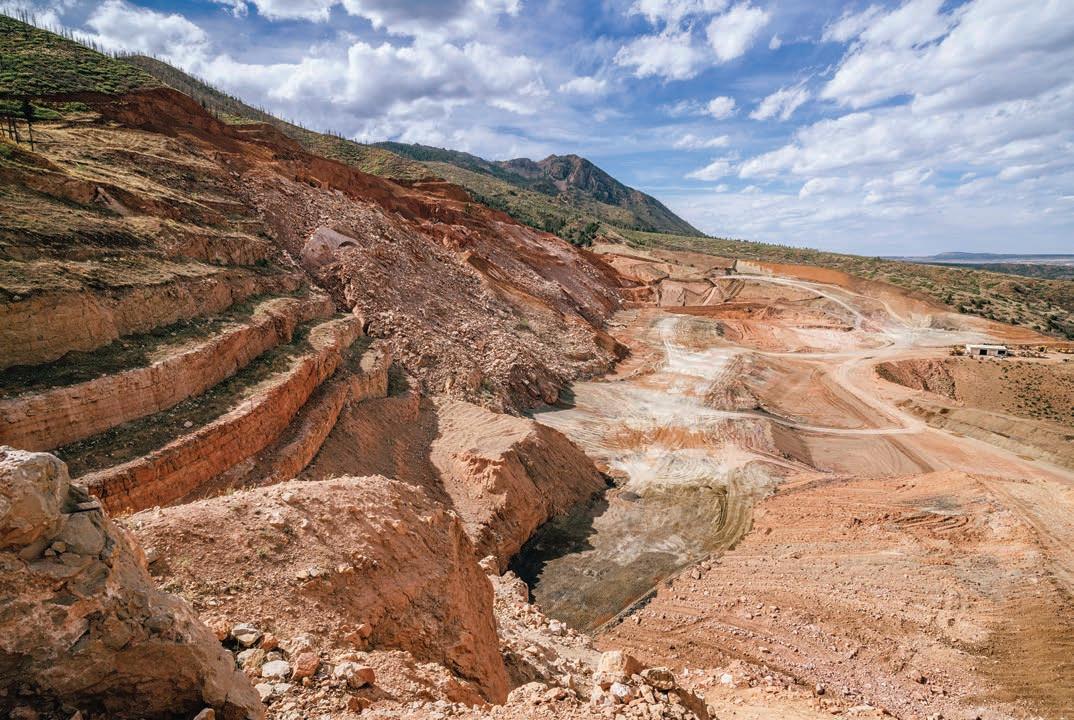
While the global community of investors, political leaders, and regulators raise the bar for mining, the innovators and engineers are answering the challenge. An increased focus on mining means tremendous potential for transformational change from emerging and existing solutions. Mines can, and should, be designed with an energy transition profile in mind, meaning the construction and operation must be able to meet the future energy needs. The time for dreaming and waiting is over.
1. Leveraging remote operation
Remote technology already exists to be able to control loadhaul-dump machines from a surface control room or from an operating centre that is hundreds of kilometers away. Control rooms are often used for dewatering, hoisting, and material handling oversight. Beyond on-site control centres, we can also pair remote data collection and analytics within a business centre for globally distributed operations and facilities. This allows us to gain insight into an entire, integrated mining entity. Remote operation is used in all stages of the mining lifecycle,
not only for remotely driving trucks and LHDs at a mine site. At the milling and refining operations, there are opportunities to work virtually and monitor in real time. Remote operations allow site personnel to gather data for off-site specialist support, including use of augmented reality to troubleshoot and assist an operation from anywhere in the world. For example, we use a combination of photography, digital records, and location (geographical information system GIS) to remotely collect data and monitor conditions at a tailings pond site in Washington, U.S. This level of efficiency is a huge contributor for both safety and ESG in mining.
2. Utilizing real-time knowledge
Next generation operations must include cloud platforms, wireless communications, edge computing, artificial intelligence, and robotics capabilities. Real-time or near-real-time data for
12 | CANADIAN MINING JOURNAL www.canadianminingjournal.com ESG
Mine closure and rehabilitation is complex. Closure panning software, like PRAC, can help mining companies chart a closure plan and manage multiple sites across a portfolio CREDIT: STANTEC
process optimization, analytics, and autonomous decisions will come together. Plug and play capabilities will be the norm. Short interval control allows operations to pivot and manage resources in an integrated operation, maximizing safety in productive workplaces. Workers access virtual data and digital information to perform work and to capture new routines for continuous improvement. All ground response and process data are captured and analyzed with simulation and optimization tools to directly feedback into designs for future design improvements.
3. Learning from other industries
We are seeing more partnerships and collaborations with niche technology providers and original equipment manufacturers. This is powerful because we can provide an extended range of innovative solutions to mining clients. Last year, we entered collaborations with technology companies to benefit engineering designs. Auxilium offers unique solutions to transform tailings into carbon-sequestering building materials. Renix offers a continuous ion exchange process for wastewater treatment to produce clean water and recover new value-added products. Companies like Auxilium and Renix help save water and energy, getting us closer to net-zero. Partnerships and collaborations can be difficult to navigate and take time to put into place. But mining as an industry can benefit from leveraging solutions in other industries.
4. Modernizing software
Though it might seem easier to consider sustainable options when a mine is being built, opportunities abound for mines that have been operating for decades. A software upgrade could increase both yield and safety. For example, we can automate parts of the system to increase efficiency. Automation and tracking of people and equipment is widespread for use in ventilation controls, energy management, and safety. Tracking can be expanded for supplies delivery (like fuels and tools) to allow management and control of goods while minimizing idle and downtime. This, in turn, enables optimal planning and scheduling of work. All inventories are logged and tracked with advanced analytics to improve processes and reduce bottlenecks.
After more than 35 years of working in mine closure, Stantec engineers created a closure software tool, called PRAC, which stands for progressive rehabilitation and closure. This software provides a systematic approach to closure by capturing all closure-related data within one location.

5. Recruiting the next generation of miners
The mines of tomorrow need people for jobs that did not exist 20 years ago. Even today, many mines rely on computer programmers, AI developers, automation specialists, and data scientists. On top of that, mines need support in new areas such as greenhouse gas emission audits and community and Indigenous engage-
ment. It is exciting to see Engineers Canada and the Canadian Academy of Engineers considering adding a new engineering discipline – the energy engineer – to specialize in the critical energy transition in all sectors including mining.
Generation ESG is the sought-after mining employee who is tech savvy and values protection of the planet. These employees are equipped to manage future mining operations and leverage multi-trade skills. They will combine electrical, mechanical, and IT knowledge to maintain the evolving equipment and systems. A key message in recruiting new mining employees is the focus on mining and its essential contributions to society. We need critical minerals and metals not only for our daily lives, but to enable us to build renewable energy sources and work toward a more sustainable future.
The next phase of mining
Using technology to our advantage helps us become more sustainable and responsible stewards of earth’s finite resources. The word “innovation” might mean something different to everybody. But the truth is mining companies must act now to discover, assess, and implement leading-edge solutions not only in their mines, but also processing plants and infrastructure. This metamorphosis is supported by a progressive industry with its new-age concept of “fail fast.” This means we must safely learn and adjust quickly to try to use fresh solutions to get us to the future state of mining sooner rather than later. The mining industry needs speed to ESG to achieve its own net-zero aspirations while supporting the sustainability of the planet with metals and minerals used in climate change solutions. CMJ
FEBRUARY/MARCH 2023 CANADIAN MINING JOURNAL | 13
By Samantha Espley
CREDIT: STANTEC
Samantha Espley is a senior mining advisor at Stantec.
Gathering data remotely is efficient and can improve safety due to various alerts built into the system. These alerts help with immediate response to avoid site emergencies which could pose environmental risks to neighboring communities.
Green technologies and geopolitics are on a collision course
 By Paul Triolo and Kevin Allison
By Paul Triolo and Kevin Allison
Technologies such as electric vehicles (EVs), wind power, and solar power are an important part of accelerating the transition to a low-carbon economy. However, these technologies are increasingly being drawn into geopolitical competition between the United States and China. Canada – with its abundance of natural resources, including critical minerals essential for making EV batteries, wind turbines, and solar systems work – is now applying a geopolitical lens to the sector in ways that will create risk and opportunity for Canadian firms and investors.
The latest evidence came on Nov. 2, 2022, when Canada’s federal innovation minister, François-Philippe Champagne, ordered three Chinese companies to divest their stakes in three Canadian mining companies. This was based on national security concerns. The companies are a Vancouver-based firm exploring for rare earth minerals in Ontario and two lithium mining companies with assets in Canada and Latin America. A few weeks later, the Canadian government published its new Indo-Pacific Strategy, in which it pledged to “[act] decisively when investments from stateowned enterprises and other foreign entities threaten our national security, including our critical minerals supply chains.”
To understand why critical minerals have become a geopolitical issue, it is important to understand their importance to the green transition and China’s role in this emerging technology ecosystem.
Supported by domestic policies designed to speed the electrification of China’s vehicle fleet, demand for EVs and EV batteries in China has soared. Domestic companies have capitalized on the opportunity. Today, 15 of the top 20 global suppliers of EV batteries are Chinese firms. Chinese companies have also built dominant positions in the global production of lithium used in lithium-ion batteries; graphite used in battery anodes; rare earth minerals such as neodymium, used in both EVs and wind turbines; and other critical materials for green technologies, including nickel, copper, and cobalt.
Chinese battery companies, led by global leader CATL, are rapidly expanding their presence in Europe and North America. Further upstream, Chinese-owned mining companies are extracting and processing critical minerals on a large scale across Latin America, Africa, and other regions of the world.
A decade ago, China’s increasing influence in critical minerals would have been seen as a natural outgrowth of its resource-intensive growth strategy. But as relations between China, the U.S., and other like-minded democracies have soured, China’s dominance of this strategic supply chain has sparked concern in Washington and, increasingly, in Ottawa. Beijing’s so-called “mask diplomacy” during the early days of the Covid-19 pandemic and the charge that Russia has used gas
supplies as an economic weapon in its war in Ukraine has fueled worries among some observers that China could use its dominance of critical minerals as an economic tool – or even withhold supplies in the event of a military conflict or other political dispute. The U.S. itself recently imposed export controls on semiconductor technology destined for China, and there is an ongoing debate about whether China might choose to retaliate via critical mineral exports.
Changing the footprint of the green-tech supply chain while also meeting soaring global demand for critical minerals will be difficult and expensive. Extracting and refining valuable resources like lithium and rare earths is capital-intensive. Mining and processing them can create toxic byproducts that must be carefully managed. Gaining buy-in from local communities and regional, national, and tribal governments for new mining projects is often difficult and politically fraught.
These are just some factors that will make it difficult for any one country – much less a group of like-minded allies – to attempt to re-shore large chunks of these complex supply chains. Without careful management, geopolitically driven efforts to reduce reliance on Chinese-origin inputs could create significant fissures across the supply chain, from mining to finished batteries, just as technology roadmaps are gaining traction and innovation is exploding across the industry.
Geopolitical shifts can create new costs, regulatory complexity, compliance burdens, and reputational issues for companies. The Canadian mining sector can play a significant role in encouraging and supporting geographical and supply chain diversity while urging governments to be clear-eyed about the costs and to avoid unintended consequences. The stakes for the planet are high.
CMJ
14 | CANADIAN MINING JOURNAL www.canadianminingjournal.com
LAW
PAUL TRIOLO is senior vice-president for China and technology policy lead at the Albright Stonebridge Group, part of Dentons Global Advisors. KEVIN ALLISON is vice-president for Europe and Eurasia and technology policy at the Albright Stonebridge Group, part of Dentons Global Advisors.
PHOTO: PEACH/ADOBE IMAGES
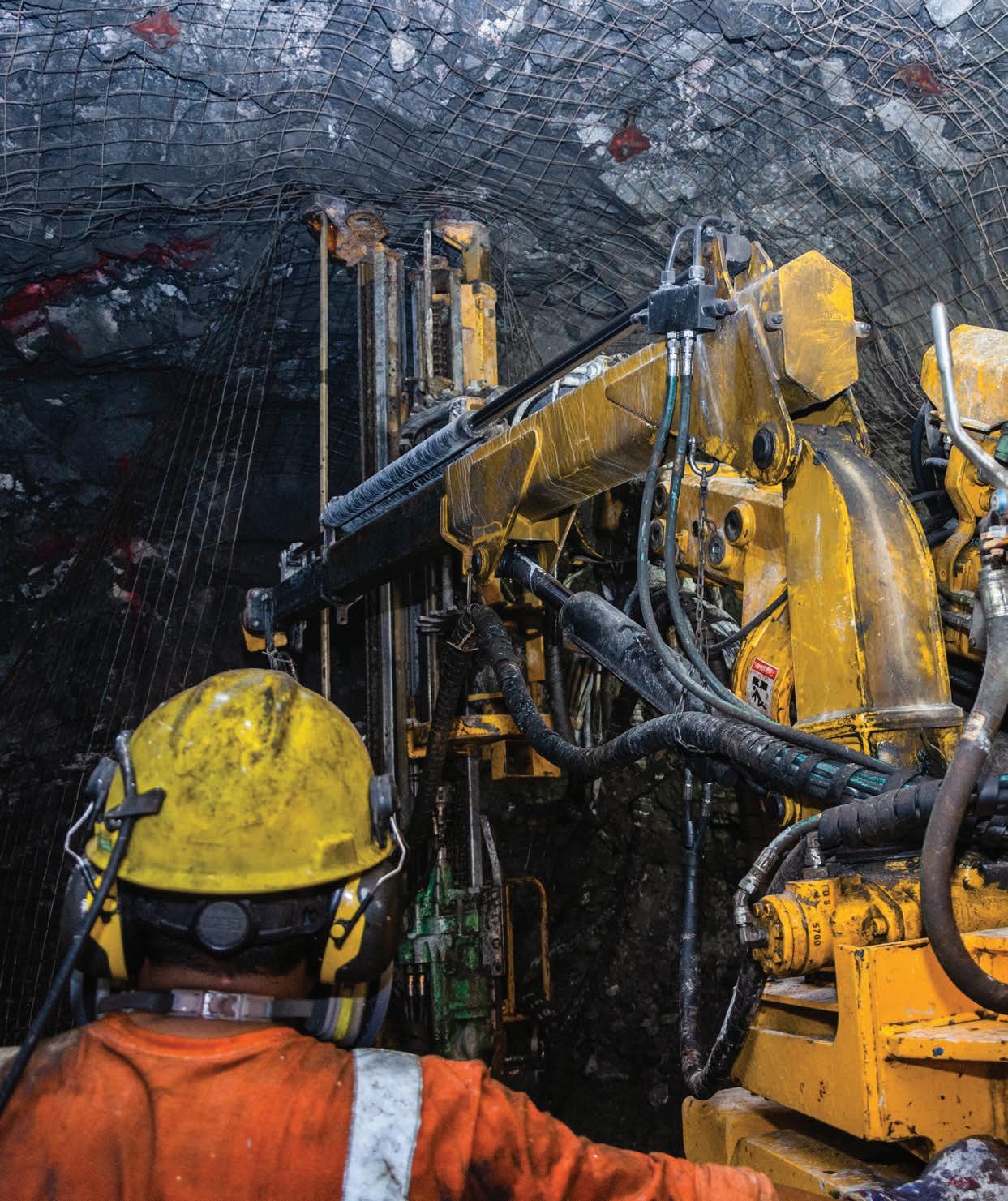

Hand protection for mining hazards 800-265-7617 superiorglove.com/mining
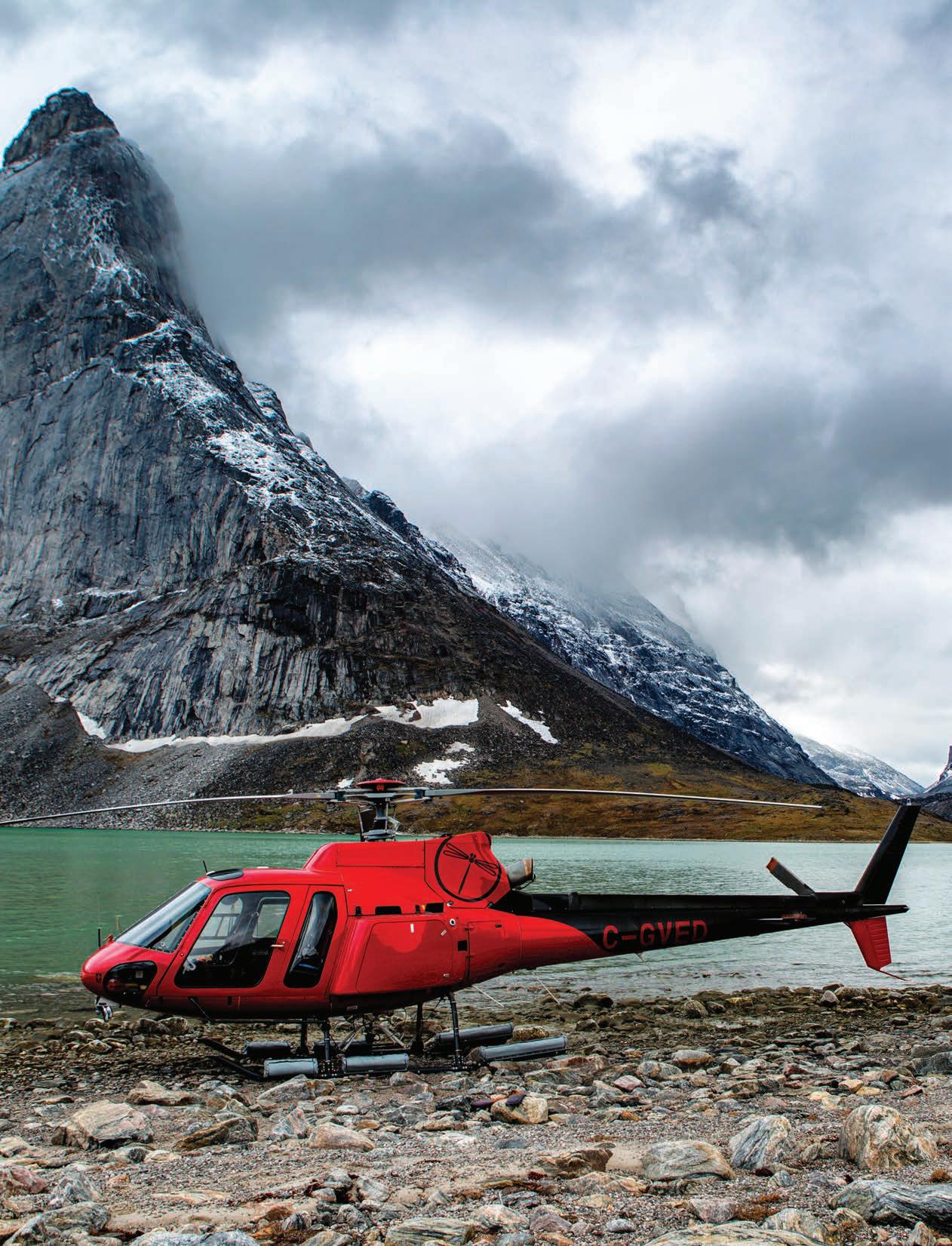

SUPPORTING MINING EXPLORATION FOR MORE THAN 20 YEARS www.helicopterespanorama.com Business Development Director jcarrier@panoramahelico.com 418-321-2097 Québec (Alma) 418 668-3046 | Nunavut (Iqaluit) 888 288-3046 | Alberta (Grande Prairie) 888-288-3046 SERVICES Mineral Exploration Aerial Construction Drill Moves Airborne Survey Geophysics Lake Sampling Thermography Photogrammetry Terrain Analysis And much more... FLEET AS 350 Series (5-6 passengers) D, BA, BA+, B2, SD2, B3 Bell 212HP BLR (14 passengers) Multiple drone platforms Infrared and long range cameras
By Dan Clayton
Whether it is the distant sound of a highway, a busy street abuzz with people, or a river flowing through a park, we often do not think twice about the sounds we hear every day.

On the contrary, sounds of an industrial nature (like those produced by mining, manufacturing, and other heavy industries) have the tendency to command our attention and oftentimes, stir our frustration.
But why is that? It usually comes down to a few common characteristics that industrial facilities share.
Take, for example, a surface mine site. These sites often have intermittent sound sources that do not continuously operate but rather turn on and off with sound levels that vary. You will also hear many sounds designed to grab your attention in a busy mine environment, such as reverse safety beepers on equipment like loaders, trucks, and bulldozers. Other instances might include emergency blasting sirens and associated public address systems and loading facilities including rail yards and movements. Some sound sources also have irritating spectral characteristics, such as tones and strong low frequency components, which people can be sensitive to. Each of these factors makes it difficult for people to subconsciously block out the sound.
Historically in Canada, mining and industrial areas have been situated away from residential properties. However, that is changing year after year, as those areas expand and encroach on one another.
Here enters the noise clash. And no, that is not a new band name.
Are the regulations and bylaws ready?
The short answer is no, especially for mining sites.
For eastern Canada, in provinces such as Ontario and Quebec,
the regulations are more present for mining operations. But, as you head west, things get a bit sparse and unregulated for both sound and vibration.
In British Columbia and Manitoba, there are no requirements to assess sound or vibration from mining operations unless an Environmental Impact Assessment (EIA) is required. Even then, the methods to be used are outdated and inconsistent.
In Alberta, some mine types are regulated but many key types, such as sand and gravel pits, are not. Operations of both current and proposed pits have been increasingly contentious with neighboring residents in recent years.
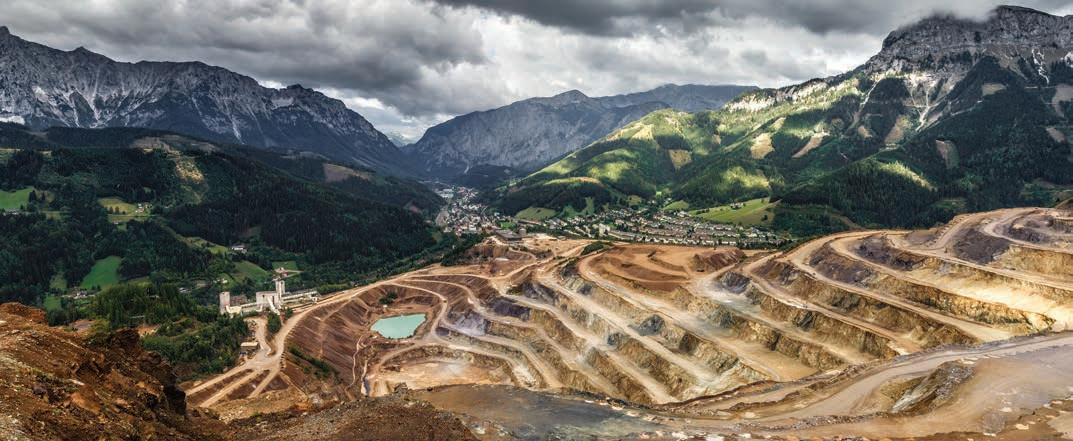
Many mining operations do not trigger an EIA, but still have the potential to cause a disturbance due to sound and vibration. Especially those that are governed by municipalities with bylaws or policies with criteria that are too lenient or inappropriate for the location.
Mines that are assessed are often using outdated evaluation parameters like average sound as opposed to other metrics that more accurately account for time-varying sound sources.
Will the bylaws cover it?
Many bylaws are designed for the sound generated by residential activities and can often explicitly exclude any regulation of industrial sound. They will often have a statement that says something like, “No person shall make or cause, or permit to be made or caused, any noise in or on a street or elsewhere in the city that is liable to disturb the quiet, peace, rest, enjoyment, comfort, or convenience of individuals or the public.”
If you think about it, you could argue that most sounds we hear can disturb the quiet, peace, rest, enjoyment, comfort, or convenience of individuals or the public. So, this kind of bylaw has no practical application and is very hard to enforce.
FEBRUARY/MARCH 2023 CANADIAN MINING JOURNAL | 17
PHOTO: SLR CONSULTING ESG
»
WHAT’S ALL THIS
There are often no objective or quantifiable criteria to reference. Those that do exist typically only refer to absolute levels. However, annoyance is more closely linked to the difference between the sound level of the source in question compared to the ambient sound level without it at a receptor location. Evidently, whether sound is reaching that absolute threshold or not, residents are suffering.
Areas that have no regulation for mining operations will often rely on noise or vibration complaints to assess whether there is an issue or not. The “let’s deal with it later” approach.


The problem with this approach is that once someone has got to the point where they complain about or are irritated by a sound, the sound needs to be attenuated much more to be acceptable compared to a person who is not at that point. In this way, dealing with complaints from noise and vibration costs businesses time and money that they would not have needed to spend had they took a proactive approach to mitigation in the first place.
The need for mines is increasing, especially for key manufacturing metals for things like electric vehicles, solar panels, and consumer electronics, and infrastructure requiring sand and gravel.
With this pressure, mine sites are being situated nearer to residential properties, and areas where sensitive wildlife and Indigenous people’s land uses are located. So, noise and vibration clashes from these sites to these surrounding uses are
becoming more common, putting stops to important projects that are feasible in all other ways.
A lack of regulation is sometimes the preference. But if you live near a mine site that is not regulated for sound or vibration or has not got an effective management plan to control these emissions, then you will welcome new regulations. This works both ways. For mining operations, lack of regulation of sound and vibration leads to ambiguities and uncertainty, which causes time delays and additional costs to resolve, if they can be resolved at all. Municipalities are confused, residents are angry, and owners and operators are frustrated.
There are no goalposts, and that does not work.
How can we solve this problem? More proactivity, consistency, and clarity are needed. A sound and vibration assessment road map would be beneficial, including things like more consistency in the methodology, assessment criteria, and requirements for the management of sound and vibration from operations across the country.

The next step is for operators and regulations to consider noise and vibration at an early stage in feasibility and permitting stages of a project. If this is you, then consider involving an acoustics and vibration consultant in your project sooner than later. How does that sound? CMJ





18 | CANADIAN MINING JOURNAL www.canadianminingjournal.com
ESG
SERVICING THE ABRASION RESISTANCE MARKET SINCE 1988 www.sprs.ca Technocore® GMAW wire field version of "brazing" rope Top Performing Tungsten Carbide "brazing" rope Field replaceable weld-on wear tiles for augers Multipurpose weld-on wear bars 1/2" thick rope overlay on 1" mild steel bars MEMBER OF EDMONTON, ALBERTA CANADA Contact Patrick@sprs.ca
Dan Clayton is the technical discipline manager of the acoustics and vibration team at SLR Consulting Ltd.
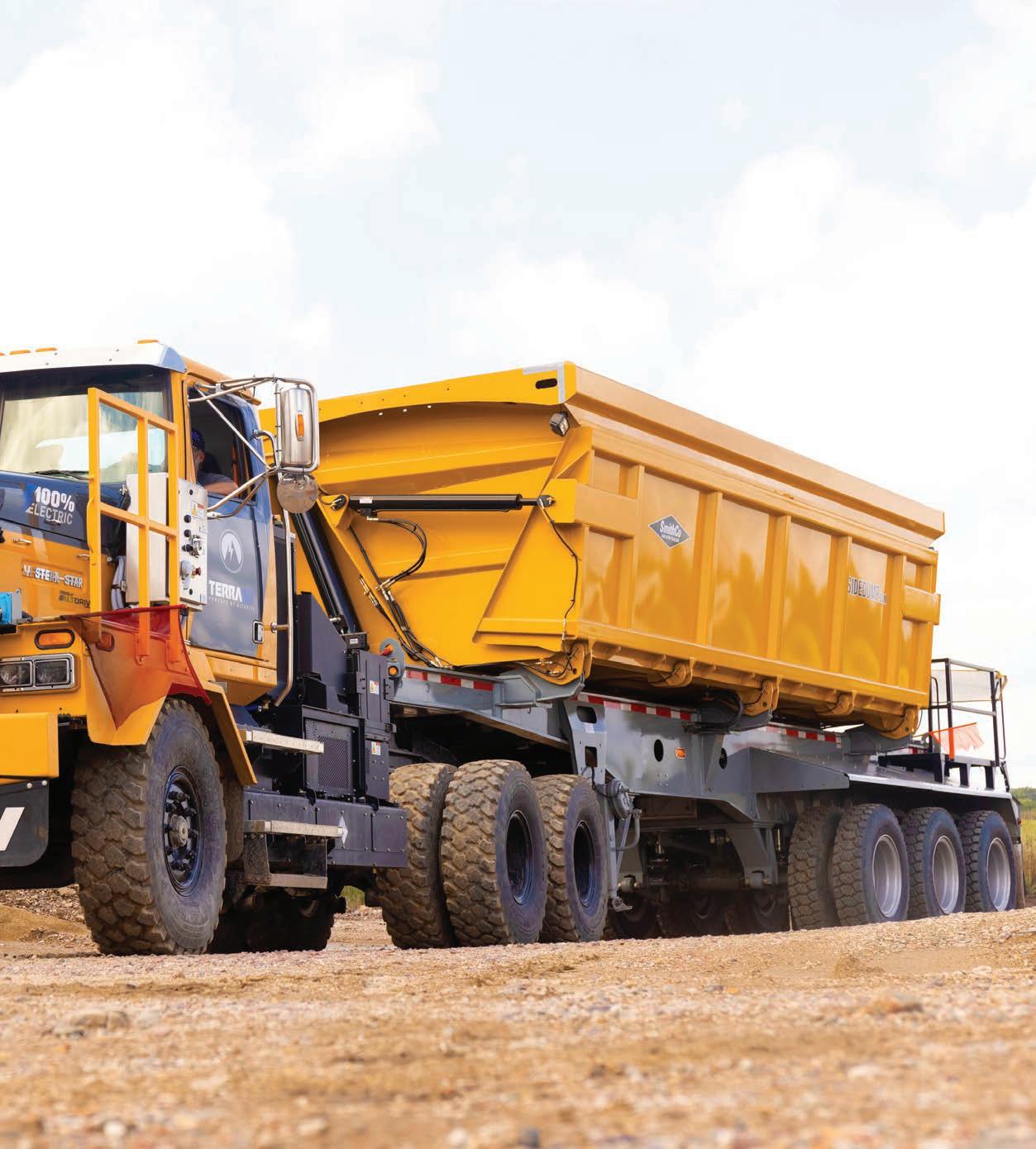
sidedump.com/ce 800-779-8099 Learn about our cost estimator Lower Cost, Higher Returns Moving more efficiently in the most challenging environments for 20 years.
Salt (NaCl), a nutrient vital to all animal life, is an important natural resource especially in southwestern Ontario. Canada is one of the world’s largest salt consumers thanks to its harsh winters, and Ontario provides substantially more of this salt than all other provinces combined. Most Canadian salt is commonly mined via underground room-and-pillar methods and is used to de-ice roadways. Table salt, chemical raw materials, and other end uses also represent major portions of overall consumption. The later products are most often produced via solution mining, where fresh water is injected via wells into buried salt deposits to recover a salt-saturated brine. Solution mining also yields valuable underground caverns, often used to store hydrocarbons after salt production ends.
As mineral resources, the development of salt deposits into new mines generally entails an iterative evaluation process like that of any other mineral deposit, beginning with discovery and scoping-level economic analysis. However, salt deposits are more widespread than most and relatively cheap to extract, a defining characteristic that salt shares with other ubiquitous minerals of economic interest. As with mining other common minerals, transportation costs often form a substantially larger portion of overall operating costs when compared to mineral commodities of higher value. But the mining costs associated with producing salt via room-and-pillar methods can often form a major portion of the overall operating cost, too. And the cost to process salt-saturated brines into table salt can be quite high. Not giving due consideration to these costs during the economic analysis of salt development projects brings with it the potential for poor decision making. To make more relevant investment and development decisions, salt mining and processing costs should be estimated realistically and included in all economic analyses from the first evaluation onward.
To demonstrate the relative magnitudes of these salt mining and processing costs relative to transportation costs, Costmine has modeled the cost of two 2,000-t/d salt mining scenarios. A representative room-and-pillar mine accessed via a 350-metre
The cost of
By Sam Blakely
shaft was modeled alongside a typical single-well solution mine of the same production rate. A 2,000-t/d vacuum pan evaporation plant, to produce table salt from salt-saturated brine, was also modeled to offer a more complete estimate of the cost to produce table salt via solution mining. The overall initial capital cost and average life-of-mine production costs from these models are presented below.
We can see that the transportation cost estimate is clearly our largest operating cost, but the estimated cost to process brine into table salt is also considerable and is within 20% of our transportation cost. While the estimated solution mining operating cost is small from almost any perspective, room-and-pillar mining costs represent about 20% of the overall operating cost in a scenario of mining and shipping rock salt.
The above cost does not include the initial capital expenditure nor the costs of marketing and packaging required before profitable production can be achieved. These costs are considerable and should always be considered before investment or development decisions are made. What has been presented above does demonstrate that, even when shipping costs are relatively high, the costs of production can still be substantial and must be duly considered during project evaluations. CMJ
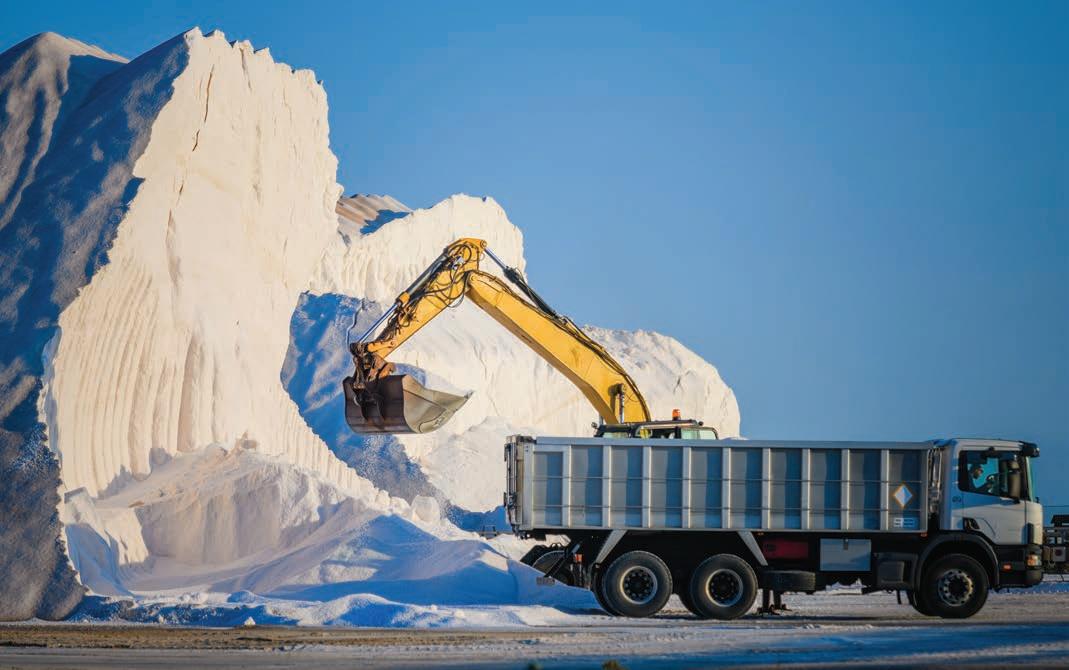
20 | CANADIAN MINING JOURNAL www.canadianminingjournal.com
COSTMINE
Sam Blakely is a senior mining engineer at Costmine, a division of The Northern Miner Group.
Item Average operating cost (US$/tonne salt) Room-and-pillar mining $ 61.44 Solution mining $ 6.05 Processing plant $ 211.37 Transportation* $ 255.00 *1,500 miles via rail ($0.17/tonne/mile) salt
Salt mining CREDIT: ALEXANDERKONSTA/ADOBE STOCK


Challenging the status quo
Jamile Cruz (JC) is a recognized, award-winning industry leader. Her passion for empowering people and driving equity and inclusion led her to create I&D 101, with the goal of creating inclusive spaces that support all talent.
Recently in 2022, Jamile has been recognized in Women in Mining UK’s “100 Global Inspirational Women in Mining (WIM100),” which is an initiative that celebrates women who have made inspiring contributions towards a stronger, safer, and more sustainable mining industry during her extensive volunteer experience including her roles as founding director of Women in Mining Brasil (WIM Brasil), as a former board member for Women in Mining Canada, as the board member of the Brazil-Canada Chamber of Commerce and D&I Committee Chair. With International Women’s Day (IWD) approaching on Mar. 8, I had the opportunity to discuss several issues related to the role of women in mining with Jamile Cruz.
CMJ: Tell us about your background; how did you start working on diversity and gender equality?

JC: I was born in a city called São José dos Campos in São Paulo, Brazil. My dad worked, through our childhood and adolescence, CONTINUED ON PAGE 24
Jamile Cruz, founder of I&D 101, holds a project management professional designation, a master’s certificate in project management, and a bachelor of engineering degree. Jamile is also the recipient of the 2021 Business Changemakers award by the Globe and Mail and the 2020 Canadian Institute of Mining distinguished lecturers award. She has 20 years of experience in transforming high-performing organizations through the creation and implementation of strategies to reduce operational costs and achieve business goals across multiple industries, including mining, design engineering, and management consulting, working directly for Hatch, Vale, and Accenture, and serving as a board member and chair of the ESG Committee for ATEX Resources, a Latin America-focused exploration company. Jamile has recently accepted a role as director of joint ventures and Brazil country manager with Rio Tinto.
22 | CANADIAN MINING JOURNAL www.canadianminingjournal.com
WOMEN IN MINING
An interview with Jamile Cruz, founder of I&D 101
Founded in 2018, I&D 101 is a consultancy specialized in inclusion and diversity strategies. It was created to strengthen the performance of organizations by unlocking the potential and creating spaces that are inclusive to the participation of all talent, setting new trajectories for innovation and value creation. The company aligns the diversity strategy with business goals and works to activate organizational leaders to shape inclusive cultures that enable superior business results. Although Jamile has recently moved to a strategic role with Rio Tinto, I&D 101 continues to deliver its vision supporting multiple organizations under new leadership.


FEBRUARY/MARCH 2023 CANADIAN MINING JOURNAL | 23 ByTamer Elbokl, PhD
as a technician in the oil and gas industry in Brazil. So, my entry into the technical world, or refinery world, was through him. The company ran summer camps during which we always had the chance to visit the refinery in my city.
Growing up in a lower middle-class family, you see engineering as a way of building the structure you need in your life, so for my dad it was always important that we studied technical courses and then that we hopefully had the opportunity to do engineering or something similar.
I studied high school mixed with a technical degree (you would start at the age of 15 and by 18, you had a profession). I studied a telecommunications course sponsored by Ericsson. They built the laboratories at school and donated the equipment, and some of the technicians and teachers worked for Ericsson. I finished my degree in electrical engineering while working as a technician for Ericsson.
After I finished engineering, I signed up for an exchange program by Hatch Canada to bring engineers from Brazil to Canada and ended up getting into mining. In mining, you learn something new daily, and I am someone who needs that excitement and needs to be learning new things.
Then, I ended up joining a fertilizers group, so I moved to Regina, Sask. for a few years. Later, there was an opportunity for me to switch to management consulting. So, I joined Accenture to work on the issues of the mining world, capital projects, and investment reviews. It was 2014 when we started discussing the theme of diversity, equality, and inclusion (DE&I). So, we sent an abstract to the 2014 CIM meeting in Vancouver, and it was
accepted. From there, the conversation became part of my everyday life and soon enough I was dedicating all my time to figure out solutions to improve DE&I at organizations.

In 2020, I received the Canadian Institute of Mining Distinguished Lecturers Award in recognition of my work developing inclusive workplaces, especially in mining. In addition, I was a recipient of the 2021 Business Changemakers Awards by the Globe and Mail.
CMJ: When did you start becoming interested in inclusion and diversity training, and how did you start I&D 101?
JC: I left Accenture and started I&D 101 in the middle of 2018, so we just celebrated our fourth anniversary. I was with Accenture when I started talks around DE&I just because the topic needed to be addressed. So, I started participating more in conversations with clients and with other people to discover how they were approaching this, how they see this change, and whether they understand that this needs to be intentional, and investment needs to be there or not.
At the time, Accenture announced their goal to achieve gender balance by 2025. As a woman in a technical group at Accenture, my first question was “how?” So, we started working together on the model and how that would be possible. Meanwhile, I became close to the leadership in Canada and ended up getting the role of inclusion and diversity lead for Accenture Canada.
Traditional Water Management Is Eroding Project Value
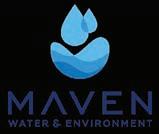
You need passive, semi-passive, or enhanced passive treatment and source control strategies integrated to your traditional water treatment.

24 | CANADIAN MINING JOURNAL www.canadianminingjournal.com
started with a free site
Get
assessment
Find out how Technology Readiness
(TRL)
with modernized Best Achievable
(BAT) assessments can reduce
expenditure. Simplify your water treatment strategy Streamline your permitting Decarbonize your mine
Levels
combined
Technology
operational
WOMEN IN MINING
1 Inclusive practices for career opportunities.
2 Respectful workplaces.
3 Ability to reconcile work with personal commitments.
4 Signs and symbols of gender inclusion in the workplace culture.
5 An industry that is a magnet for talent.
6 Supplier diversity buying from women-led companies.
7 Investing in women in the communities where companies operate.
8 Developing the talent of the future – Investing in STEM (science, technology, engineering, and math).
While doing that work for almost 1.5 years, several clients started asking questions on how we were achieving results. I proposed that we needed to do this for our clients. And it was a challenge to start a smaller market concept in a big organization. So, I decided to leave Accenture and start I&D 101. They were super supportive from the beginning. I think they understood this work needed to be done everywhere.
With a dynamic approach to mindset and behaviour change, the initial diagnostic identifies challenges, guides the co-creation of practical solutions with a focus on systems and process design, set to engage, empower, and improve organizational performance, from leadership to front-line employees.
CMJ: How did you get involved with other organizations such as Women in Mining Brasil (WIM Brasil)? Were you one of the founding members?
JC: I was one of the directors of Women in Mining (WIM) Canada for two years. WIM Canada has an amazing project in collaboration with the government of Canada outlining the action plan for inclusion of women in mining. Through Canadian Consul Eveline Coulombe, I was introduced to Andrea Rabetim, who is a leader on volunteering and intersectoral articulation at Vale, and Rinaldo Mancin, a director of sustainability at the Brazilian Mining Association (IBRAM), a national private nonprofit organization that represents the companies and institutions that operate in the mining sector (like MAC in Canada), and we had a conversation about how important it would be to start a defined structure in Brazil.
So, I&D 101 was hired by IBRAM to develop the Brazilian version of an action plan in 2019, and then we launched the plan in 2020. But then through this process of getting the women to discuss the challenges and what needed to change, a lot of the women started coming to us and saying, “the brand should be Women in Mining.” In 2019, we established Women in Mining Brasil (WIM Brasil).
CMJ: Now after more than three years, do you feel that WIM Brasil is making a difference or a positive change?
JC: Yes, I believe so. I think one of the key things for me as a director is that we have pushed hard, and everybody worked together to develop an engagement plan that defined commitment from the organizations.
WIM Brasil’s value proposal is to build a new way of looking
at the Brazilian mineral sector, with respect for women at all levels of the organization and in all areas of activity, encouraging inclusive and diverse work environments, and encouraging the participation of women as holders of technical expertise, operational excellence, and innovative spirit. So, the action plan is developed as eight strategies: we talk about the talent life cycle, recruitment, promotion, and retention. The plan also talks about the need for companies to invest in technical and training courses and invest in the community with the lenses of women, because that is where the growth of a community really happens. Companies need to think about innovation from the diversity perspective. The plan essentially gives the companies a framework to educate themselves on where to start. It is like, here you go; here is the step-by-step plan. We guide them through the implementation of this plan. On a yearly basis, with the support of the consulting company EY, we review the KPIs with the participating organizations and suggest changes for people to understand it better. We run a survey, and the last one had 34 companies. With the results, we are able to provide feedback on how they compare to the industry average and recommendations on the next steps. It helps to create awareness on actions that have real impact.
We are about 41 signatory companies. Women represent only 15% of the workforce in the Brazilian mining sector, according to the first WIM BRASIL Indicators report. Now, 69% of the signatories have a diversity and inclusion program and 13% of the signatories reported investing in the professionalizaCONTINUED ON PAGE 26
DECARBONIZE Your Mine Sites and Save on Energy
The AgriPower clean safe Biomass and Waste-to-Energy Systems will be uniquely designed to provide the Electricity and Heat required at your Mine Sites across Canada and around the World.
The AgriPower units are fueled by the mine’s waste of paper, cardboard, and wood of all types, some plastics, and biomass from dead-dying trees in the area.
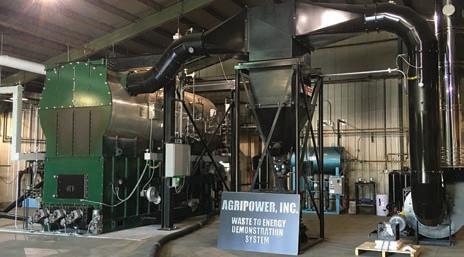
WE CAN PROVIDE PROJECT GREEN FUNDING.
We do not have a website as our projects are unique and held confidentially for our clients. Please email or call:
Garry Spence 1-519-631-6035
garryevergreenenergy@rogers.com

FEBRUARY/MARCH 2023 CANADIAN MINING JOURNAL | 25
WIM Brasil has eight systematic strategies to advance the participation of women in the Brazilian mining industry
tion of this untapped talent group. I am quite proud of this project, and I do think it is making a difference.
On the website (www.wimbrasil.org), we have an annual program report (WIM Brasil Indicators), where you can see the changes applied and the type of programs that can make a difference. The WIM Brasil Indicators is the first progress report from our action plan for advancement of women in the mining industry.
The report presents performance and maturity indicators of the diversity, equity, and inclusion strategies detailed in the action plan, the results of the research carried out with the signatory companies who are implementing this plan, and good practices that demonstrate that we can indeed create a more inclusive industry. We went through the effort of searching and presenting best practices and stories that could showcase the growth and inspire other companies to take action.
I think there is an evolution. We are still talking about a group of companies that are on the top layer of mining organizations. Brazil has more than 2,000 mining corporations, and we are talking about those that have about 70% of the production. Those are large organizations with well-structured HR groups and sustainability groups that can run this kind of exercise. We keep telling them that by doing this and participating in this group, they can help the smaller organizations to figure out that they need to do and share the lessons learned and take just what works by sharing the lessons learned and applying what works based on experiences and results.
CMJ: In your opinion, what can be done to attract more women to study mining engineering and or geology and join the mining sector, and what can the mining sector do in general to attract more women?
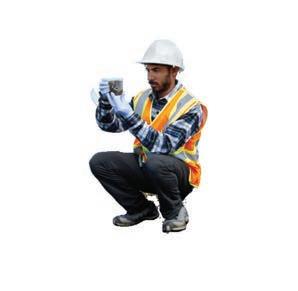
JC: Mining tends to be a low-profile industry. Meaning, the investment in external communications can be in the lower range. We invest in sharing information with surrounding communities but not in a more global perspective. We hardly talk about mining outside of industry forums.
We could move from low to medium or high profile and be more present in the media and other multi-sector forums talking about our projects, how we operate, what mining really is/does, and inviting more people to participate instead of reacting only when something (bad) happens.
Then, unfortunately, the image associated with mining is often not the most positive. We need to reach out to the public. It is about sharing the reality. This is how many people are employed, this is how geology works, this is what the engineering work can be, these are the innovative initiatives being developed to make mining more sustainable, and these are all the other groups and professions that are part of this industry. In addition, these are all the elements in everyday life that are produced by mining.
As I mentioned before, WIM Brasil has eight systemic strategies to advance the participation of women in the Brazilian mining industry. In general, I think there are elements there that people are trying, but it needs to be a combined effort. We need to have respectful and safe workplaces. Women should be allowed to reconcile work with personal commitments. We need to start seeing signs and symbols of gender inclusion in the workplace culture. The industry should be a magnet for talent; the mining industry needs to create greater interest in the industry with women at an earlier stage in their careers, investing in women in the communities where companies operate, and investing in STEM.
Generally, mining needs rebranding. A lot of the work we do is associated with culture. You can bring more people in, you can convince them, and you can give them decent salaries. The question is “are they going to stay?” So, when we talk about women, when we talk about different underrepresented groups, they need to walk in knowing that they are safe, psychologically and physically safe, and they need to feel empowered to stay, work, and grow in one place.
Sustainable Designs Innovative Thinking Responsible Mining
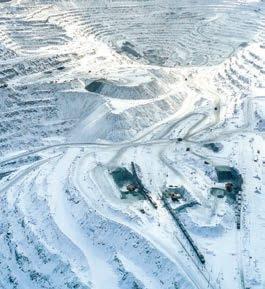
wsp.com/mining
In Canada, Women in Mining Canada has local branches in in Toronto, Montreal, and Yukon. This offers not only the networking aspect, but the tools for people who want to join the industry and the access to understand the realities of these work environments, as well as a potential support system that will guide them though many milestones in their careers.
At a certain point, you propose that diversity and inclusion are not problems to be solved. Business can only unlock the performance potential of a more diverse workforce by intentionally addressing diversity and inclusion as critical pieces of their business and cultural strategies.
CMJ: Do you think that the mining industry is currently presenting itself well to women?
JC: I think based on your previous question, the answer is no. There is a challenge to be addressed around culture, around the
26 | CANADIAN MINING JOURNAL www.canadianminingjournal.com
At WSP, pursuing a greener future inspires us to innovate and deliver impactful and sustainable solutions.
Be part of our team doing purposeful work in mining, solving the challenges of today, and tomorrow.
WOMEN IN MINING
mining brand, and the explanation of what it is. There is a lot of work to be done not just for the mining industry, but also for women who want to be in mining.




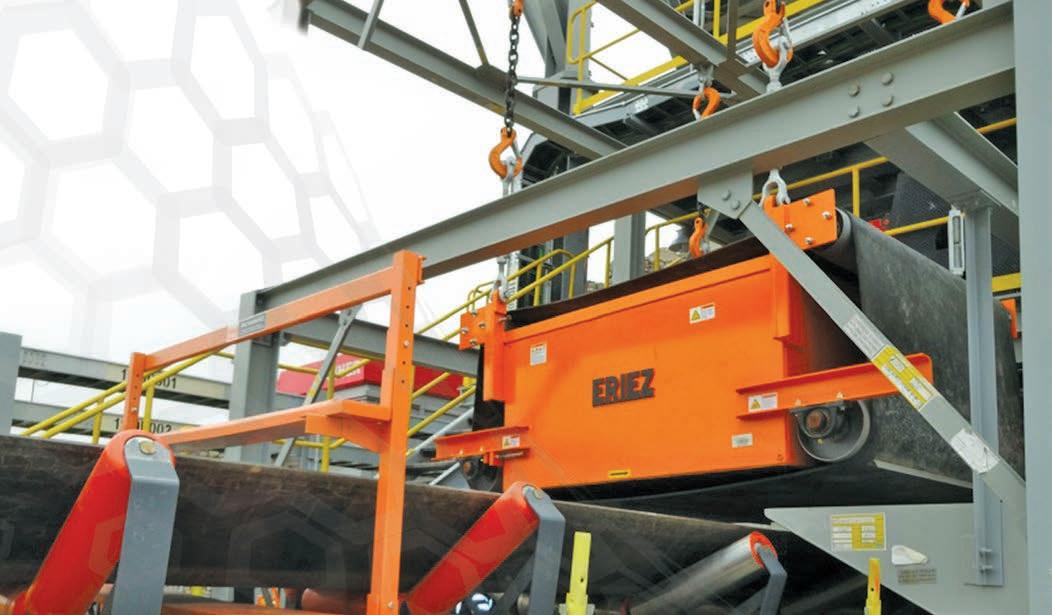
I would love to see a project where the industry comes together on the rebranding, for example, and not a rebranding just for the perspective of selling a better image, but with the commitment to do the internal work around culture. I think we can quantify the challenge that is ahead of us with new licenses to operate for the next big projects. Then, the question becomes what level of effort and investment is the industry willing to put in to changing the culture? If we are proactive towards these changes, we could move more effectively and achieve great results.
CMJ: Do you think the provincial and federal governments can do more to help?


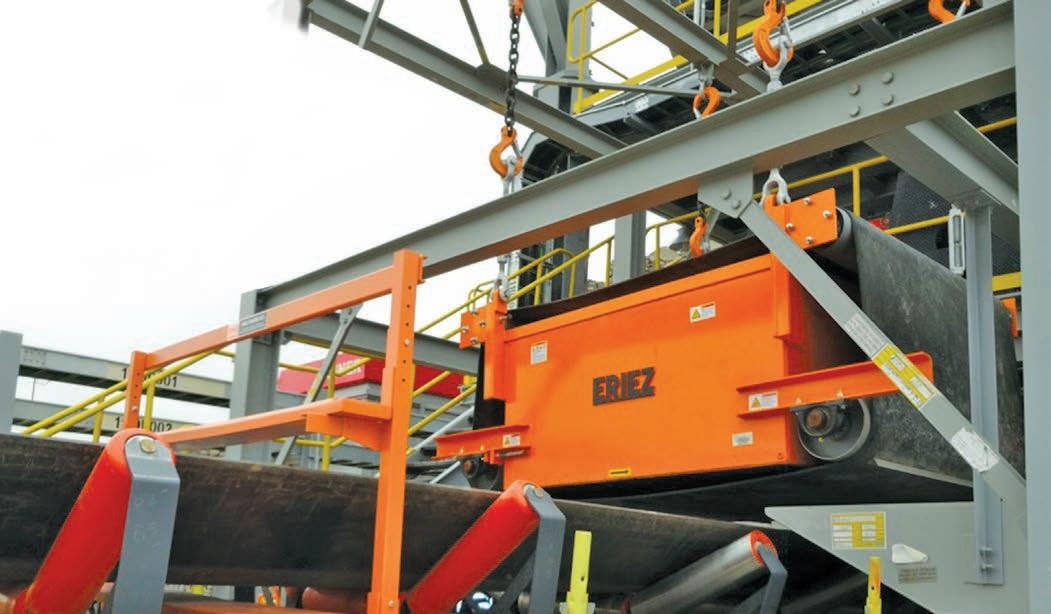
JC: I think they can support everything we discussed from involvement in education to involvement of communities and consultation.

I think there is a role to be played by the governments in terms of facilitating or creating models where there is an opportunity for everybody to participate.
The challenge we have today is that the model is focused solely on financial outcomes. We need to adjust this model, and for many organizations and investors, this is what ESG standards and measures will help to address. The outcomes will need to be more balanced.
CMJ: Now, please talk to us about the recent recognition, WIM100 UK: 100 Global Inspirational Women in Mining, and what does it mean to you?




JC: WIM100 is an initiative that celebrates women who have made inspiring contributions towards a stronger, safer, and more sustainable mining industry. It is a recognition of the work many women in the mining industry have committed to execute. My name is there this year because it has been four years since we started I&D 101, six years in total with diversity and inclusion work, and almost 20 years in the mining sector being outspoken about the challenges and trying to fix it. I think I am not someone who is willing to complain without figuring out solutions.
I was one of 491 women nominated across 61 countries. The recognition is of the hard work I have been doing for more than 20 years with clients, transforming businesses into high-performing organizations, creating, and implementing strategies to reduce operational costs and achieve their business goals. It feels great to be recognized as an industry leader and for my passion for empowering people and driving equity and inclusion in the mining industry.
I believe that if you show up at a table with a challenge, then you should show up with ideas on how to deal with that challenge. I want to be someone who inspires people to come up with new ideas and to challenge the status quo. If I see something wrong, my brain starts working on how I would do that differently. What are the other alternatives? CMJ
FEBRUARY/MARCH 2023 CANADIAN MINING JOURNAL | 27 Eriez.com | 814.835.6000
1 2/17/23 9:40 AM Page 1
Stop DangerousTramp Metals ERIEZ_TrampMetal_1-2Pg_CMJ_3_23.qxp_Layout
Highlights from PDAC’s social impact report
social
The importance of respecting Indigenous Peoples and their traditional territories is widely recognized in the Canadian mining industry. Understanding the values and culture of an Indigenous community is crucial to a mutually beneficial partnership, but mining companies also have a duty to anticipate the social impacts of their operations on the host community, as well as mitigate negative effects.
The Prospectors and Developers Association of Canada (PDAC) recently published its social impact report titled “studying the social impacts of mineral development projects on indigenous communities.” PDAC used literature review, a case study, and interviews to analyze the effects of mining on the social infrastructure of the host Indigenous communities. This article highlights the findings and recommendations from the report.
A unique perspective
The mining industry tends to focus on social impacts at the community level, but men and women in the community
experience these impacts differently. Whereas men may benefit more from employment opportunities, Indigenous women (who typically focus on the household, family planning, and the broader community) are disproportionately affected by social disruption.
Drawing inspiration from the National Inquiry into Missing and Murdered Indigenous Women and Girls (MMIWG), PDAC’s study applied a gendered lens to analyze the impacts of mining projects on Indigenous women, and how these impacts can affect gender imbalances in Indigenous communities. All five interviewees in the study were women: four Indigenous community members and the mining company’s community relations manager.
According to PDAC’s report, starting a mining project with a gender-based analysis will help elucidate the roles of women, men, and gender diverse people in Indigenous society, and present a more complete understanding of the project’s social impacts. Several mineral resource companies already use

28 | CANADIAN MINING JOURNAL www.canadianminingjournal.com WOMEN IN MINING PHOTO: IKAVE102RUS/ADOBE IMAGES
The
impacts of mining on Indigenous women and communities
Gender-based Analysis Plus (GBA+) principles as part of their permitting process. The report suggests that a proactive approach to involving women and understanding their perspectives and values is a prerequisite to supporting an Indigenous community during a mining project.
Social impacts
1 | Indigenous women’s issues
Women in Indigenous host communities face a range of social impacts from mining projects. The MMIWG report states that when a mine brings in a transient, predominantly male workforce with little connection to the host community, it can exacerbate vulnerable situations that lead to increased crime (e.g., substance abuse, gambling, prostitution, violence, and harassment). When a mine hires Indigenous men from a host community, this can increase responsibilities for the women of the community (e.g., volunteer firefighting).
Women who work in mining camps often face social issues onsite. According to a recent study by Liard Aboriginal Women’s Society, high percentages of women have reported harassment, discrimination, assault, and abuse at camps in Yukon and northern B.C. Hypermasculinity, ineffective prevention strategies, lack of trust in grievance reporting, and denial of the existence of these issues perpetuate an unsafe environment for women.
Indigenous women may also experience limited opportunities and career development due to stereotypes. They often have lower paying jobs, and rotational shift work is difficult for mothers who are primary caregivers. This can result in demotivation to enter the workforce and can reinforce gender imbalances.
To address these issues, mining companies can
a create women’s support groups onsite;
b improve procedures for responding to harassment complaints;
c expand opportunities, education, and training for women to take on technical and managerial roles; and
d provide community-based programming and family support (e.g., daycare).
Indigenous women should be included in decision-making processes and the development of equality initiatives. PDAC advocates that mining projects should support, not undermine, the human rights of Indigenous women.
2 | Housing and cost of living
The remoteness of Indigenous communities, especially in northern Canada, results in an inflated cost of living. Transportation costs and complexity of distribution lead to soaring prices and food insecurity. Remote communities also experience housing issues such as overcrowding, shortages,
By Kesiah Stoker
and poor conditions. An influx of mining workers increases competition for food and housing, exacerbating these issues.
Providing employment and business opportunities for Indigenous community members can increase their income and improve quality of living. However, locals with mining jobs often leave the community for better opportunities, so their incomes may not contribute to the local economy. PDAC’s report suggests that mining companies conduct socio-economic assessments and develop programs to encourage people to stay in their communities. Mining companies should also build camp housing facilities to mitigate housing issues.
3 | Community infrastructure
Indigenous communities in remote areas can experience a lack of safe drinking water, poor road conditions, poor digital infrastructure, and gaps in education. Fortunately, mining companies can create mutually beneficial improvements to the infrastructure in host communities.
Due to regulatory requirements and environmental commitments, mining companies routinely monitor water quality for their operations. This can be expanded into the development of water management programs for nearby communities. Heavy mining equipment can further damage roads, so mining companies should be prepared to help maintain and/or build roads.
Mining companies can help address the lack of technical literacy and internet access in remote communities, which limit community development and access to healthcare, education, and banking. PDAC’s report suggests that computers with internet access should be provided for families to stay connected during rotational shifts.
Education and training for Indigenous community members builds resilience in the community and strengthens the workforce for the mining industry. Companies can also facilitate career growth and opportunities for Indigenous employees to reach management and executive levels. Of course, Indigenous knowledge should be integrated into these programs.
The report states that in addition to improving infrastructure, mining companies should support local social programs so that communities remain resilient after the closure of a project.
4| Traditional lifestyles and land
Traditional activities such as hunting, fishing, and harvesting are essential elements of Indigenous cultural identities. However, there has been a decline in participation in these activities, and the outflow of younger community members leaves elders with fewer opportunities to pass on traditional knowledge. Employment in mining can provide financial resources that enable the purchase of equipment and supplies for traditional activities, but rotational work schedules often
FEBRUARY/MARCH 2023 CANADIAN MINING JOURNAL | 29 CONTINUED ON PAGE 30
According to PDAC’s report, starting a mining project with a gender-based analysis will help elucidate the roles of women, men, and gender diverse people in Indigenous society, and present a more complete understanding of the project’s social impacts.
conflict with the timing of these activities (e.g., long hunting
To mitigate these issues, mining companies can provide time off for traditional activities and build generational support in the community. Companies should also consult with host communities regarding traditional land use and involve them in archaeological assessments and field mapping. There could be opportunities to expand traditional land use, for example, building roadways that follow harvesting routes.
Health and wellbeing
Health issues in Indigenous communities are exacerbated by extreme poverty rates, intergenerational trauma, and poor relationships with healthcare providers. The remoteness of many Indigenous communities also creates a lack of adequate health facilities and a shortage of healthcare workers. Mining camps often provide health services from basic first aid to trained first responders, and companies can expand these services to the host community and/or build new local facilities.
Connection with culture and language improves wellness in Indigenous communities. The ability to work on traditional territory can strengthen an Indigenous employee’s sense of belonging. Mining companies can invest in Indigenous cultural programs for all employees, designed and managed by Indigenous employees.
Mining jobs often come with a significant increase in income, which can change the power dynamics in families and cause problems when there is a lack of financial literacy. Providing financial education can benefit employees. An interviewee in PDAC’s study suggested that companies should hold workshops for potential employees and their families to ease the transition to mining work.
Applications of the report
The case study and interviews took place at Brucejack gold mine in northern B.C., on the traditional territory of the Skii km Lax Ha First Nation and the Tahltan First Nation. As such, the study does not consider the perspectives of Inuit, Métis, and other First Nations. Therefore, the findings of the study should not be generalized to other Indigenous communities, as each has unique culture, geography, history, socio-economic conditions, and experience with mining companies. The report acts as a primer for companies that are considering exploration on traditional lands, but social impacts should be considered in the context of the specific host community.
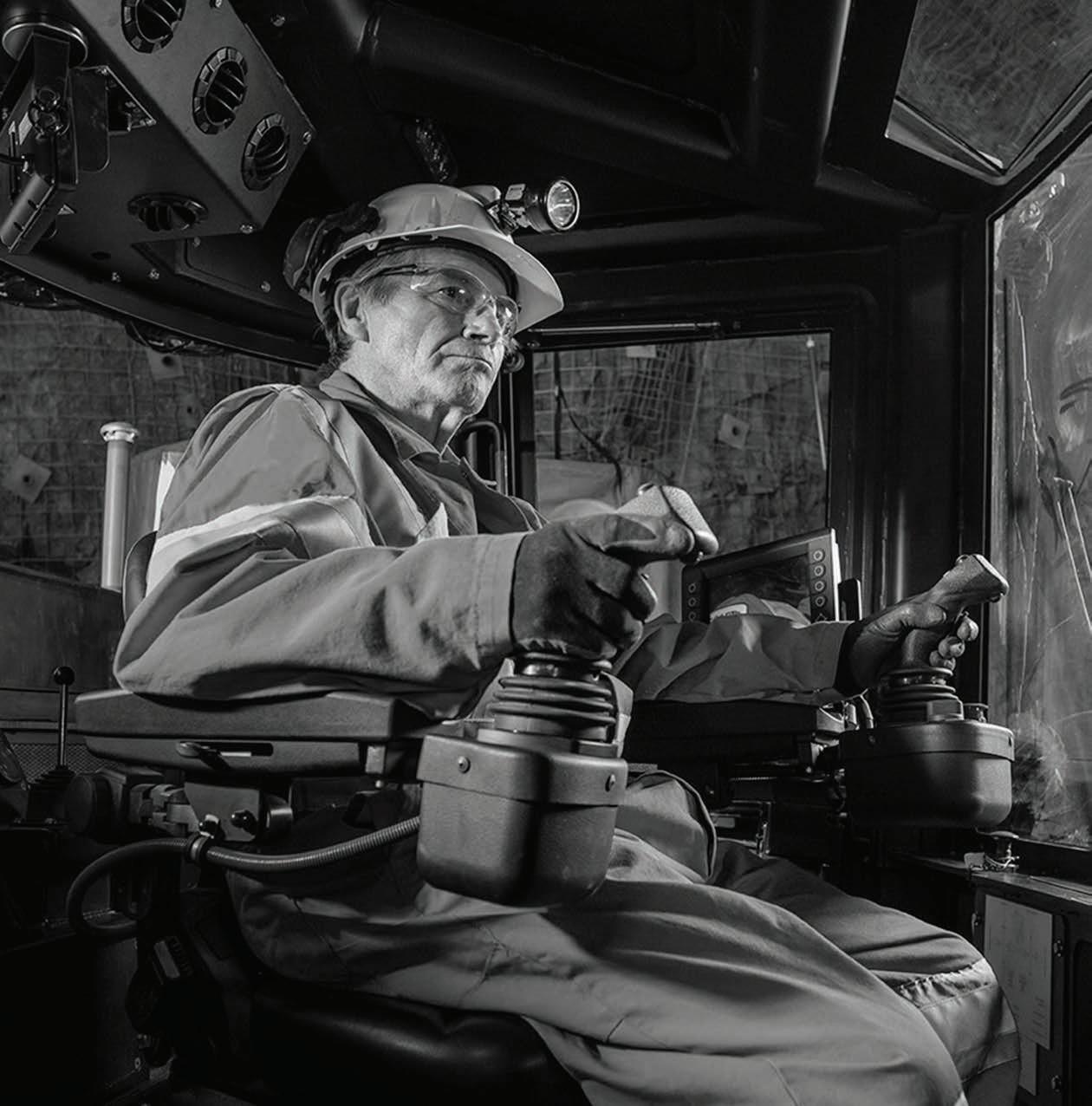

PDAC’s Social Impact Report highlights the importance of using a gender-sensitive approach to Indigenous engagement to further understand the social impacts of mining projects. Companies can refer to the report throughout all stages of a mining project for insight on social impact mitigation strategies, impact benefit agreements, and programs to support the success of both mineral resource operations and host Indigenous communities.
CMJ
To read PDAC’s Social Impact Report in full, visit https://www. pdac.ca/indigenousaffairs/social-impact-report.
30 | CANADIAN MINING JOURNAL www.canadianminingjournal.com
is a multi-skilled freelance writer.
Kesiah Stoker
WOMEN IN MINING
“REDUCE BLAST CLEARANCE TIME, GREENHOUSE GASES AND INCREASE ENERGY SAVINGS WHILE REDUCING CAPEX COSTS BY 50% COMPARED TO TRADITIONAL ANALOG SYSTEMS.”


The MaestroFlex™ Regulator automatically adjusts airflow on operating levels. Installed at the fresh air raise, return air raise or both, our automated regulators replace drop board manual regulators that cannot be adjusted from the control room. Finally, surface operators now have the ability to control ventilation as required either manually or using VoD software.

maestrodigitalmine.com
MaestroFlex™ Regulator
Automated
that’s a breeze to control. Air to the Throne. See you at the Northern Ontario Mining Showcase at PDAC.
98 2023
airflow
Booth

WEEKLY REPORT Email Newsletter for Mining Professionals Join thousands of high-performing mining professionals already receiving The Northern Miner’s free Weekly Report update. SUBSCRIBE FOR FREE northernminer.com/weekly-report
By John Crane staff
Q& A
How to improve reliability, bottom line, and water reduction
The latest evolution in sealing technology


John Crane’s Warren Smith, mining market director, and Steve Taylor, mining market segment manager, Canada, discuss how customers can improve reliability, bottom line, and water reduction with the latest evolutions in sealing technology.
What are some of the trends you are seeing when it comes to sealing pumps and critical rotating equipment in mining that are needed to increase uptime and reduce water and waste?


Warren: There are multiple options for sealing slurry pumps. We find that the geographical location, and economic and environmental issues play a key role in choosing the best option.
Packing remains the go-to solution for sealing slurry pumps that both the pump OEM (Original Equipment Manufacturer) and the operators embrace. Today’s mine operators can choose from third generation packing technologies through engineered heavy-duty single and double slurry seals. Packing and mechanical seals offered today are constantly evolving to meet the economic and environmental issues operators face.
What are some of the available choices that operators can consider when leaning toward packing?
Warren: Packing yarn technology is constantly changing. We have moved away from first generation base yarns like cotton, jute, and flax, which typically include PTFE and graphite, as the sacrificial lubricant or graphite packing consumes high levels of energy and requires a leak rate of up to 60 drops per second per inch of shaft outside diameter for cooling and lubricating. This means a typical 30-mm or five-inch shaft would need to leak at a rate of 300 drops per second.
With second generation yarns, we saw the introduction of both Aramid (Kevlar) and ePTFE (gore fiber) packings in the market and still play an important part in our packing portfolio today. Now, our go-to products would be carbon yarns and graphite yarn packings, possibly even supported by hybrid technologies. We can
FEBRUARY/MARCH 2023 CANADIAN MINING JOURNAL | 33
TECHNOLOGY
Types of mechanical seals (left to right): Types 3740, 5860, 5870, 5840. JOHN CRANE
>
TECHNOLOGY
combine packing styles to offer solutions that reduce shaft wear, energy consumption and solutions that leak as low as eight to 10 drops per outside diameter inch of shaft.
What are some of the strategies to increase the reliability of pumps and rotating equipment to positively impact an organization’s bottom line?
Steve: The single biggest sealing technology option available to the mining industry to improve pump reliability and the bottom line is to upgrade mechanical seals on the pumps that are critical to operations and require elevated levels of maintenance. Filter feed and tailing pumps are typical examples. By simply transitioning from gland packing to mechanical seals, mining operations have been able to do away with daily and weekly maintenance schedules on tailing lines and run uninterrupted for 12-18 months, or even enjoy multi-year runs on the filter feeds. This results in significant maintenance cost savings, reduced equipment downtime, and potential water savings. In some cases, this can save 120 L/min per pump.
What are the basics of mechanical seal technology and what differentiates seal designs found in the mining industry from those used in a refinery or a municipal water pump?
Steve: Mechanical seal technology relies on a very thin film of lubricant between a rotating and stationary set of flat wear faces. Whether lubrication is provided by the fluid being



pumped or by an introduced liquid, the consumption of this medium is extremely low. It is this set of faces that prevents what is inside a pump from escaping into the atmosphere. Along with these faces, there are support components such as springs, O-rings, and drive mechanisms that all work together to allow the seal to do its sealing job. Correct design choices and proper engineering can minimize or eliminate the need for external fresh water.
If a customer plans to switch to mechanical seals, are there any special considerations that John Crane can address regarding the pump hardware?
Steve: There are a few general observations about how slurry pump design may affect mechanical seal performance.
> Sleeve material: It is standard practice to replace the old worn packing sleeve when you are converting to a mechanical seal. It is important that your seal supplier knows about the sleeve material, including what the material is made from.
> Slurry pump wear liners: Many slurry pumps allow for an open or closed liner in the area between the mechanical seal and impeller. Deciding which type should be used for the best seal reliability varies depending on the specific seal and application. Physical space requirements, erosion effects, heat removal and water use are all factors that should be discussed between the mine, the pump OEM, and the seal manufacturer.
> Impellers: The importance of choosing an impeller depends on the specific application and should be discussed between the mine, the pump OEM, and the seal manufacturer.

What should customers be aiming for as far as equipment conditions are concerned and how do they deal with impeller adjustments?
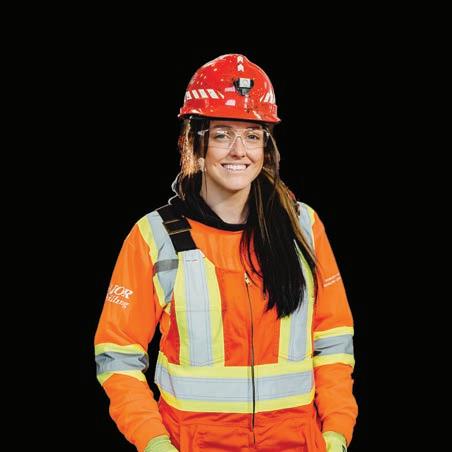
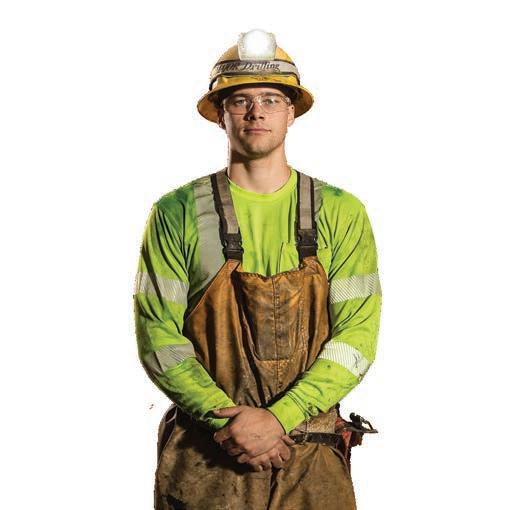
Steve: It is recognized that a typical seal specification requires tight equipment tolerances, but we also know that slurry pumps are rugged and require the surrounding equipment to be strong as well. Slurry seals are tougher and more forgiving than refinery seals, but we would like to see dial indicators used and a fresh set of bearings for the initial installment. Barrel alignment and the pump frame being square with the shaft are important.

Another factor for consideration is whether the pumps are being routinely adjusted or not touched again until the next overhaul. Well-designed slurry seals can handle a lot of impellers adjusting, but it is important to know about them before settling on a final seal design.
Are there any considerations that should be taken regarding what type of water source the mine will be using, if any?

Steve: While the goal is to reduce water use, preferably to zero, there are many times insignificant amounts of water are needed to maximize seal reliability. Part of the seal application procedure is finding out upfront what water, if any, is available and how reliable it is. Unique designs and materials have unique needs, and it is important to keep the primary goals of improving reliability and decreasing water use at the forefront. CMJ TSX: MDI majordrilling.cominfo@majordrilling.com

www.canadianminingjournal.com
tires
Turning waste mining into value
Building a business case for OTR recycling
The mining industry is one of the biggest global users of off-the-road (OTR), or earthmover, tires. As a consumable product, these items have traditionally had a linear make-use-dispose trajectory, with few options for refuse or reuse. However, the enhanced focus on mining companies’ environmental, social, and governance (ESG) performance in recent years has shone a spotlight on their waste management practices and the possibility of building greater circularity into business models. This, combined with impending regulation in various mining countries is pushing organizations to take another look at the possibility of tire recycling and how they can make a case for it.
There is a common misconception that tire recycling is just an additional operating expense, one that companies would rather not shoulder when margins are already squeezed by low ore grades and high energy and labour costs. But, by demonstrating leadership in this area, there is a chance to generate significant social, environmental, and reputational value while helping businesses towards their near-term goal of carbon neutrality and, in the long term, zero waste.
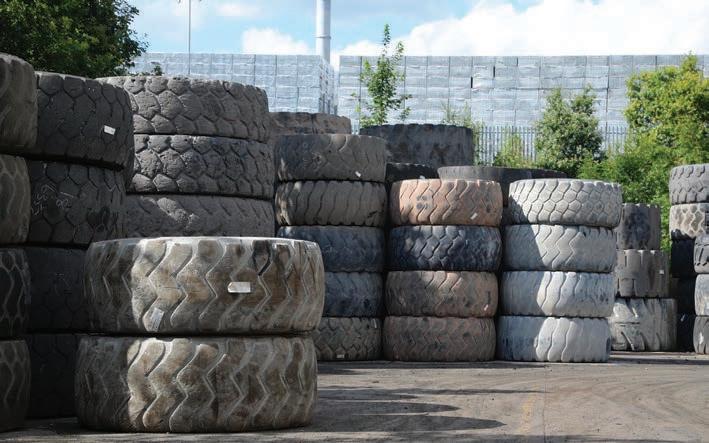
How many tires?
While there are no aggregate figures for the quantity of used OTR tires generated globally, by examining the tonnages imported annually in key mining markets, it is possible to get a feel for the level of risk and opportunity.
According to Tyre Stewardship Australia’s 2020 Off-the-Road Used Tyre Analysis report, the Australian mining industry generated 68,100 metric tonnes of used tires in 2019. Of that number, 93% or 63,300 tonnes were disposed of onsite, i.e., piled up or buried; 3% were sent to landfill (2,000 tonnes) and just 1% (700 tonnes) were recycled; and the remainder stockpiled or used in civil engineering. In the five years from 2014 to 2019, Australian mines collectively (including metal and non-metal mines) generated 315,500 tonnes of used tires.
It is a similar story in other markets. Chile hosts six of the 10 largest copper mines in the world and an estimated 500,000 tonnes of used OTR tires. Australia and Chile are just two mining jurisdictions among many. Mines are long-life operations, and some have commercial lives spanning 40+ years. This
CONTINUED ON PAGE 36
FEBRUARY/MARCH 2023 CANADIAN MINING JOURNAL | 35
TECHNOLOGY
By Kal Tire’s mining tire staff
Scrap tires. KAL TIRE:
means that there are likely millions of tonnes of used tires at mine sites across the globe.
Dan Allan, senior vice-president of Kal Tire’s mining tire group explained: “There are huge quantities of OTR tires awaiting final deposition at mines around the world. At some sites, the stockpiles are so big that they are visible using tools such as Google Earth.
“Finding management solutions is difficult, because very few recycling facilities can handle mining tires. Some ultra-class products weigh approximately five tonnes apiece, so they require specialist lifting equipment and transportation, in some cases, over long distances to reach the facility, and then dedicated shredders to reduce their size.
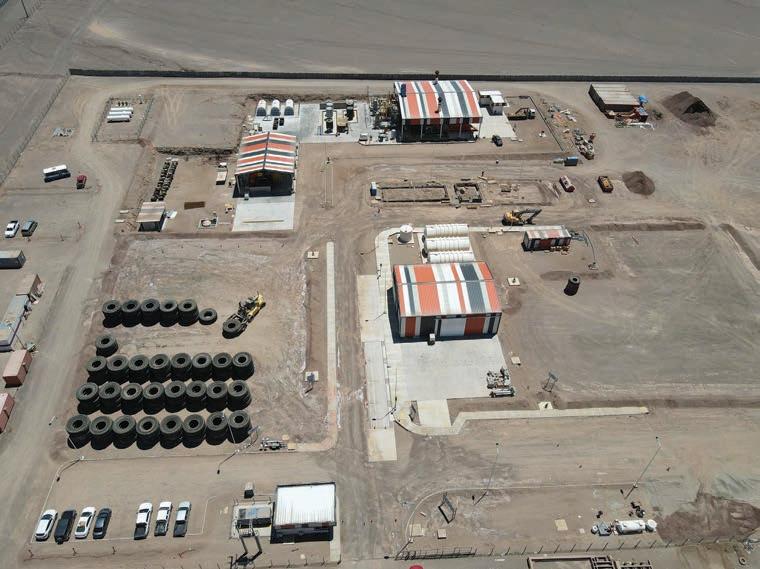
“Even in places which have recycling mandates for OTR tires, often the firms that are authorized to collect the tires are challenged with this because of the cost and logistics involved. They would rather collect passenger tires because they are easier to handle.”
Although used OTR tires are, in most mines, simply buried or used to create final landforms upon closure, some companies are doing the best they can to repurpose them in the interim. For instance, cutting the tires in half and using them as safety berms along haul roads, or passing them to agricultural neighbors to use as cattle feed troughs. However, the problem remains that tires do not degrade. While their component materials are chemically inert, regardless of whether they are onsite or sent to landfill, those tires will remain in the landscape indefinitely.
The passenger and on-road truck tire markets are further ahead in recycling, both in terms of supply chain maturity and uptake. These products are routinely shredded and used as tire-derived fuel, or turned into rubber crumb which can be repurposed, for instance, in asphalt or infrastructure projects.
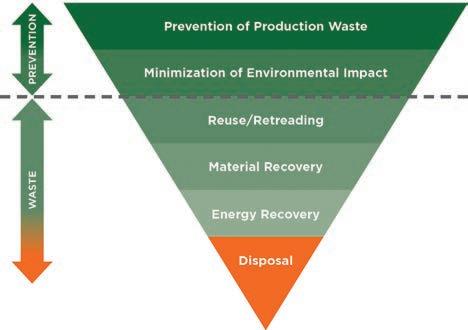
“Shredding is better than burying tires but, ultimately, it is just delaying their journey to landfill,” said Allan. “The world
only needs so many tires in playgrounds or lawn mulch, and it really does not need any more oil-based products to be burnt.
“We should be seeking out the highest and best uses for these materials. By breaking tires down into their fundamental elements (carbon black, steel, and petroleum-based products), we can reuse them to create new tires. That is the optimal use, because it provides a substitute for new carbon products and helps to reduce their total carbon footprint.”
Circular by nature
Breaking down a 160-cm-diameter radial OTR tire using thermal conversion or pyrolysis would produce approximately 1,600 kg of carbon ash, which can be upgraded and used as a replacement for new carbon black. It would also produce 900 kg of high tensile steel and 2,000 liters of petroleum-based products which can be refined and used to create new tires, and 350 m3 of synthetic gas that can feed the recycling process.

36 | CANADIAN MINING JOURNAL www.canadianminingjournal.com
TECHNOLOGY
Kal Tire recycling plant (drone view). KAL TIRE
Thermal conversion. KAL TIRE
Recycling hierarchy. KAL TIRE
Elevating awareness through ESG
While waste tires are chemically inert, there are still risks associated with storing them. The shape of OTR tires means that their insides are cavernous and prone to holding water which can attract creatures, like spiders and snakes. If those tires need to be moved at any point, they could pose a safety risk to employees. Tires are also flammable, and tire fires can be hard to control and extinguish if an incident were to occur.
But the biggest risks (and opportunities) are ESG related. Investors, stakeholders, and landowners are becoming increasingly interested in the way in which mining companies steward the land. While mining organizations are not yet required to disclose the quantity of used tires held on site and the way in which they are managed, ESG metrics and disclosure tools are developing rapidly. In time, outdated practices, such as burying tires, could pose a reputational risk for a sector whose environmental and social performance is increasingly under a microscope. And, as a very visible form of waste (even buried stockpiles need to be marked in certain jurisdictions), used tires may also make mining companies a target for disgruntled environmental groups and protestors.
Ontario, was one of the first major mining destinations to introduce a tire recycling legislation in 2016. However, this mainly centers on shredding and repurposing the rubber. There are also voluntary initiatives in other Canadian provinces. For example, Kal Tire’s mining tire group has partnered with Liberty Tire to offer shredding services for earthmover tires across western Canada. South Africa also has a waste tire recycling program under which a levy is imposed on newly purchased tires to fund recycling, but manufacturers have indicated that the system there has problems which have led to tires being stockpiled.
Chile has recently introduced legislation which specifies that starting in 2023, 25% of mining tires must be recycled, this increases to 75% as of 2027, and to 100% as of 2030. To enable
this, Kal Tire’s mining tire group opened an OTR tire recycling facility in Antofagasta in 2021 which can handle up to 20 t/d of tires, including ultra-class products. The company has developed a unique thermal conversion process that uses heat and friction to convert the tires back to their base elements (100% of the material can be repurposed) and there are no harmful emissions. The solution is scalable and could be replicated in other mining markets.
Australia looks set to be next; Tyre Stewardship Australia recently received a federal government grant to deliver a business case that will improve OTR resource recovery in various sectors, including mining. The final report is slated for delivery in March 2023.

Regulations such as these are a step in the right direction. However, they are only applicable from the date of introduction. Many mines will have operated prior to this and built up a stockpile of waste tires and/or could find themselves exempt due to incumbent regulation at the time of permitting.
While it is unlikely that buried tires would ever need to be dug up, as more legislation is introduced, mining companies will need to evolve their used tire management and mine closure practices to be compliant.
There is also a question of reputation. Companies that operate in multiple jurisdictions are expected to apply the same high standards and best practices to mines in unregulated jurisdictions as they would to those in regulated ones. In doing so, there is a chance for them to stand out as ESG leaders and to raise the bar for the industry as a whole.
Finding the funding
The desire for change is real, but the question remains of how to pay for it? Regardless of the chosen recycling method (pyrolysis, devulcanization, cryogenic etc.), the recycling of OTR tires
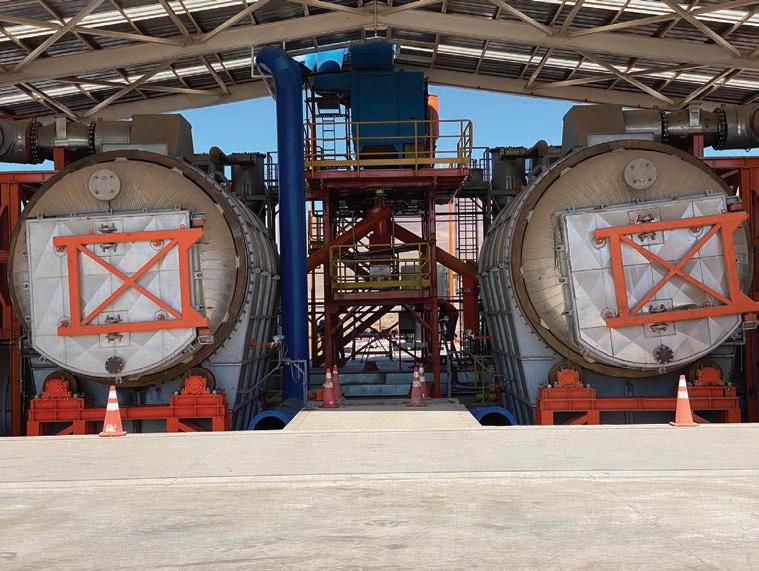
FEBRUARY/MARCH 2023 CANADIAN MINING JOURNAL | 37
Many mining companies perceive OTR tire recycling to be prohibitively expensive, but Kal Tire’s mining tire group argues that it is possible to build a strong business case that supports profitability today, while helping businesses towards their sustainability goals.
Kal Tire recycling plant KAL TIRE
ON PAGE 38
Off-the-Road used tyre analysis report. TYRE STEWARDSHIP AUSTRALIA
CONTINUED
is costly and, if there is no regulation, mines can struggle to make the case for capital allocation.
Allan explained: “One way to tackle this is through accessing mine remediation budgets. Every mine has money set aside for reclamation and eventual closure. The challenge lies in accessing that budget today, so that mines can recycle tires progressively rather than waiting until closure when there are thousands of products awaiting disposal. There’s an evolution that should happen internally to bring those two value streams closer together.”
Regulators across the globe are also starting to support this thinking. In April 2022, the government of British Columbia, introduced an interim reclamation security policy for the mining industry which requires that reclamation liability cost estimates include both conventional reclamation (such as resloping and re-vegetation) and environmental liabilities (such as water treatment). The policy also requires bonding for specific liabilities, and actively encourages progressive reclamation throughout the life-of-mine consistent with industry best practices to reduce site liabilities, closure timelines, and ongoing monitoring requirements. By taking a proactive approach to OTR tire recycling as part of this, mining companies have the chance to better their stance as environmental stewards and boost their standing with stakeholders.
Carbon taxes are also on the horizon. In the places which currently have recycling legislation for OTR tires, retreading or extending the operating life of used tires is an integral part of the process. Some companies may be able to use that practice to garner carbon credits which can (through cap-and-trade agreements) help to offset the cost of recycling.
Allan added: “The carbon trading landscape is still evolving. However, it is possible to see how retreading and recycling could potentially be harnessed to create a carbon-positive effect. For example, Kal Tire’s Maple Program uses a thirdparty accredited carbon calculator to quantify and reward mining companies for the oil and carbon emissions they save by
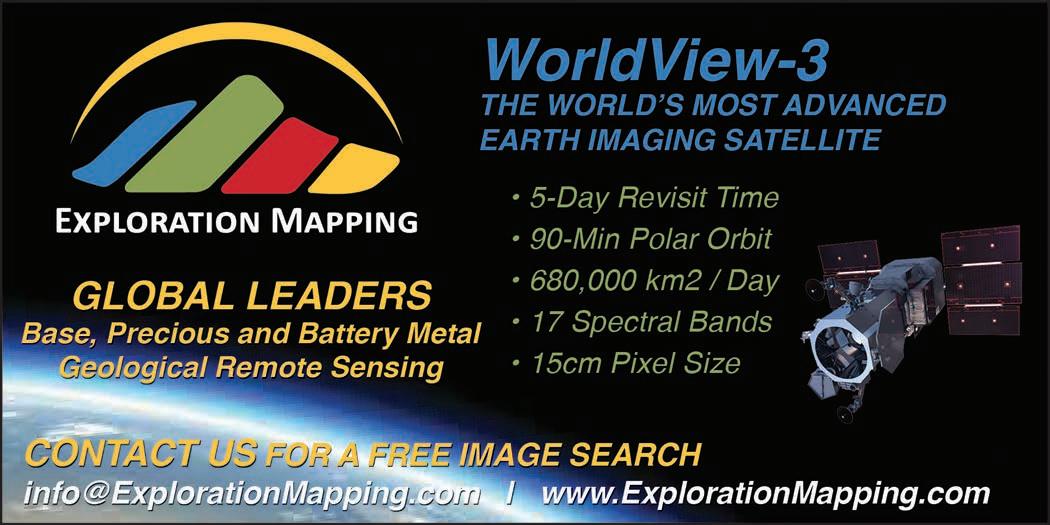
using its Ultra Tread, retreading and Ultra Repair services.”
Greater uptake of recycling can also drive social prosperity. Through committing to recycling and building partnerships with Indigenous or First Nations businesses to create reliable and sustainable supply chains, mining companies have the chance to boost the local skills base and technological capabilities and leave a positive legacy for the communities in which they operate.
“By seeking out the highest and best use cases for these materials, companies can create a virtuous circle,” said Allan. “Because carbon does not degrade, OTR tires can provide a source of carbon black which can be used to reduce pressure on primary production. Approximately 18 billion pounds (8.1 million tonnes) of carbon black is produced worldwide each year, and 90% of that is used in rubber applications. Imagine the impact the mining industry could have on the circular economy if it worked to turn its waste tire stream into a source of value.”
Working together to generate value
Ultimately, a diverse approach is required to boost the uptake and accessibility in OTR tire recycling. This includes government-led policy, standards (to ensure safety and quality in the collection and recycling process), proactive investments from mining companies, technological and product innovation from tire manufacturers, and willingness from local businesses to build the skills and capacity required to turn these “waste” products into a source of value. That change necessitates openness, communication, and collaboration across the complete value chain.
“To enable this transformation, mining companies should find ways to build bridges from their boardrooms to the mine sites, to raise the visibility of this issue, and to help teams to access remediation budgets,” Allan concluded. “Companies might consider ways to access those funds to meet today’s reclamation needs – they do not need to wait until year 25 to begin turning their waste tires into value.” CMJ
38 | CANADIAN MINING JOURNAL www.canadianminingjournal.com
TECHNOLOGY
By Robert Dufresne and Hamid Arabzadeh
Permanent equipotential insulators
Put an end to the frequent replacement of capping boards in cell house refineries
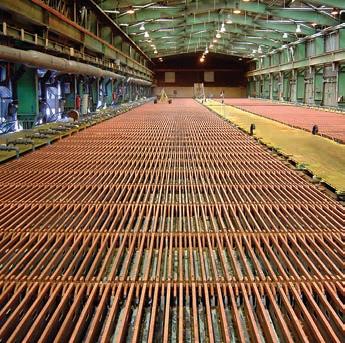
Copper is a widely used metal due to its conductivity, corrosion resistance, and versatility. Currently, global demand for copper is at an all-time high, and even the largest producers, such as Chile, Peru, and China, are struggling to keep up with demand, leading to fluctuations in prices. To improve efficiency and reduce the cost of production in copper refineries, it is important to continually explore new innovations and developments. This can help copper producers meet the growing global demand for copper.
One factor that impacts the efficiency of the refining process is the maintenance of cell house equipment and loss of production due to maintenance tasks. Among the various components in a refinery cell house, traditional insulators, also known as capping boards, are often subject to maintenance and replacement due to the excessive wear and tear they experience during the refining process, especially given their traditionally short lifespan. Replacing these insulators can be a labor-intensive and time-consuming process.
If the insulators are not properly maintained or replaced, when necessary, it can lead to problems with the operation of the cells, such as uneven current distribution or difficulty in maintaining proper operating conditions. This can decrease efficiency and reduce production rates.
Traditional versus permanent equipotential insulators
Older technologies for making insulators used low-resistance materials and were made of multiple pieces that were challenging to install and position accurately. This could lead to notable compromises on the rate of production due to the crucial effects of proper electrode alignment in a refinery.
Considering the important role of insulators to have all cells electrically connected and operating at the same potential, a new generation of insula-
tors, known as Permanent Equipotential Insulators, was developed with ultrahigh durability and chemical resistance in the harsh conditions of a cell house. High-quality equipotential insulators can have a significant impact on the efficiency of the process in hydrometallurgy or non-ferrous cell houses, because it helps to ensure that the cells are operating at the optimal voltage and current levels. Also, permanent equipotential insulators are more resistant to wear and tear, which can help to extend the life of the cells and reduce the need for maintenance and repairs. These advantages can help to maximize the efficiency and safety of the cell house and to reduce operating costs. Some of the early versions of these insulators have been in operation for over 22 years in copper refineries and over 19 years in zinc refineries while also providing unmatched protection against electrochemical reactions and accelerated corrosion even when subjected to a high concentration of acids up to 100% (Fig. 1). This is a significant improvement compared to the lifetime of traditional insulators which typically ranges from 6 months to 2 years.
The expected lifetime of equipotential insulators
The lifespan of an equipotential insulator in a copper ER/EW facility can vary based on several factors, including the quality and durability of the construction materials, the design and manufacturing process of the insulator, the operating conditions in the electrorefining facility, and the maintenance and care provided to the insulator.

Insulators made from high-quality, corrosion-resistant materials tend to have a longer lifespan. For example, the latest designs use pultruded fiberglass bars made from top-grade, corrosion-resistant raw materials that can withstand the harsh environments found in electro-refineries. Additionally, due to the advanced techniques and processes in manufacturing, they can perform better and are less likely to degrade over time. This is a proven technology, with a unique formulation that resulted from decades of research and development on the selection of compounds in synthetic resins, with top performance such as resistance to temperatures of up to 600°C and currents of up to 200,000 A at 780 V.
The operating conditions in the ER and
FEBRUARY/MARCH 2023 CANADIAN MINING JOURNAL | 39 TECHNOLOGY
Fig. 1. Permanent equipotential insulators made by Pultrusion Technique and installed in a copper refinery near Zaldivar since 1999 PULTRUSION TECHNIQUE
ON PAGE 40
Fig. 2. Permanent equipotential insulator in operation since 1994 PULTRUSION TECHNIQUE
CONTINUED
EW facility, such as temperature, humidity, and other environmental factors, can also impact the lifespan of an equipotential insulator. Generally, proper maintenance and care, including regular cleaning, inspections, and prompt repair or replacement of damaged components, can help extend the lifespan of an insulator and reduce the need for replacements (Fig. 2).
The concept of permanent equipotential insulators was developed through the innovation of new design and manufacturing processes that take all these factors into account. As a result, these insulators are less prone to frequent replacements and, as the name suggests, are intended to be permanent.
Advantages of using permanent equipotential insulators
a Reduction in the electrical costs
The alignment and tolerances of electrode seats can significantly affect the overall performance of a refinery. Achieving precise alignment can be challenging with traditional multi-piece insulators. While the design choice may depend on various factors, such as the size and shape of the electrolytic cells, the available space, and the specific requirements of the electrorefining process, insulators made in a single, longer piece with higher precision are more effective at maintaining a consistent electrical distribution throughout the system.
Permanent equipotential insulators are made in a single piece, and often incorporate pultruded fiberglass bars as reinforcement, which are manufactured through a unique process that creates a homogenous, continuous-length structure with a high level of dimensional stability. The precision can go up to 0.4 mm centre-to-centre, and from the first anode to the last anode at 2.8 mm along an 11 metre length. This helps provide a secure fit and accurate positioning for the electrodes, making the insulators less vulnerable to mechanical stress and other types of damage. This can extend the useful life of the insulators and prevent electrical failures and other issues that may result from misaligned electrodes, such as short circuits and uneven electroplating.
b Better protection for electrolytic cells
Equipotential insulators come in a variety of shapes and designs. Some designs include two side flanges on the sides of
the insulator to facilitate a secure fit on top of two adjacent cells. This design, known as the umbrella shape, also includes a special slot for positioning the contact bar and can serve as a protective shield against thermal loads from short circuits and chemical corrosion (Fig. 3). In the event of a short circuit, the insulator can act as a barrier to prevent the flow of electric current from reaching the electrolytic cells, protecting them from the excessive heat and mechanical stress that a short circuit can cause.
ment for more than two decades, and as a result, in the event of an acid spill, the insulator can act as a shield to redirect the acid away from the electrolytic cells and to effectively protect them from damage.
c Increased safety
Permanent equipotential insulators provide a continuous and consistent level of insulation, which helps to reduce the risk of electrical accidents and injuries. This is particularly important in hazardous environments, such as copper electro-refineries, where the potential for electrical accidents is very high. For instance, without proper insulation, operators are prone to electrical shocks coming from a potential difference between different parts of the electrical system. The proper function of insulators prevents an electrical current to flow through a person’s body if they come into contact with the system and eliminates the chances of serious injury.
d Metal refining with higher quality and purity
When a short circuit occurs, the flow of electric current is redirected from its intended path and directed through an unintended route. This can generate excessive heat and cause the insulator to heat up rapidly, resulting in mechanical stress and other forms of damage. The excessive heat generated by a short circuit can also damage the electrolytic cells under the insulator. These cells are designed to operate within a specific temperature range, and exposure to excessive heat can cause them to become less efficient or fail entirely.
Some equipotential insulators are also designed to protect against chemical corrosion. During the harvest of pure metal from the cathode, the electrolyte splashes as the cathodes are removed from the cell. If the capping board is made of multiple parts, the electrolyte may seep into the joints between them. As the heat of the process causes the water in the electrolyte to evaporate, sulfuric acid becomes more concentrated. At a concentration of over 70%, no plastic material can withstand the corrosive effects of the acid. Studies have shown that even Teflon will break down into black granulated aggregates and powder.

The modern chemical formulation utilized in the production of permanent equipotential insulators with exceptional resistance can endure this harsh environ-
As mentioned earlier, long-lasting equipotential insulators can improve the efficiency and effectiveness of the electro-refining process. This can help to reduce energy usage and increase productivity, which can ultimately lead to an increase in the production of copper.
Additionally, the use of long-lasting equipotential insulators can also help to improve the quality and purity of the extracted copper. By providing better electrical insulation and reducing the risk of short circuits and other electrical failures, permanent equipotential insulators can help to ensure that the electro-refining process is performed consistently and reliably.
A wise investment with a high ROI
Permanent equipotential insulators are a good investment for refineries. Even though they are made from premium raw materials and tend to be more expensive than traditional insulators, their longevity and durability can result in a lower frequency of replacements, ultimately leading to cost savings in the long term. These savings can contribute to a higher return on investment (ROI) for these insulators.
CMJ
40 | CANADIAN MINING JOURNAL www.canadianminingjournal.com
Robert Dufresne, P. Eng., is president at Pultrusion Technique Inc. and Hamid Arabzadeh, PhD, P. Eng., is R&D director at Pultrusion Technique Inc.
TECHNOLOGY
Fig. 3. Umbrella-shaped equipotential insulator PULTRUSION TECHNIQUE
MINING.COM Buyer’s Guide is a brand-new supplier directory dedicated to the global mining industry. Bringing together the technical knowhow and experience of the teams at SupplyMine, Canadian Mining Journal, and The Northern Miner, our new platform is built on a legacy of best-in-class products that have been serving the mining industry for over a century!
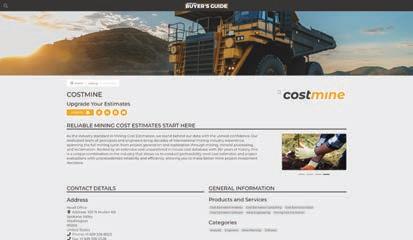

GET DISCOVERED BY MINING’S LARGEST AUDIENCE
Get your products and services in front of the right people. Our new platform allows you to build and optimize a listing that is targeted specifically to the search terms that mining companies use to find suppliers.
DIG UP THE RIGHT SUPPLIERS, FAST
Save time by utilizing our powerful, targeted search tools to find the right suppliers for your project. Narrow your results by category, products & services, as well as region so you don’t waste time researching suppliers that don’t have what you need.

INTRODUCING
GET STARTED AT BUYERSGUIDE.MINING.COM
A mid-term look at critical mining in North America
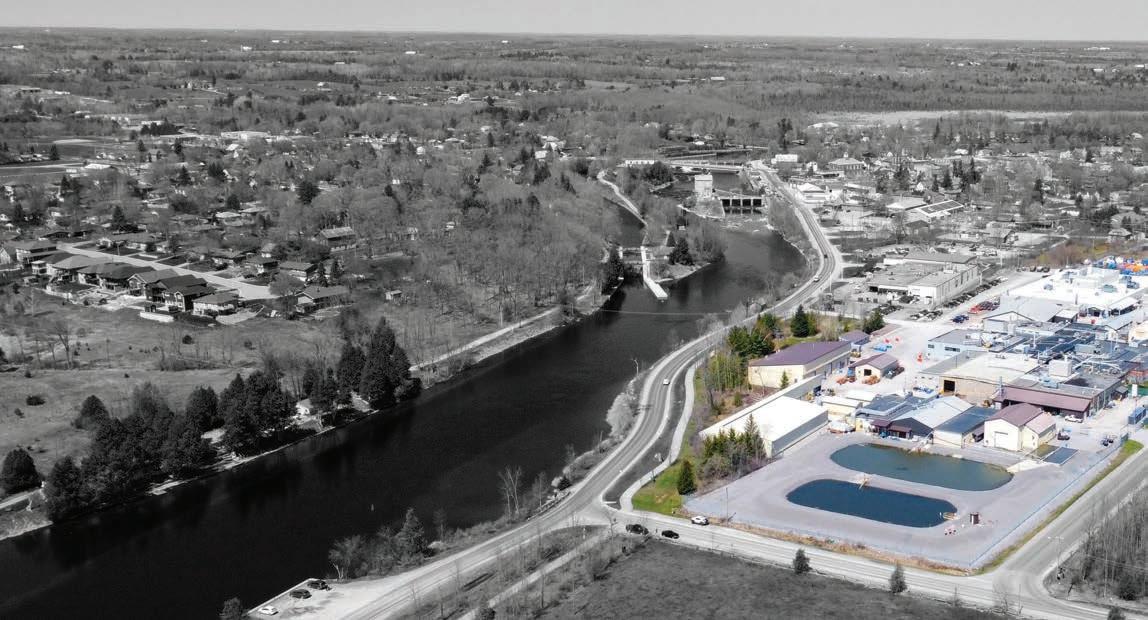
The government policies defined to meet net-zero emissions targets require leveraging green technologies globally to ensure the health of the planet. For countries to meet their respective net-zero targets, the importance placed on the development of critical minerals’ projects has never been higher. In some cases, the need to accelerate project development is required to meet projected shortfalls in some critical minerals’ supplies; for example, the demand for lithium will quickly outpace supply as new operations are slow to come on-line.
In the rush to adopt green technologies based on critical minerals, there are as many challenges coming to light as there are solutions. There is a need for companies to slow down, take time during the development stage to do the proper testing and due diligence to ensure all the vital components of a mine plan and process understanding are thoroughly in place. Projects and governments benefit from taking a more comprehensive look at their goals and managing their expectations as well as their outcomes.
To understand what is at stake, we need to look at the status of the Canadian mining landscape where the supply chain of critical minerals is concerned. Canada and the U.S. have been playing ”catch up” to countries such as Chile, Australia, Argentina, and China who have established mines in the lithium space.
According to S&P Capital IQ, there are 152 active lithium projects where lithium is the primary commodity in Canada and
the U.S. combined. Upon closer inspection, only three are in operation, a further five are in either active or planned construction, and an additional 21 are in some stage of scoping/ pre-feasibility/feasibility studies. While not every exploration project will advance to the production stage, those that do, may take decades to finally reach production due to meeting regulatory and environmental permitting factors.
There is a vast potential within North America, with 36% of global exploration for lithium located in Canada and the U.S. and additional exploration projects that are hoping to uncover deposits consistently.
With high commodity prices, companies of all sizes have been rushing into the critical minerals space and attempting to create a path to quick and easy profit. The reality has been much harsher. While the end goal of a precious, base, or critical minerals project remain the same, the paths required to accomplish the end goal are quite different. Expertise in one commodity or geological terrain does not always transfer to another commodity in an entirely different geological terrain.
Individual familiarity across the project life cycle can drastically differ leading to knowledge gaps within a project’s technical team. Project experience in early exploration does not guarantee metallurgical knowledge during the feasibility stage of development. Companies can be very thinly staffed with personnel assuming responsibilities that are often outside of their
42 | CANADIAN MINING JOURNAL www.canadianminingjournal.com
TECHNOLOGY
Kwong
SGS Lakefield has been delivering trusted metallurgical solutions to the global mining industry since 1941. In recent years, SGS has been an innovation leader in the extraction of critical minerals CREDIT: SGS Inset: Spodumene flotation. Known for its high lithium content, spodumene is the most widely exploited mineral source of lithium CREDIT: SGS
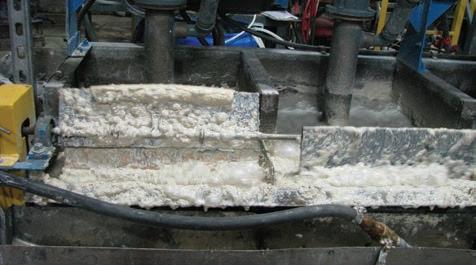

vehicle market and have been availing themselves of early and long-term offtake investing opportunities to secure the critical minerals supply needed. There is a greater pool of capital now available for sustainability or energy transition-linked financing which is reason for optimism.
“There are still hurdles to be overcome, but the spirit of discovery is as strong as it has ever been. Creating pathways to meaningful solutions for our transition to a de-carbonized economy is front and centre; we must focus on the path and conduct our due diligence to ensure the successful development and eventual commercial realization of our critical minerals’ projects within North America,” said Stephen Mackie, NAM senior director for SGS Metallurgy and Consulting.
Stay tuned. This may not be about gold, but as a society, we still need mining for critical minerals like lithium to pan out. CMJ
P.J. Kwong is a writer with the Content Store.
traditional expertise, and this can lead to critical missteps in the decision-making process.
Such mistakes in the early stages of resource development can ultimately lead to missed recovery levels and production targets which can lead to significant stakeholder unrest, new management teams, or even “mothballing” projects.
Consequently, the project success has often been mixed over the last decade, and there are some examples where companies abandon their projects because of not meeting production targets nor generating the results that investors were anticipating. Investors are watching this very closely.
Companies, such as SGS, are positioned to provide a wide range of technical knowledge and expertise across the entire project life cycle, allowing companies to leverage unbiased third-party insights and fill in any in-house technical gaps they may have to improve decision making and stakeholder engagement throughout the entire mining value chain resulting in efficient and sustainable mine operations.
To help companies in the critical minerals space, the government of Canada has recognized its potential and, in late 2022, unveiled a $2.78 billion critical minerals strategy, aimed at boosting “production and processing of the critical minerals, including lithium, nickel, and cobalt within Canada.”
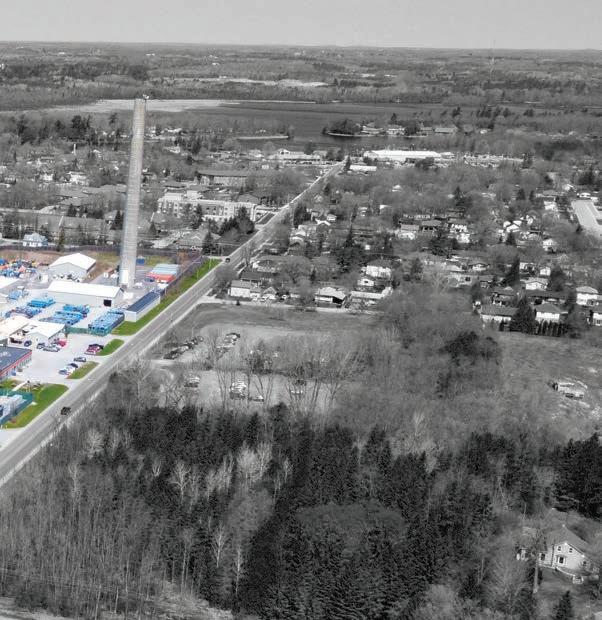
Canada is positioned to become a major player in the critical minerals supply chain. “The new (government) strategy focuses on supporting economic growth, and job creation; enhancing global security and partnership; promoting climate action and environmental protection; promoting diverse workforces and communities; and advancing reconciliation with Indigenous people.” Ambitious.
Auto manufactures including Tesla, GM, Ford, and Volkswagen among others have made substantial investments in the electric
FEBRUARY/MARCH 2023 CANADIAN MINING JOURNAL | 43
By P.J.
By Michael Gribbons
How ESG impacts the future of mine ventilation
Controlling mine ventilation is far more critical today than it has been over the past decade.
Mine ventilation provides clean air to personnel by clearing blast gases, diesel exhaust, dust, and strata gases from the underground workings.
Traditionally, environmental conditions are monitored to keep the miners safe, meet regulatory requirements and increase productivity by getting miners back to the face quicker. The focus from the mine perspective was rarely around energy consumption since a potential 30% savings in power was not equivalent to a 10% increase in production. Production and worker safety trumped over energy reductions in almost every case.
Flash forward to today’s global challenges where rising CO2 levels and greenhouse gas (GHG) emissions account as the major man-made cause of climate change. Governments and shareholders are starting to direct industry on several ESG fronts including reducing their carbon footprint. Care is being taken not to simply shift the energy up and down the supply chain or to purchase green credits but instead to tackle the root of the energy problem.
Outside of comminution (the ore grinding and crushing process) mine ventilation is the next largest consumer of electrical power. This electrical energy is used to move vast amounts of air throughout the mine as well as the energy required to cool and heat the air. Although air is transparent and light in comparison to ore, the amount of air circulating in a typical hard
rock mine in Canada varies from a ratio of 15:1 to 25:1 in favour of tonnes of air/month vs. tonnes of skipped ore/month.
New sources of clean energy are being pursued for suitability, robustness, and scalability while mines transition from a diesel to an electric mobile fleet. At the same time, the current electrical grid will need to be upgraded to accommodate the extra demand for electrical power. An all-electric fleet will eliminate in-shift tail-gas emissions of CO and NOx gases but consideration must be placed on blast gas clearance, dust, and heat removal to take advantage of lower potential ventilation requirements. Recent lithium-ion battery fires underground pose a significant risk and challenge due to the extremely high temperatures, smoke, and toxic gases that are emitted during these thermal runaway events.
What is the path forward for underground mines today?
Understanding that 40-70% of the electrical energy is used to ventilate the underground workings of a typical Canadian mine, many have begun to add real-time air quality stations to monitor the environmental conditions.
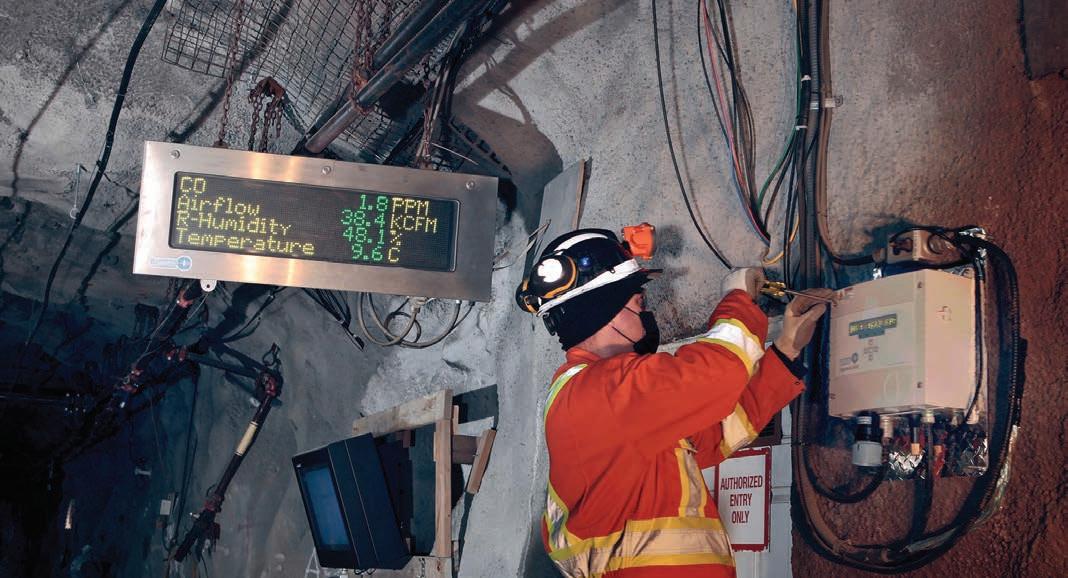
However, few have taken the next step of using this data to then direct the air to the areas of need instead of everywhere in the mine equally and automatically.
Using this environmental information, a mine can continue to add additional controls to regulate the airflow requirements based upon calculating the airflow demand by the location of the mobile fleet and the miners.
44 | CANADIAN MINING JOURNAL www.canadianminingjournal.com
PHOTO: MAESTRO DIGITAL VENTILATION
The tracking of the fleet and people can either be manually on a shift-by-shift basis or by using a more sophisticated electronic tagging system.
Ventilation fans used for auxiliary ventilation can easily be controlled from the surface using any form of an Ethernetbased starter that is connected to the process control network at the electrical substation.
Older manual drop board regulators can be upgraded to automated regulators enabling airflow adjustment from the surface either manually on a shift-by-shift basis or through a more elaborate ventilation on demand (VoD) system.
What are the results of this investment?
Mines have reported a 20-50% savings in energy intensity from both fans and heating/cooling operations resulting from controlling the mine’s ventilation thereby paying for the capex project over a 2-to-4-year period.
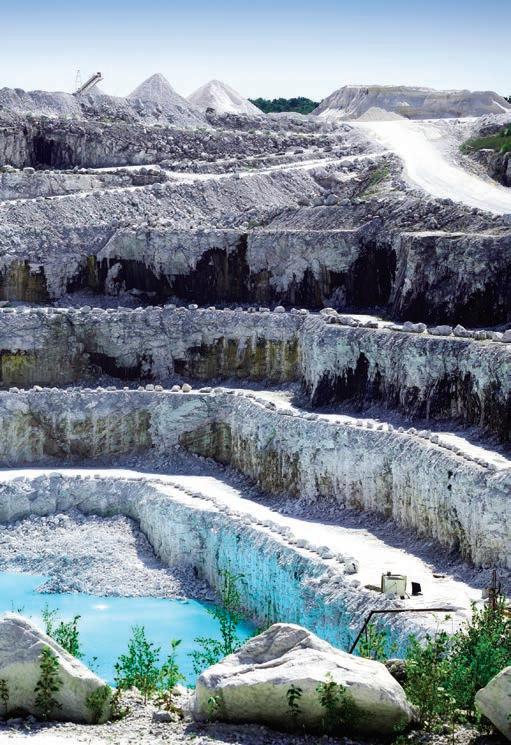
What are the major considerations and potential pitfalls?
First, an internal champion that will stay in the role during and after the project execution phase. Without this key person committed and in place, the ventilation system will likely fail due to the continuous movement of junior engineers into production roles outside of ventilation.
Second, an experienced and open-minded automation team that can understand and navigate the complexities of integrating both software and internet protocol (IP) based hardware and networks that are required to set-up and advance the ventilation system.
Third, a well-trained maintenance team to maintain the hardware underground and to keep the sensors calibrated and working after the installation phase is complete.
Lastly, a management team that is committed not only to productivity and worker safety but to energy sustainability supporting the companies’ long-term ESG values.
Three key ventilation metrics to support sustainability
Metrics provide objective measures of performance, and this data enables you to “manage by fact” and helps in long-term sustainability.
Ventilation intensity can be measured by a ratio of tonnes of air circulated/tonnes of ore brought to the surface. Some typical Canadian ratios range from 15:1 to 25:1.
Ventilation energy costs can be measured by a ratio of $/tonnes of ore with typical ranges from $1.11 to $2.92/tonne.
Ventilation consumption can be measured by a ratio of kWh/tonnes of ore with typical ranges from 28 to 55 kWh/tonne.
In conclusion, both the measurement and control of a mine’s underground ventilation system will not only lead to increasing productivity by getting miners back to the face quicker and safer but also assist the global effort for GHG emissions reduction and long-term sustainability. CMJ
Michael Gribbons is president, CEO, and co-founder of Maestro Digital Mine.
Projects that hold water
Water – you can’t operate without it. As your partner, we enable you to secure, manage and utilize every single drop. That’s an approach that holds water.
Learn about our creative and custom water management solutions for every stage of your mine’s life.
stantec.com/mining
FEBRUARY/MARCH 2023 CANADIAN MINING JOURNAL | 45
Updates on
critical
in northern Ontario mining
When George Pirie, Ontario’s mines minister, closes his eyes and imagines what a resurgent northern Ontario mining industry will look like five years from now, he might see new nickel mines in Sudbury and Timmins, a battery industrial park in Cobalt, haul trucks transporting nickel concentrate on the recently completed road from the Ring of Fire, and multiple lithium mines and processing facilities in
northwestern Ontario.
It is a good bet that much of the scenario will indeed materialize. The drills are confirming that the resources are there, the environmental assessments are progressing, and meetings with battery manufacturers and the automobile industry are resulting in offtake agreements.
The northern Ontario mining industry is destined to play an important role in the province’s critical minerals strategy

as a supplier of nickel, cobalt, and lithium to southern Ontario’s auto industry.
“The demand for critical minerals is an enormous opportunity for Ontario to reassert its position in the global mining industry,” said Stephen Flewelling, CEO of Ring of Fire Metals, the Wyloo Metals spinoff now in control of the long-delayed Eagle’s Nest nickel project. “We have slipped. Thirty years ago, Canada was the number one or number two
46 | CANADIAN MINING JOURNAL www.canadianminingjournal.com
IN ONTARIO
MINING
nickel producer in the world. We now have a glorious opportunity to reassert our position, but we must get something significant done within a five-year window or we are going to miss the boat,” he warned. “The world will move on without us and we will be sitting here saying it is too bad.”
Australia-based Wyloo Metals acquired Noront Resources and its extensive Ring of Fire properties 500 km northeast of
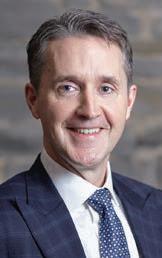
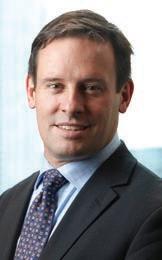
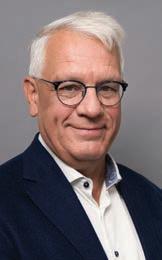
Thunder Bay in April 2022 for $616.9 million following a long-drawn-out bidding war with BHP. However, it will not be able to start construction without an access road currently undergoing an environmental assessment overseen by the Webiquie and Marten Falls First Nations.
“We believe that the Ring of Fire with respect to further nickel deposits is as prospective as Sudbury,” said Flewelling.
 By Norm Tollinsky
By Norm Tollinsky
“I know because I used to manage the mines in Sudbury for Falconbridge. It will not happen in the Ring of Fire overnight, but we believe there are many more nickel mines in the region beyond Eagle’s Nest.”
Flewelling acknowledges the environmental sensitivity of the region and has committed to limiting the footprint of the operation to 2.0 km2 recycling water and eliminating surface storage of tailings by returning them underground. “We expect that any future developments by us will be similarly responsible,” he said.
The jury is still out on something significant happening in the Ring of Fire within Flewelling’s five-year window, but nickel developments in established mining camps like Sudbury and Timmins face far fewer challenges.
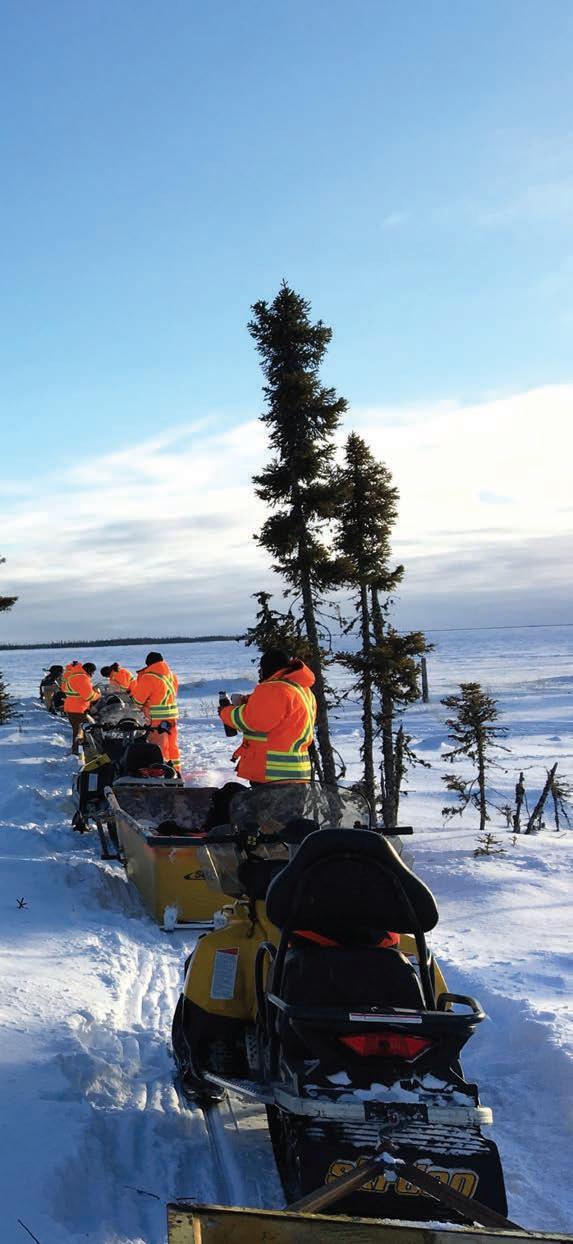
Sudbury Nickel
In October of last year, for example, Vale celebrated the completion of a $945 million refurbishment and expansion of its Copper Cliff mine complex that will almost double ore production from the site, adding 10,000 tonnes of contained nickel and 13,000 tonnes of copper per year. And in November, it signed a longterm offtake agreement with General Motors to supply battery grade nickel sulphate from its Sudbury, Thompson, and Voisey’s Bay mines.
Glencore’s Sudbury integrated nickel operations is scheduled to complete construction of its $1.3 billion Onaping Depth project in 2025, Magna Mining is optimistic that it can put its recently acquired Denison project (the former Crean Hill mine) in production by the end of this year, and DMC Mining Services, a subsidiary of KGHM International, recently completed the installation of a headframe at the Victoria project 35 km west of Sudbury.
In Timmins, Canada Nickel is targeting to have all its permits in place by mid2025 for its Crawford project, 40 km north of the city, and to be in production before the end of 2027. An open pit operation, Crawford boasts measured and indicated resources of 1.43 billion tonnes grading 0.24% nickel and an inferred resource of 670 million tonnes grading 0.23% nickel. Estimated production of 50,000 t/y would make Crawford the fifth
FEBRUARY/MARCH 2023 CANADIAN MINING JOURNAL | 47
Above from left to right: George Pirie, Ontario’s mining minister. Stephen Flewelling, CEO, Ring of Fire Metals. Mark Selby, chairman and CEO, Canada Nickel. Trent Mell, CEO, Electra Battery Materials.
Left: Ring of Fire Metals, a spinoff of Australia’s Wyloo Metals, reopened its camp last fall to resume exploration activity across the 150,000-hectares of claims it acquired from Noront Resources. “We believe there are many more nickel mines in the region beyond Eagle’s Nest,” claims CEO Stephen Flewelling.
CREDIT: RING OF FIRE METALS
The Northern Ontario mining industry is destined to play an important role in the province’s critical minerals strategy as a supplier of nickel, cobalt, and lithium to southern Ontario’s auto industry.
largest nickel sulphide operation globally, according to the company.
“North American nickel supply and consumption is basically either side of 150,000 tonnes per year, but with what’s happening in the EV market over the next five to 10 years, we are looking at going from 150,000 tonnes to 400,000 to 500,000 tonnes per year,” said Mark Selby, Canada Nickel’s chairman and CEO.
A feasibility study scheduled to be released before the end of June will take into consideration considerable savings from refundable tax credits made possible by the company’s ground-breaking “In-Process Tailings Carbonation” process, which will capture and store an estimated one million tonnes of CO2 per year, positioning Crawford as a case study in how critical minerals are developed in Ontario.
Canada Nickel has also been busy acquiring other properties in the Timmins area, including the past producing Texmont property, 36 km south of the city, to begin supplying the market in the near term. “In the last set of meetings that we had with precursor cathode and battery producers in Korea a month or so ago, we mentioned that we might be able to have a source of nickel by 2025, and they almost leapt out of their chairs,” said Selby, “Right now, battery manufacturers are focused on getting nickel in any way, shape, or form, but close behind that there is the environmental issue,” giving Ontario’s sulphide nickel a clear advantage over the “massive carbon footprint” associated with Indonesia’s laterite resources.
Lithium
Northern Ontario has not historically seen any mining of lithium, but long ignored deposits of lithium bearing pegmatites in the northwest are now being targeted by several exploration companies. Australia-based Green Technology Metals, for example, hopes to begin producing lithium from its 100%-owned Seymour project near Armstrong, 250km northeast of Thunder Bay, by the first quarter of 2024. The property has an estimated resource of 9.9 million tonnes of lithium oxide grading 1.04%. Other lithium properties in its portfolio include Root, 300-km northwest of Thunder Bay, and Wisa, 100-km east of Fort Frances.
Green Technology Metals has strategic partnerships with Primero, an Australia-
based EPC company, and Vancouverbased Lithium Americas, providing it with the technical support to turn lithium concentrate into battery grade lithium hydroxide at a proposed processing plant in Thunder Bay. Lithium Americas is advancing the Thacker Pass lithium mine in Nevada and the Cauchari-Olaroz brine operation in Argentina.
Elsewhere in the northwest, Avalon Advanced Materials has a non-binding memorandum of understanding to supply Korea’s LG Energy Solution with battery-grade lithium hydroxide from its Separation Rapids deposit near Kenora by 2025, Sudbury-based Frontier Lithium’s PAK project 175 km north of Red Lake boasts a measured and indicated resources of 21.64 million tonnes grading 1.56% lithium oxide, and Rock Tech Lithium hopes to be in production late this year or early 2024 at its Georgia Lake property between Beardmore and Nipigon.
Avalon Advanced Materials is also hoping to establish a processing facility in Thunder Bay, while Rock Tech has an offtake agreement with Mercedes Benz and plans to ship crushed material to a proposed company-owned and operated refining facility in Germany.
Cobalt
Northern Ontario also produces some cobalt from polymetallic deposits in Sudbury, but close to 70% of this critical mineral comes from the Democratic Republic of Congo (DRC), most of which is refined in China. That will change this year when a long-mothballed refinery currently undergoing refurbishment and expansion by Electra Battery Materials in the town of Cobalt will become the only North American supplier of cobalt sulphide.
Electra Battery Materials has a contract to import cobalt hydroxide from the DRC and an offtake agreement with LG Energy Solution for 60% of the company’s production over the initial three years of operation. The refinery is currently rated to produce 5,000 tonnes of cobalt sulphide per year but could ramp up to 6,500 tonnes.

The U.S. Inflation Reduction Act (IRA), which offers American consumers a $7,500 credit when they purchase a battery-electric vehicle “really put the wind in our sails,” said Trent Mell, CEO of Electra Battery Materials. “If you have any critical minerals being processed in China, that credit goes to zero, so that is a pretty blunt instrument to encourage onshoring by companies like us.”
“The get out of China rule is what is really driving some of our most recent conversations with OEMs and battery makers,” he added. “All of a sudden, there is this new urgency to get it done.”
But Electra Battery Materials has far more ambitious goals. It is also gearing up to establish a battery recycling plant to process so-called “black mass material” – ground up batteries containing nickel, cobalt, lithium, copper, and graphite – and envisions a battery materials industrial park including a precursor cathode active material (pCAM) plant. “In an ideal world, you would have the cobalt, nickel, and manganese being refined in one location and right next to it, you would have a precursor manufacturer,” said Mell. “It would eliminate a step on both sides. We would no longer have to take the cobalt from solution and crystallize it. We would just pipe it in solution, saving both capex and opex. We will be talking to some of the biggest pCAM companies in the world to interest them in colocating with us.”
Ontario mines minister, George Pirie, who has an extensive background in the mining industry with Noranda and Placer Dome, is optimistic about the ultimate success of Ontario’s critical minerals strategy, telling the Canadian Mining Journal, “We have the world class miners, engineers, and technical people, excellent relations with our Indigenous communities, and we are looking at every aspect of the Mining Act to ensure that these projects get permitted quickly.” CMJ
48 | CANADIAN MINING JOURNAL www.canadianminingjournal.com
MINING IN ONTARIO
Norm Tollinsky is the former editor of Sudbury Mining Solutions Journal.
Electra Battery Materials’ cobalt refinery in northeastern Ontario is scheduled for startup in Q1 2023. CREDIT: ELECTRA BATTERY MATERIALS
By Maven Water & Environment and Integrated Sustainability staff
You are making these four mine water management mistakes
Unpacking mine water management: A cornerstone of long-term viability and mine value
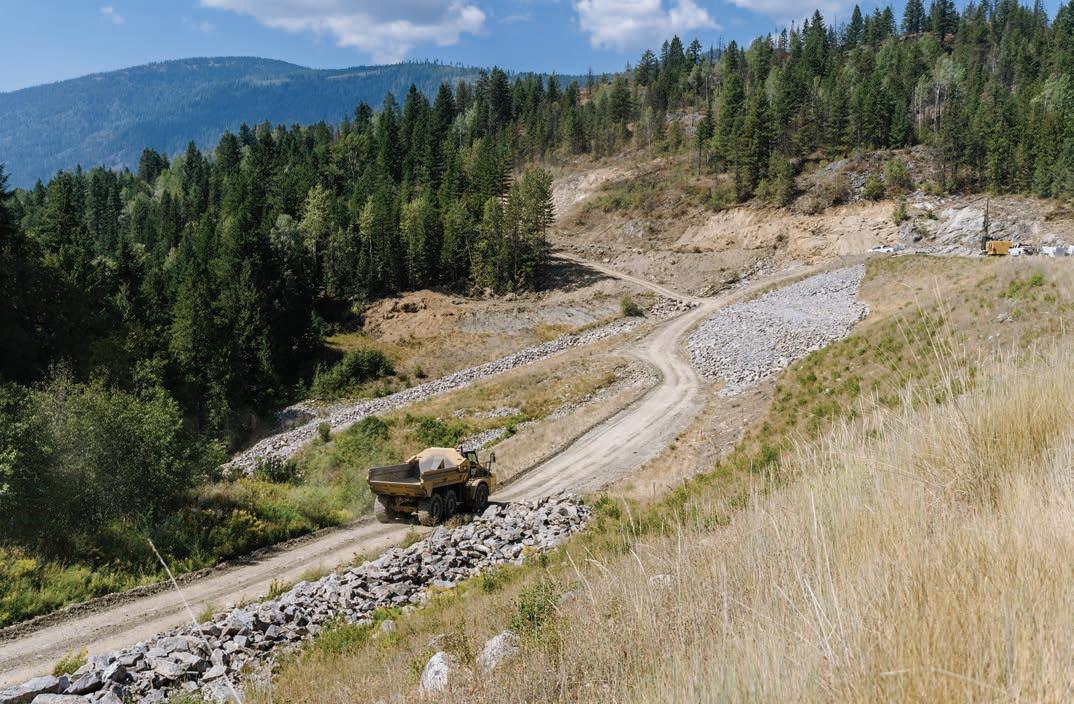
As the adage goes, “if you fail to plan, you are planning to fail.”
These simple words carry great significance during early water management decisions for long-term mining operations. Without a clear plan you can severely undermine the viability and value of your project. The roots of these problems lie in the feasibility planning stages, where water management is sometimes overlooked. A black box called “water treatment system” is drawn into the mine plan, the impacts of water management strategies on the eventual treatment process are often an afterthought. This strategy typically results in a large,
all-encompassing water treatment plant. This approach overlooks potential risks and limits both the mine’s future development flexibility and closure options.
To overcome these challenges, mine developers should adopt an agile mindset and be prepared to adapt to changing conditions throughout the mine’s lifecycle.
After interviewing Dr. Monique Simair, CEO and principal scientist at Maven Water and Environment and Jeffrey Coombes, strategic development manager at Integrated Sustainability, we have developed four tips to help avoid common mistakes and navigate the complexities of mine water management.
1. Let go of centralizing water treatment
Historically, the assumption that an expensive active water treatment system would be enough to handle mine water management was widely accepted. However, this mindset is now widely seen as inadequate. Concerns are beginning to arise around the potential for design mismatch or operational failure of a single system/approach. The industry is beginning to answer through the evolution of decentralized mine water management as a more effective tactic. Decentralized mine water management
FEBRUARY/MARCH 2023 CANADIAN MINING JOURNAL | 49
CONTINUED ON PAGE 50
WATER MANAGEMENT
Mine water management earthworks with integrated sustainability in British Columbia. CREDIT: MAVEN
includes source control, mitigations, and provides contingencies and redundancies throughout the treatment process.
Decentralized mine water management systems treat contaminated water as close to the source as possible. These systems incorporate multiple treatment technologies to minimize the risk of simultaneous failure. This approach considers all sources of water, not only from a perspective of conveyance, but also their chemistry in the context of treatability. Some waters will be more easily treated if maintained separately. Conversely, some waters could become more compliant if blended. Considerations such as these should be part of the overall water management strategy.
By taking a holistic water management approach, mine developers are decreasing the intensity of treatment while reducing chemical usage, greenhouse emissions, and the associated costs. With that said, from a regulatory permitting perspective, there may still be a single discharge point and/or main active treatment system in place prior to discharge. However, the size and costs of this system can be substantially decreased.
To achieve a viable regulatory pathway, mine site planners must combine a comprehensive understanding of mitigation/ source control, active treatment technologies, and passive or semi-passive treatment options. While the upfront capital expenditure can sometimes be higher, the operational cost benefits make it a worthwhile investment. Another benefit of this approach is that it can help move site-specific passive treatment technology processes through the technology readiness levels (TRLs) required by some regulatory bodies, which can eventually help decrease closure bonds.
The “decentralization” or “compartmentalization” of the treatment train also establishes flexibility for the duration of the mine’s life cycle. Plug-and-play treatment segments can help respond to changing environmental conditions and site usage, bringing mobile treatment units and rental options into play for periodic treatment cycles or one-off use cases. These can be particularly useful while implementing site-specific semi-passive treatment strategies that are lower in operational costs and GHG emissions but can take time to optimize and permit.
“If you look at a mine life cycle from day one until closure, I have never seen a mine site where one type of water treat-
ment would work for all of it. During early site-planning phases, water management and treatment experts have the responsibility to supply strategic clarity to enable future operational flexibility and lower overall long-term costs.” Dr. Simair explains.
2. Expect obsolescence
During planning, much of the designs are based on models and projections, leading to potential risk of mismatch of a system design and actual needs. Moreover, mine plans often change as expansions of ore bodies are either identified or become economical over time. This mismatch between the predicted and actual conditions can result in obsolescence of the water treatment system design and large associated expenses and delays in production.
As a mine develops over time, the water management plans need to be updated. This is where using flexible treatment systems can yield significant benefit. By planning for obsolescence from the outset, you can minimize design complexity, defer capital costs, and have the capacity to respond to changes in conditions as the mine evolves.
“I often tell clients, the more expensive it is, the less well thought through it probably was,” states Coombes. “Instead of focusing on your problem today, it pays to be a bit more strategic from the outset. With some foresight, you can Lego-block equipment together as your mine develops. This approach avoids needless investment in equipment that will become redundant later in the mine life.”
There is always uncertainty, and this is where owners should ask their mine water management teams about the adaptive management strategy. How can you modify a process as the mine advances or if unexpected results are encountered? Rather than attacking the problem with cash, where can you proactively address uncertainties and mitigate liability?
Dr. Simair elaborates, “We have been brought into situations where regulators had offered to include flexibility in the operating plans, but the previous consultants did not understand the importance of this in the evolution of the mine and water treatment needs. They did what was easy in the moment and it cost a lot in the long run when the system could not be operated as planned and time-consuming permit amendments were needed. It pays to be open-minded and
collaborative with your regulators.”
In Ontario, limited operational flexibility (LOF) permit amendments offer the option of modifying treatment systems or the operations of the system such as treating different water sources or using different reagents if there is an appropriate mitigation plan in place. If holding ponds and pump back systems are in place, modifications and enhancements to water treatment systems can be more readily done. This also helps to more rapidly advance and prove up new and emerging technologies and approaches to water treatment.
This tactic highlights the recognition by regulators of the need for redundancy planning to minimize the costs of unexpected subsurface conditions, provide operational capacity when needed, and open opportunities for innovative producers to challenge biases and embrace uncertainty.
3. Codify technology readiness and cultivate feedback
Effective communication and engagement are critical components of successful mining projects, especially when it comes to our most precious resource: water. In British Columbia, TRL scale has recently been matched to water treatment and associated permitting for major mines in the province. Although technologies may already be applied at other mine sites, site-specific considerations often result in some optimizations and mitigations needing to take place before the system can be permitted for a different mine site. Selected water treatment technologies must have the TRL identified and then advanced to an appropriate stage to obtain a license. A communication plan must also be developed and followed while advancing the technology to implementation. This process is especially relevant for passive and semi-passive treatment systems, where a wide range of site-specific factors must be addressed through design compared to active treatment systems. To overcome this challenge, it is essential to increase the TRL as quickly as possible through phased pilot testing.
However, a communication plan alone does not always correlate to effective engagement. Involving local stakeholders and rightsholders in the decision-making process at an early stage offers a unique opportunity to gather opinions and ensure the selected approach aligns with an
50 | CANADIAN MINING JOURNAL www.canadianminingjournal.com
WATER
MANAGEMENT
agreed upon definition of success.
Coombes states, “Clear and transparent communication amongst all parties is crucial to avoid any misunderstandings through the development of a project. Misalignment in the goals and definitions of successful water treatment is one of the primary reasons for permit denial in mining projects. Delays can be prevented with a well-thought-out communication and technical strategy.”
Comparing provincial regulatory bodies across the country provides insights into the evolving regulatory process. For instance, Ontario has the LOF permit amendments that enable technology to be rapidly tested and advanced to new applications. On the other hand, assigning TRLs to every water treatment technology proposed for a project is a useful tool in the B.C. approval process. It provides opportunity for engagement and discussion around risks and information gaps as well as timelines for advancing a technology through to full implementation at that specific site.
Incorporating TRLs, using risk identification and mitigation strategies, and maintaining clear and transparent communication are key strategies to avoid foreseeable roadblocks and simplify the permitting process.
4. Focus on what you do best
Accountability and flexibility are key elements of a mine water management strategy, but they can be difficult to achieve when focussed on developing and producing a resource. With goals of simplicity, many have made the mistake of engaging solely with massive “one stop shop” consulting and engineering firms or equipment vendors. “One-size-fits-all rarely turns out well for clothing. It does not work well in managing and treating contaminated water,” Dr. Simair explained.
It can be hard to know whether a water management and treatment strategy is being developed in the necessary site-specific way. It may be an off-the-shelf or cookie-cutter design being repackaged. This approach is unlikely to meet your project’s evolving water treatment needs, highlighting the importance of your mine water treatment team being technology agnostic. You should be confident that your team is recommending fit-for-purpose for your site without a motivation of selling their own equipment or reagents.
Progressive mine developers and operators are turning to specialist mine water

management and treatment teams as a solution to this problem. Water specialist groups offer access to professionals that have dedicated their entire careers to understanding the challenges associated with water, making them better equipped to handle complex and rapidly changing water management issues. Are your consultants just there for the conceptual design, or will they be accountable through implementation and operations?
When consulting with First Nations and regulatory bodies, transparency, accountability, and trust capital become even more important. These groups want to know that the water team they are working with is reputable and has the necessary expertise to handle their water related concerns for the duration of the project.
Your consultants should function as an extension of your team in achieving a successful project. When waste management and mine closure plans are required during the permitting stage, finding a partner that has considered the full-term impacts of the mine life cycle on
water treatment is crucial.
By partnering with the right specialist mine water management company, operators can be confident that they are working with a team that is transparent, accountable, and focused on delivering the best possible results. This strategy can help to build trust and credibility with regulatory bodies and stakeholders.
A path forward
The key to ensuring effectiveness is to make sure that your water management and treatment plan is flexible enough to adapt to changes as they occur. This flexibility requires designers to consider a wide range of variables when planning your mine water management and treatment approach, from the impacts of climate change to changes in regulations. While resource grades used to be the key to finding investors for projects, the new reality is whether a project is likely to achieve regulatory permits and social license to operate now plays a huge role in investment decisions. CMJ
FEBRUARY/MARCH 2023
.com
Is your mine design based on sound geology?
How to improve the competitiveness of Ontario’s mining industry
Insights from Chris Hodgson, president of the Ontario Mining Association
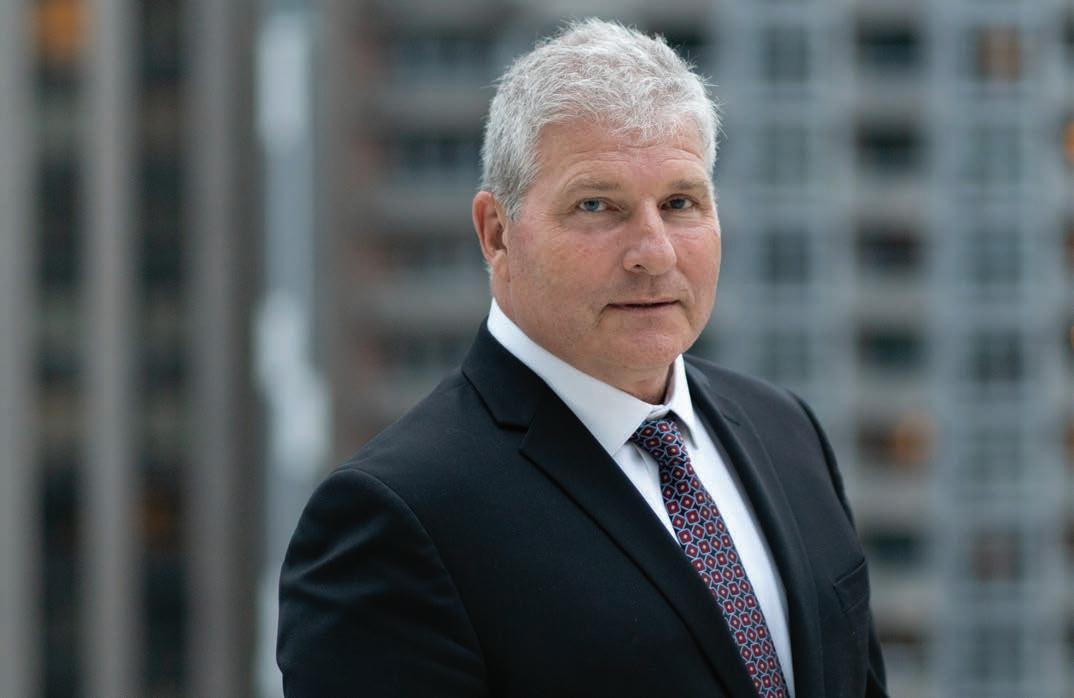
Our annual review on the state of mining in Ontario must highlight the Ontario Mining Association (OMA). The voice of the mining industry in Ontario was established in 1920 to represent the mining industry of the province. It is one of the longest serving trade organizations in Canada. OMA has a long history of working with governments and communities to build consensus on issues that matter to the mining industry and to the people of Ontario. Chris Hodgson (CH) is the president of OMA. He leads all OMA activities and represents the association publicly. Chris is a member of OMA’s board of directors and its executive committee and provides broad policy guidance to the OMA chair. Recently, I had the opportunity to discuss the most recent mining topics and concerns in Ontario with the best person who can talk about mining in Ontario, Chris Hodgson.
CMJ: To start the conversation, can you please talk to us about your journey until becoming the president of OMA?
CH: You are going back to ancient history here! I have been the president of the Ontario Mining Association for over 18 years. I started on Oct. 15, 2004. I followed Patrick Reid, who had been in the position for 20 years prior to that. It has been a long time and a great experience. Before that, I was minister of northern development and mines for several years. I have been to many mine sites, and I knew all the issues, so when the OMA board approached me, I thought that would be a good thing to do for a short term, but the people were great to work with and it turned into 18 rewarding years.
By Tamer Elbokl, PhD MINING IN ONTARIO
52 | CANADIAN MINING JOURNAL www.canadianminingjournal.com
Chris Hodgson joined the OMA following a distinguished career in government. He entered the Legislature following a by-election in 1994, and he won general elections in 1995 and 1999 representing the riding of Haliburton-Victoria-Brock. While in government, Chris served in several positions including minister of northern development and mines, minister of natural resources, chairman of management board, and minister of municipal affairs and housing
CMJ: Can you talk to us briefly about the history of OMA and how it contributed positively to the mining sector in Ontario?

CH: OMA was founded in 1920. So, we are one of the longest serving trade organizations in Canada. It developed in the late 19th century when all kinds of minerals were being discovered in Ontario. In the 1920s, some of these deposits became very economical and catapulted Ontario into being the most prosperous province in the country.
The wealth that came out of those mine sites helped to build the province and supported Canada’s development as an industrialized and globally competitive nation. So, our founders decided that they would like to have a common voice and started this association in 1920. The first chair of the board was Arthur Dorland Miles. He was also the president of Toronto-based International Nickel Company of Canada, which was formed in 1916. The purpose of the association remains consistent with our mission today: to improve the competitiveness of Ontario mining industry while promoting safety, environmental stewardship, and sustainability.
Over the years, OMA has maintained its core commitment to this mission and embraced the progressive changes that have come along with more knowledge to make sure that we continue to be more sustainable and protect the environment better, while improving the safety for our workers. Our focus is still on making sure that the mining sector in Ontario is competitive in relation to other places in the world.
CMJ: What are the main goals of OMA? Did you have to make changes to the mission and strategic goals when you became president?
CH: No, it did not change much. The technology has changed. Developments in digital technologies, analytics, electrification, and autonomous operations, as well as changes in management techniques, create a massive opportunity for mining to increase efficiency, enhance environmental protection reduce the carbon footprint, and continue to improve the safety of our people. Safety is our top priority, and we are proud of our sustained collaboration with the unions, governments, and orga-
nizations dedicated to sharing leading practices in occupational health and safety. The result has been an impressive 96% improvement in lost time injury frequency in the 35 years from 1975 to 2010, which made Ontario one of the safest mining jurisdictions in the world and mining one of the safest industries in the province. Today, we perform better than the WSIB industry average. In Ontario, after years of struggle with a confrontational approach, where everybody would lawyer up, we managed to establish a collaborative culture to achieve our collective safety goals through shared responsibility and continual improvement. We have taken the same approach to environmental stewardship as well. Our responsibility is to make sure that mining benefits everyone involved, especially local communities and First Nations.
CMJ: The Ontario government announced a five-year critical minerals strategy 2022-27. From your perspective, do you think that Ontario is now ready to meet and benefit from the soaring global demand for critical minerals?
CH: We are well-positioned for this challenge. There are a couple of things that came together. One is trying to become carbon-neutral to fight climate change. This calls for shorter supply chains that
use less energy. Our mines are close to the major manufacturing centers in central Canada. The second is that the geopolitical risk with the war in Ukraine, the growing tension with China, and Covid19 really brought to light that supply chains are fragile and that maybe we should be looking at “friendly shoring,” that is, making sure that our supply chains are shorter and closer to home.
The electrification of our economy is going to require a lot of critical minerals, and the digital economy requires even more critical minerals. There are only a few places in the world that have critical minerals, and we are fortunate to be one of these places. We also mine them responsibly – with high standards in safety, environmental protection, and respect for workers and communities. Our traditional advantage has been that we have had clear, honestly applied rules. So, if you invested money and you followed the rules, you would get a return on that capital. That also meant that we have been able to borrow money cheaper than some other jurisdictions, who do not have the rule of law, and we have been able to pay people more money.
We have every opportunity to become a global supplier of choice for critical minerals. As an industry, we also want to make sure that we meet, in a timely fashion, the requirements for carbon neutrality, and that is also going to require more critical minerals. The government’s Critical Minerals Strategy is a step in the right direction for making this happen –it is a well-thought-out plan that considers input from the OMA and other key stakeholders.
CMJ: In your opinion, what should the provincial government do to help Ontario’s mining sector realize its true potential and create more high-quality employment opportunities in the critical minerals sector?
CH: Ontario is blessed with great geology. Mining is one of the only sectors in the Ontario economy where we can truly claim to be a global leader. We offer well-paying jobs and opportunities to make a difference, but we need more people, e.g., skilled tradespeople, engineers, and environmental specialists. It is discouraging to see that the number of people graduating from STEM programs
FEBRUARY/MARCH 2023 CANADIAN MINING JOURNAL | 53 CONTINUED ON PAGE 54
Bus shelter ad on display during one of OMA’s annual Meet the Miners events at Queen’s Park CREDIT: OMA
and going into mining is declining. We must work with the government to improve that. One of our major initiatives this year is a campaign to support recruitment that builds on #ThisIsMining, which invited Ontarians to join us in discovering all that mining in Ontario has become over the first century of OMA’s existence, and all it has to offer today. Now, we want to home in on creative and collaborative ways to encourage more people to commit to education and career pathways in mining.
Everybody says it is about rebranding mining positively. However, the latest polling shows that people understand the importance of mining, and I have never seen support like this from the public in Ontario. People now recognize the importance of critical and other minerals, especially copper and nickel, for the electrification of the economy to fight climate change.
CMJ: How about the fact that women only represent 17% of the mining workforce?
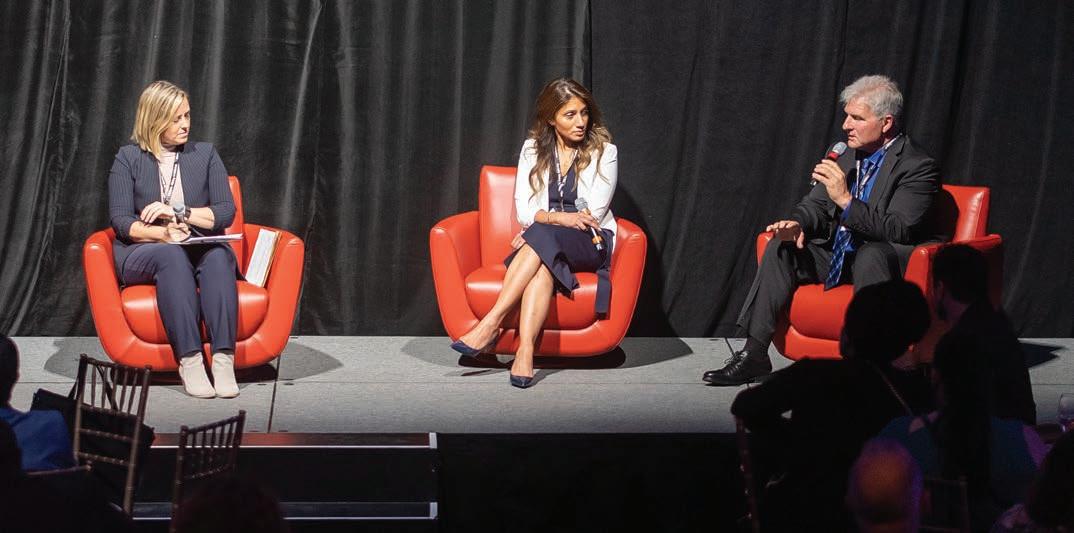
CH: That is a great opportunity; bringing this percentage closer to 50% can help solve our employment challenges. Ontario’s mining companies are implementing diversity and inclusion policies
to increase the share of women and other underrepresented groups in the workforce. These include PPE for women, training on diversity and inclusion, and career development programs. Almost 70% of OMA members reported that they have gender diversity and equity targets with respect to positions of authority. The mining sector also has one of the highest proportions of Indigenous workers of all industries in the province, at 11%, nearly double the percentage of the Canadian population that identifies as Indigenous. That is another area where we see an opportunity to make sure we encourage people with the right skillset to join the mining workforce.
The government realizes that what we produce is critical for the whole world, and for Ontario’s manufacturing and economy – our minerals are the first link in a strong domestic supply chain. We need to produce EVs, batteries and other green technologies. We have the components that go into those, and the manufacturing will follow.
But to achieve success, we need more people, more talent to go into mining. The Ontario government recognizes this. So, they are helping with partnerships for education and training. One of the pillars of the government’s Critical Minerals Strategy is growing the labour supply and developing a skilled labour force,
and we are hoping to work with them on implementing that strategy.
CMJ: How can OMA help in resolving issues with the Indigenous communities? Considering the recent disagreement between the Matawa Fist Nation and the provincial government in Ontario, do you think the provincial government is doing enough to promote further Indigenous participation in mining?
CH: There is a general approach that we think should be taken when working with Indigenous communities and organizations that aligns everyone’s interests. It is consistent with Ontario’s advantage of having clear rules, honestly applied that benefit everyone. All the operating mines we represent work with First Nations, not just those in the Ring of Fire. They contribute to regional communities by prioritizing local hiring and suppliers, supporting health and education initiatives, and concluding various types of agreements related to mine development. This includes impact benefit agreements (IBAs), which have become standard business practice for mining companies to secure support from affected Indigenous communities to proceed with planned developments carried out within their traditional territories. According to
54 | CANADIAN MINING JOURNAL www.canadianminingjournal.com
MINING IN ONTARIO
This Is Mining: The Podcast Live at the OMA’s 100th Anniversary Gala (Left to Right: podcast host, Amber Mac; Natasha Vaz, EVP & CEO, Ontario, Australia & Mexico, Agnico Eagle Mines; and OMA Chris Hodgson, president of OMA). CREDIT: OMA
Natural Resources Canada, currently there are over 140 agreements in place between Indigenous communities and mining companies across Ontario.



We have also always supported resource revenue sharing (RRS). In 2018, Ontario signed three RRS agreements, covering 35 participant First Nations, and these agreements have helped align interests between Indigenous communities and the mining industry to help incentivize community engagement and support for responsible mining projects. We would like to see the current agreements being renewed beyond the current five-year term, and more RRS agreements being signed with other impacted communities in Ontario. It is a model that works well.
In terms of the Ring of Fire, previous and current governments have all consulted and worked with First Nations. We supported their approach, which aims to make sure that mining companies are wanted in the communities, and they made good progress in several communities that are now conducting environmental assessments. The government has








good intentions and is trying to work collaboratively with the local communities, especially the remote Indigenous communities, but there are always going to be issues to resolve. I think the government is working towards making sure transparent and predictable systems are in place. We are not there yet, but it takes a lot of time to build up the necessary trust.
Our members have been building trust by taking a partnership approach to community relations. They address concerns through proactive communication and engage communities in the process of creating sustainable value at the local level. But companies need clear advice from the government on who they should consult with, and how that consultation should take place. The OMA has been advocating for a centralized assertions unit within the Ministry of Indigenous Affairs to provide consistent and prioritized lists of potentially affected Indigenous communities requiring consultation for resource projects. Having this one-window coordination process will create more certainty with regards to consultation and accommodation, thus helping us to reduce risk
and move forward with strategic mineral development.







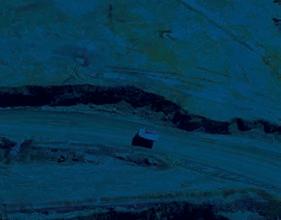
Ultimately, our members only go where they are wanted, and they make sure that everyone benefits. Building trust is essential, and it helps to have a track record that says something... which helps people understand that mining is a temporary land use, and that responsible companies do their utmost to minimise environmental impacts and, when a project is finished, they make sure that the lands revert to as close to their original condition as possible, so they remain usable for future generations.
Finally, all levels of government are now talking about the importance of mining for decarbonizing the world and making economies more sustainable. This is true. The world does need what we have right now, and we have an advantage over other jurisdictions, because we mine responsibly and with a comparatively small carbon footprint, because our electricity grid is virtually carbon free. We can contribute to making the world a better place not just for local communities, but in a global sense.
CMJ




Sponsored by






























FEBRUARY/MARCH 2023 CANADIAN MINING JOURNAL | 55
WATER IN MINING: GLOBAL SUMMIT
ADDRESSING WATER IN THE AGE OF CRITICAL MINERALS APRIL 25 – 27, 2023 TORONTO, CANADA 160+ Senior decision makers 44 Industry expert speakers 10+ Hours of networking 3 Insightful conference days 1 Evening gala dinner BOOK NOW SAVE 15% Your exclusive Canadian Mining Journal discount – use and save 15% on your ticket to Water in Mining Global Summit! CMJ15
Ontario is making a significant contribution to Canada’s
net-zero target
Mark Selby, president and CEO of Toronto-based Canada Nickel Company, is optimistic that his company’s Crawford project, located 40 km north of Timmins, contains enough recoverable nickel, not to mention cobalt and platinum group metals (PGM), to make a substantial contribution to the global transition from fossil fuels to clean energy.
“The Western world needs large amounts of low-carbon nickel,” says Selby. “We hope Crawford is going to be an important deposit and … make an important contribution to the global electric vehicle market. These big, bulk tonnage ultramafic deposits that can be zero-carbon or negative are exactly what the world needs right now.”
Indeed, nickel, cobalt, and PGM are among the 31 minerals the federal government has deemed critical to Canada’s transition to a low-carbon economy. But Canada Nickel is several years away from putting a mine into production at its Crawford site.
The company completed a preliminary economic assessment in May 2021 and expects to release a full feasibility study by mid-year. Selby says he hopes to complete permitting by mid-2025 and, allowing for 2.5 years of construction, the com-
pany be producing by the end of 2027.
Selby got involved with Canada Nickel in the summer of 2019 after leaving Royal Nickel Corporation, now called Karora Resources. “I got a call from a couple of investors who said they had put four holes into this property north of Timmins and they had made a discovery,” he recalls. “With the four holes they had and the geophysical footprint, I knew this could be a very large deposit.”
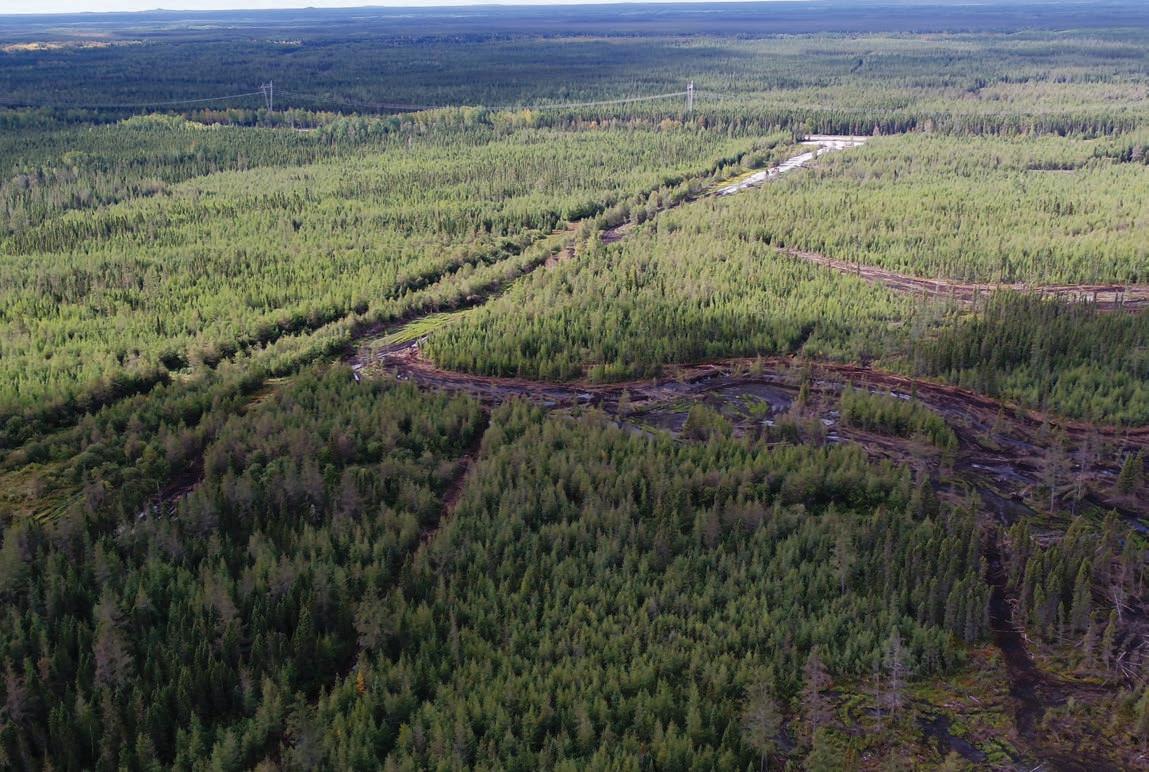
They formed Canada Nickel, raised $6.5 million privately and went to work. Since then, they have drilled 300 holes, totaling some 150,000 metre, and, they believe have hit something very big. “From a start in September 2019,” says Selby, “the Crawford deposit has become the fifth largest nickel sulphide deposit globally. We think what we have will ultimately end up yielding more nickel than Sudbury.”
Crawford contains some five million tonnes of ore, from which they expect to recover two million tonnes of nickel, but this deposit, which spans 1.5 km2, is only part of the story. Over the past two years, they consummated 27 deals to assemble a land package that covers 42 km2.
“We said Crawford is turning out better than expected so we should look around Timmins to see if there are other
Crawfords out there,” Selby says. “We used a specific geophysical template, based on deposits that have a certain amount of magnetite in them, which means they light up when you fly over them. What was amazing was that about 20 different deposits lit up around the Timmins area.”
The company plans to develop an open pit mine at Crawford, a low-grade, high tonnage deposit with a measured and indicated resource of 1.43 billion tonnes of ore at 0.24% nickel. The property is sufficiently promising to have attracted the interest of the British-based multinational Anglo American.
In early February, the two companies announced that Anglo American is investing $24 million for a 9.9% interest in Canada Nickel. According to the media release announcing the deal, Canada Nickel has agreed to an off-take agreement under which Anglo American will have the exclusive right to purchase up to 10% of recovered nickel concentrate as well as iron and chromium found in the magnetite concentrates.
Another interesting wrinkle is a provision allowing Anglo American to purchase any corresponding carbon credits from the Crawford project and they could be significant. As Selby notes, most
56 | CANADIAN MINING JOURNAL www.canadianminingjournal.com
MINING IN ONTARIO
of the ore is contained in ultramafic rock. “A big plus with these deposits is that when this rock is exposed to air it spontaneously absorbs carbon dioxide,” he says. “If you inject CO2 as it is going through the mill, you can make that process happen much more quickly and pick up a lot more CO2. Our project could be one of the largest carbon storage facilities in Canada.”
Indeed, the company has delayed the release of its feasibility study to mid-year to incorporate the project’s carbon capture and storage potential. Selby estimates that the mill and the tailings facility will be capable of absorbing up to two million tonnes of CO2 annually.
In addition to the Anglo American deal, Scotiabank and Deutsche Bank are acting as equity advisors to arrange project financing. Selby says he has also held talks with South Korean companies that convert nickel into the precursors and the cathodes used in batteries and he has approached global auto manufacturers who are rapidly gearing up to produce battery electric vehicles.
“We are saying if you want this much offtake, you are going to have to provide this much capital to get this project going,” Selby says. “We hope those discussion will yield most of the equity capital we will need.”
In the PEA, the company estimated the capital cost of developing the mine at $1.2 billion, but Selby says they are going to boost that number 50% to $1.8 billion in the feasibility study. He adds that the feasibility study will peg the life of mine at 40 years, up from 25 in the PEA.
The company plans to construct a mill capable of processing up to 120,000 tonnes of ore per day. “We will produce a concentrate that contains nickel as well as cobalt, platinum, and palladium,” Selby says. “We will also produce a magnetite concentrate that contains about 3% chrome on average, which used in the stainless-steel alloy industry.”
In short, Canada Nickel’s Crawford project is an ambitious undertaking that could make a significant contribution to

Canada’s net-zero emissions targets. Generation Mining’s Marathon project could make a significant contribution as well and make an important statement to investors, both domestic and foreign.
Meantime, Toronto-based Generation Mining has a more advanced project that will produce copper, another mineral on the country’s critical list, and palladium, which is also on the list but as a PGM.
The company’s Marathon project takes its name from the nearby town, which is located on the trans-Canada Highway about midway between Sault Ste. Marie and Thunder Bay. Marathon, the town, was long known for its pulp and paper industry, although there are several mines in the broader area including Barrick Gold’s celebrated Hemlo property.
Generation completed a feasibility study in 2021, which put the cost of constructing and commissioning a mine at $655 million, although inflation has put upward pressure on that figure, says president and CEO Jamie Levy. Nevertheless, the company has lined up most of the necessary financing.
The project is now before a joint review panel and, Levy says, the company has checked all the proverbial boxes necessary win federal and provincial approval. “This is a clean deposit,” he says. “The mine will have a small footprint. We are not affecting too much wildlife or impacting watersheds. We have signed a community benefit agreement (CBA) with the nearby Biigtigong First Nation, so we have approval from them. We have the consultation records from all 18 First Nations and Metis groups in the area.”
He is optimistic that permitting will be complete this year and construction of the mine can begin in the third quarter of 2023. Construction will take 20 months and, ideally, Generation will produce its first copper concentrates by the end of 2025. “We are a single asset company, so our team is very focused on getting through this,” says Levy.
Generation acquired the property in 2019 from the South African-based Sibanye Stillwater for a mere $6 million. The company has been able to move the project forward as quickly as it has because the previous owners had completed an internal feasibility study. They had also started the environmental assessment process and by 2014 were prepared to go to joint review panel
By D’Arcy Jenish
hearings when they pulled the plug.
“We did get it for a song, if you want to call it that, but Sibanye owns 19% of the company and they have been supportive shareholders,” says Levy. “They want to move this project forward.”
Generation is planning to develop an open pit mine that will yield an estimated 120 million tonnes of ore over a 13-year life of mine. And, as the company boasts in its feasibility presentation to investors: “We have got the metals for the green revolution.”
The mine is expected to produce 1.1 billion Ib. of copper, an essential metal in electric vehicles, 4.2 million oz. of palladium, 80% of which is used in the catalytic converters that scrub emissions from internal combustion engines, and 1.4 million oz. of platinum, which can be used in hydrogen fuel cells.
The mine will comprise three pits, which will be developed sequentially, and they will span an area three kilometres long by 500 metres wide. Marathon will employ about 400 full-time when it is operating at capacity. The processing plant will produce an estimated 87,000 tonnes of copper concentrate annually.
“We will be selling that to a smelter, either in Canada, Germany, Sweden, or Finland,” says Levy. “They will do the assays and then pay us for the PGMs they recover, whether its platinum, palladium, or other metals.”
As for financing, Vancouver-based Wheaton Precious Metals, one of the world’s largest streaming companies, has agreed to loan Generation $240 million in return for 100% of any recovered gold and 22% of the platinum that the mine produces. Generation has already drawn down $40 million and will get the balance once construction begins.
Export Development Canada has agreed to advance the company US$200 million, and the company has negotiated indicative terms for an additional $200 million from several banks.
“We are short a little bit and that is money we are looking to raise after we have received some of the key permits and announce some other upcoming news,” says Levy.
“To have this project go ahead can be a as showpiece to demonstrate to the rest of the world that Canada supports mining,” Levy says. CMJ
D’Arcy Jenish is an eastern correspondent for CMJ and the author of several books
FEBRUARY/MARCH 2023 CANADIAN MINING JOURNAL | 57
A generational
THE EV SUPPLY CHAIN IN NORTHERN ONTARIO
There is an enormous opportunity for northern Ontario on the horizon. The global move toward decarbonization and electrification is a large enough market opportunity to benefit all parts of the critical mineral supply chain. While the opportunity is vast, it is still possible for some regions to miss out by not capitalizing on the moment and failing to take advantage of the rare prospect that has been presented by this global shift.

As a lifelong northern Ontarian, I worry about missing opportunities for economic development, especially when our region is so well-suited to play a role. Ontario has a long history as an extractive, resourcebased economy logistically linked from the mineral riches in the north to industrial production and access to export markets in the south. This economic model that relies on the extraction of primary resources for export is often described as a “staples economy.” While the way these resources are extracted and processed have advanced tertiary sectors, such as
the mining supply and services sectors, mineral resources are still generally mined and smelted into pre-commercial form locally and shipped elsewhere for value-added manufacturing. Often, it is these more lucrative value-added development opportunities that elude resource economies, and most of the economic benefit is enjoyed in districts where raw resources are turned into commercial products.
The opportunity the increased demand for metals presents can also represent the occasion for more value-added processing and manufacturing to occur here as well. As a region, the least northern Ontario should do is to supply raw materials that feed into the bottom of the supply chain. The north can play a larger and more integrated role in the supply chain. From battery metal processing, cathode and anode production to end of life battery recycling, northern Ontario has all the pieces required to host the major industrial operations needed to make Ontario a powerhouse from mines to mobility and beyond.
All indications are that the growth in electric vehicle demand and the correlated growth in battery metal demand will be far-reaching enough to provide economic benefit to all districts that make up parts of the supply chain. In a 2021 outlook on the prospects for electric vehicle deployment, the demand for EVs is expected to grow from 11 million passenger BEVs in 2020 to between 145 million and 230 million in 2030. Accordingly, a report by Allied Market Research stated that the battery metals market size was valued at $11.3 billion in 2019 and is projected to reach $20.5 billion by 2027. All told, by 2040 upwards of 3.0 billion tonnes of metal could be needed in the clean energy transition. These materials are needed to create technology such as electric vehicle battery packs, solar panels, and wind turbines. This opportunity can be a tide that lifts all boats, but the degree to which we take advantage of this opportunity locally is still unclear. What is clear is that the northern hinterland has much to offer.
58 | CANADIAN MINING JOURNAL www.canadianminingjournal.com
JASON /ADOBE MINING IN ONTARIO
Northern Ontario has the largest concentration of mining and mineral processing knowledge in North America, and some have said, even the world. This expertise resides in the engineers, scientists, and operators that work in the mines themselves, but also in the wider mining ecosystem made up of engineering firms, technology companies, and research organizations. This ecosystem has spent the last hundred years developing, operating, and maintaining operations that have fed the world its critical minerals. It is also this intellectual advantage that makes the region ideal for new, large-scale industrial production. When it comes to mining and processing, the region four hours north of Toronto is unmatched.
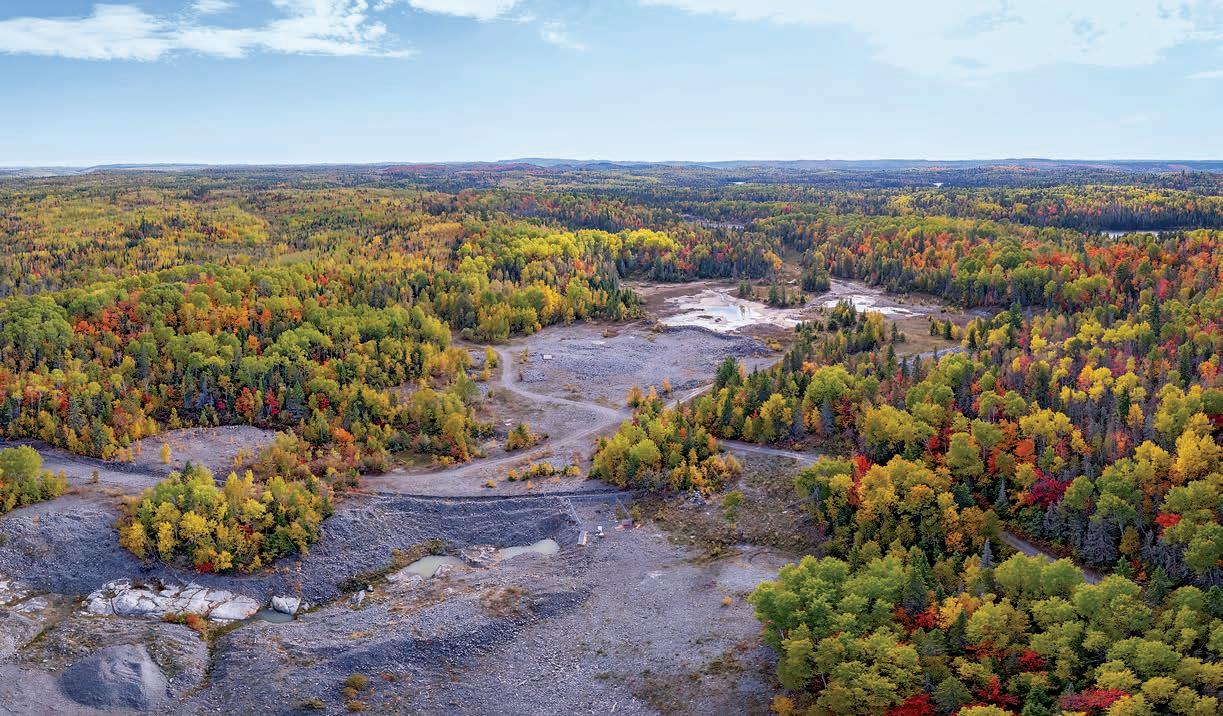
It has been well-reported over the last two years that Ontario has a shortage of industrial lands that is impeding economic growth. This shortage was exacerbated by the Covid-19 pandemic, as warehousing space for online shopping and distribution gobbled up any vacancies
near urban centres in the south of the province. What this means is those new industrial facilities servicing the critical mineral supply chain will have to look to rural and northern communities to find suitable lands. Northern Ontario is primed to answer that call as there is an abundance of vacant industrially zoned land and underutilized industrial properties across the north. Some of this land is un-serviced or underserviced, but the availability, competitive cost, and proximity to mine sites and transportation corridors can outweigh the up-front servicing costs. Moreover, there is a tendency among northerners to be more amenable to industrial developments happening in their backyards as most communities have co-existed with heavy industry for generations. Industrial projects with the potential for significant job creation are welcomed in the north, and the region has the lands needed for plants of the future to set up shop, provided this is done responsibly and in consultation with Indigenous communities.
By Steve Gravel
We have a window of opportunity that will not stay open forever. While the market will be big enough to benefit many communities, things are moving quickly enough that firms will look elsewhere. If we fast-forward two decades and all we must show for it is a few new holes dug into the ground, we will have failed to take advantage of this generational opportunity. If, instead, we work together on a strategy of investment attraction and supply chain integration that includes the north as a key district for value-added processing, we have a chance at sustainable economic development that lasts far into the future. The north has the minerals, the people, and the land to be an attractive destination for companies looking to establish operations. What is needed now is a concerted effort to shout from the rooftops that we are open for business and ready to get to work building the economy of the future. CMJ
FEBRUARY/MARCH 2023 CANADIAN MINING JOURNAL | 59
opportunity
Steve Gravel is the manager of the Centre for Smart Mining at Cambrian College.
Making critical connections: THE RACES
FOR MINERALS AND TALENT
The Covid-19 pandemic, economic and political turbulence, as well as the growing urgency of the climate crisis have transformed how we think about our economies and our societies. The policy choices governments make today will determine our success in building a greener, more inclusive, and more resilient tomorrow. In 2022, Ontario announced its first-ever critical minerals strategy, thus, setting in motion decisive action on climate change and charting an ambitious path that empowers Ontarians to face the future with hope and confidence.
Mining is fundamental to driving the transformational changes that will create long-term value for Ontario communities, while building a low-carbon economy at home and abroad. The government’s strategy recognizes that there is a generational opportunity to build economic development opportunities with local communities and Indigenous partners in 2023 and beyond, while decarbonizing our economy, strengthening Ontario’s mining-to-manufacturing supply chain, and contributing to the global fight against climate change.
The race to reach global net-zero emissions – a.k.a. the green revolution – represents the greatest market transformation – with the greatest economic promise – since the industrial revolution. A World Bank Group report, Minerals for climate action: the mineral intensity of the clean energy transition, finds that the production of minerals, such as graphite, lithium, and cobalt, could increase by nearly 500% by 2050 to meet the growing demand for clean energy technologies. It estimates that over three billion tonnes of minerals and metals will be needed to deploy wind, solar, and geothermal power, as well as energy storage, required for achieving a below 2°C future.
The Ontario Mining Association (OMA), in partnership with the Ministry of Mines, released two reports, The state of the Ontario mining sector – Economic report and Critical minerals analysis, which show that the minerals found in Ontario create an opportunity for the province to build a strong domestic mining-to-manufacturing supply chain and be a key player in the global energy transition. Mining is one of the few sectors in the Ontario economy in which we can claim to be a global leader. Ontario miners and suppliers are driving innovation to address productivity and safety, as well as environmental, social, and governance (ESG) priorities, including reducing or eliminating emissions and waste at their operations. We have the fundamentals to succeed, but we will be competing with jurisdictions
across Canada, allied nations, and indeed the whole world, to feed the decarbonization-driven commodity super cycle. Throughout our evolution to where we are today as leaders in responsible mining, our people have been our strength. At this critical moment, we need new generations of talent to compete.
Canada’s mining industry will require about 80,000 to 120,000 new hires by 2030, according to the Mining Industry Human Resources Council. The labour shortage will become even more acute, as there will be a sustained demand for jobs in mining over the next three decades, as global decarbonization efforts and electrification trends gather momentum and drive the need for more mines and more mineral processing capacity. The current labour shortage is driven by three main factors: a wave of retirements as baby boomers age; resignations caused by behavioural changes, as people rethink their priorities and expectations due to the pandemic; a decrease in the number of graduates with advanced degrees in STEM fields, and fewer people qualified in skilled trades.

60 | CANADIAN MINING JOURNAL www.canadianminingjournal.com MINING IN ONTARIO/RECRUITMENT, TRAINING & CAREERS CREDIT: NIYAZZ/ADOBE IMAGES
“Retaining and replacing the current workforce and attracting workers with the critical skills needed for an ever-changing and technologyintensive working environment requires a radical rethink of our approach.”
Many are simply unaware of the opportunities. The Ontario mining sector offers safe, well-paying, stable jobs. The average weekly wage in Ontario mining is 70% higher than the average industrial wage in the province, with mine workers and mining support workers averaging a weekly salary of $1,900. Between 2001 and 2019, earnings for mining and quarrying grew by 66%, while earnings for mining support activities grew 80%. Jobs in our sector remained stable during the Covid-19 pandemic, with mining being declared essential and companies taking effective action to protect workers’ health and safety. Indeed, mining is one of the safest industries in Ontario. From 1975 to 2010, the Ontario mining industry achieved a 96% improvement in lost time injury frequency, making Ontario one of the safest jurisdictions for mining in the world. We are working toward zero harm, with a steadfast commitment across the entire industry that everyone goes home safe at the end of the shift.
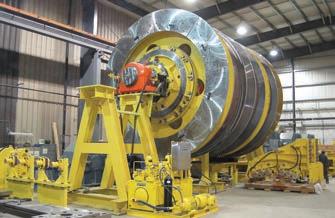

Moreover, OMA members are focused on making the industry more inclusive and diversifying the labour pool by increasing the participation of women, immigrants, Indigenous people, and workers from other industries who have transferable skills. We are encouraged by the government actively seeking solutions to address the labour shortage, including through the implementation of Ontario’s Skilled Trades Strategy. More needs to be done to encourage people to commit to education and career pathways in mining.

 By Chris Hodgson
By Chris Hodgson

Retaining and replacing the current workforce and attracting workers with the critical skills needed for an ever-changing and technology-intensive working environment requires a radical rethink of our approach. It necessitates correcting outdated perceptions of mining, as the OMA has been striving to do through interactive outreach campaigns, such as #ThisIsMining, and doing more to highlight the appeal of careers in mining operations, which are located outside big urban areas, such as the GTA (see for example, OMA’s #ThisIsMinining Adventure).
When it comes to choosing careers, people are driven by different motivators. These can include financial gain, personal and professional interests, and lifestyle considerations. One element that is increasingly appealing to jobseekers is finding a way to positively change society while earning a living. Mining ticks all these boxes. It is the perfect place for values-driven, solution-oriented individuals who are enthusiastic about the environment and want to play an active part in the green revolution, while making a good life for themselves and their loved ones. In its critical minerals strategy, the government of Ontario outlines its intentions to grow the labour supply and develop a skilled labour force. We see great promise in working with the government and other partners on creating a refreshed approach to retaining and attracting mining talent – one that transforms how people think about mining. CMJ


FEBRUARY/MARCH 2023 CANADIAN MINING JOURNAL | 61
ENGINEERING INC Mine Hoist Systems 24/7 Local Technical Support www.hepeng.com sales@hepeng.com Proudly Designed & Manufactured in Canada
Chris Hodgson is the president of the Ontario Mining Association.
By Callum Stewart
Human centered approach to maximizing returns from innovation, transformations, and operations excellence
The mining industry seldomly finds itself in a predictable steady state. In the last decade, the sector was impacted by geopolitical instability, increasing pressures to maintain license-to-operate, growing demand to meaningfully deliver on ESG commitments, pandemic related supply chain disruption, and most recently significant inflationary pressures. If history is anything to go by, there should be low expectation that things will improve markedly in the short-term. That being said, and to paraphrase the saying, from adversity comes opportunity.
Mining companies are actively investing in understanding how their business models, strategies, and tactics need to change and adapt to the emerging context. Specifically, configuring to “future-proof” their business’ people, processes, and
technologies to create an adaptable platform that delivers sustained value and competitive advantage.
Meaningful value can be realized through innovation, transformation, and creating a culture of operations excellence. However, as initiatives move from strategy to execution, there is, in most cases, a significant decline in realized value delivery as the focus moves from the design to operationalization.

Why so many initiatives fail to deliver promised benefits is typically highly situational and complex. A common early indicator of disappointing results is an underappreciation of the people aspects of the people-processes-technology model for change.
Placing people at the centre of improvement is an effective means to accelerate value delivery initially, build longer-term sustainability and return on investments; while building adaptability. This is especially relevant where the “people” in question are on the frontline where many operations and innovation orientated improvements succeed or fail. After all, the distributed nature of mining requires a reliance on high levels of discretionary decision making in the frontline to cater for short-cycle variability and deviations-to-plan.
Placing frontline workers, specifically, at the centre of improvement processes fundamentally means integrating success factors as early as possible; and incorporating inputs from these teams in the design process. Some of the ways to place these teams at the centre of improvements include the following:
Selection of the candidate
Professionnal and background checks
Recruitment process
Language courses
Immigration and arrival processes
Integration into the company
... And many more services !
contact one of ouR RepResentatives :
Canada : +1 (514) 612-7172
South America : + 57 (601) 790-0072
inf o@hrhworkforce.com
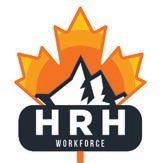
1 Engage early and meaningfully with the frontline: Engaging early supports aligning around the imperative for change and allows for early identification of potential derailers at a point where these can be mitigated effectively. This is an early opportunity to demonstrate a real commitment to building a fit-for-purpose solution which is an important step in building ownership of operational outcomes. In practice, this will vary from operation to operation, but effective tactics include any opportunities to embed improvement teams in operations to better understand practical challenges and opportunities. Crossfunctional and role idea generation, in-situ engagements (i.e., waiting areas, underground workshops, etc.), ride-alongs, or dayin-life-of reviews are examples of effective ways to locate the problem to be solved and solution under design in the area of delivery.
2 Define the expected outcome and configuration of the solution from the perspective of the frontline: The locus of control of frontline teams is typically significantly narrower and on a shorter timeframe than the intended benefit of the overall solution. For example, a shift supervisor has an area of influence restricted to their area of mining and is likely incen-
62 | CANADIAN MINING JOURNAL www.canadianminingjournal.com
RECRUITMENT, TRAINING & CAREERS
RecRuitment of qualified peRsonnel in engineeRing and geosciences
www.hrhworkforce.com
tivized on weekly, or at most, monthly production objectives which can be lost in the bigger picture of an improvement approach. The intended benefit of an improvement initiative needs to be cascaded to reflect what frontline teams have control over and contextualized in terms of how it will impact on their performance metrics. It may be useful to ask, for example, > Can the frontline relate personally and individually to why the initiative is important?
> Is their role, expectation, and the benefit clear and unambiguous?
> How will they interact with the system, and how can it be configured for their ease of use?

3 Build ownership and accountability in technical and operational teams: In the world of “flavour-of-the-month” initiatives, there is a risk that any new activity is disregarded as the next fad. Integrating the process with the existing operating system supports positioning of the improvement as “the way we do business” rather than an addition to the current workload. If a robust operating system is not in place, creating it
around the work being done is an effective way to create the opportunity for discussions that support achieving the intended outcome. Transparency, visibility, and short-interval engagement are key. A well-configured management operating system provides just that as well as the opportunity to create an action and accountability orientated culture where teams agree what is to be done, what is needed to achieve it, and then holds each other to account in a short interval to deliver.
As mining companies seek to build competitive advantage and the platforms from which to sustain this in the coming years, it remains an imperative in the short-to-medium term to recognize the pivotal role that frontline teams play in delivering value from investments in innovation and operations excellence. While there is no one-size-fits-all solution, a key foundational element of any successful improvement lies in building inclusion and integration with frontline teams early in the process and providing the opportunities, routines, and forums to build ownership and accountability. CMJ
SOUTH32
Hermosa Project
The South32 Hermosa Project in Southern Arizona is the only advanced manganese project in North America. It has a viable pathway to domestically produce battery-grade manganese to supply US demand and also includes one of the world’s largest undeveloped zinc resources.

One project, two US critical minerals. Learn more at south32.net/hermosa.
Please visit the South32 team at booth #2516.
FEBRUARY/MARCH 2023 CANADIAN MINING JOURNAL | 63
Scan for current career opportunities
Callum Stewart is a senior manager at EY Canada.
RECRUITMENT, TRAINING & CAREERS
Losing the next generation of women in mining
According to a 2021 McKinsey study, women represent an estimated 8-17% of the global mining workforce. In addition to low labour force participation, the drop-off from entry level to executive for females in mining is the most dramatic across all industries studied.
Here in Canada, the Canadian minerals and metals plan has a 30% goal of women participation in mining, but according to the Mining Industry Human Resources Council (MiHR), the industry has a long way to go.

Research shows both low rates of entry for women into the industry and high rates of attrition as their careers unfold. Why is increasing representation of women in the mining industry such a hard goal to move?
The Northern Miner Group hosted Edumine’s second annual panel discussion on what the points of resistance are for women at each stage of a mining career, what can be done to challenge or change these, and how to create a shift in the culture and perception of the mining industry to not lose the next generation of women. This article is based on that conversation.
Labour competition or collaboration
Jamie Wolcott, director of labour market information for MiHR, stated that there are several performance indicators in the mining industry but noted that the most common question he gets is about women’s representation in the mining industry.
According to a MiHR labour study, there has not been much improvement since women’s representation in the mining industry has come to the attention of companies. There has been only 3% improvement over the past decade.
Some may view this as a mining only problem, but it is across many industries and largely comes down to the labour pool. There is a small labour pool that the mining industry calls upon. “We did not lose women when they were picking their industry, we lost them with selection of occupation.”
What this means is that the problem of women representation is not a mining specific problem but across the entire labour market. Walcott proposes that what might be a better
By Nicholas LePan
metric to track female participation is mining’s share of labour supply. This metric proposes a different strategy.
Wolcott offers a different strategy that would focus on labour force development rather than solely recruitment. Competition with other industries alone will not move the needle, but working with other industries to grow a larger labour pool of women could. The ideal approach is going to vary by occupation and a strategy needs to be tailored to each occupation.
If people are going to choose mining related trades and careers, how can the industry grow the potential labour pool?
Dana Pray, an experienced recruiter in mining, calls on the industry sector to create greater interest with women at an earlier stage in their careers. The mining industry has great reach into universities, but people are not aware of this as a career choice. The mining industry needs to focus on helping women make the choice for mining as a career.
Pray points out that there is a serious need to improve the representation of the “rough” mining industry. Mining is no longer pickaxes and shovels, but this is the image that people unfamiliar with the industry think of. There is a world of technology and innovation in the mining industry that is not being communicated.
It is not just a poor representation of the industry, but also people’s dissatisfaction with their own roles. Monica Moretto, vice-president of sustainability, diversity, and inclusion at Pan American Silver, noted that 35-45% of the world’s labour force is looking to change their careers.
In addition, Moretto noted that between 2015 and 2019, there has been a 33% decrease in women going into engineering at school and 22% decrease in women going into geology. This was prepandemic and since then this problem has grown.
Moretto sees the workforce is changing and the way the mining industry works is not attracting the next generation. The need is greatest at the foundation of mining operations to build a future. It is not just education, but it is also about retention. It is word of mouth that keeps people at companies.
To capture more people, Moretto believes the focus needs to
64 | CANADIAN MINING JOURNAL www.canadianminingjournal.com
CREDIT: AGNORMARK/ADOBE IMAGES
be on retention and creating a proud culture of mining. Technological innovation needs to be embraced to create changing roles focused on innovation and technology because the older generation is retiring soon, and a new culture of work is coming.
A previous generation’s points of pride are often not passed onto the next, so how does the mining industry create a work culture that a tech-savvy female millennial generation would be proud of?
A changing culture in mining and a sense of belonging
According to Andrea Carter, a talent consultant to the mining industry, North America stands at the face of a huge talent risk because business education is not adopting equity, diversity, and inclusion principles. In addition, she adds one more key metric to consider: belonging.
Moreover, the employee-organization relationship has primarily been modelled through a “fit-in or risk being excluded model” rather than valuing the importance of diverse perspectives and experiences that contribute to organizational growth. This can often leave employees not feeling welcome in the mining industry.
Carter used data to explore the question of who feels they belong in the mining industry and revealed that one of the most important factors is a sense of belonging are gender, ethnicity, and career level.
Carter’s statistical analysis demonstrated that there is an important relationship between belonging and gender. When
further analysis of the relationship was investigated, the relationship revealed that those who identify as male perceive belonging with meaning and a higher willingness to contribute to organizational goals.
Companies need to create new metrics to attract and retain the next generation of women and make women feel like they belong in the industry. Organizations need to create the sense of belonging from the beginning and throughout the employee experience.
The mining industry’s greatest challenge
Mining companies are now facing one of the greatest challenges, the global energy transition, but its productivity is declining and its positive contribution to a sustainable future is questioned.

The industry will need the most talented people possible. Diversity of talent is not just a moral imperative and an opportunity, but it can provide a serious competitive advantage for companies in a limited labour pool.
Mining companies can unlock the latent talent of an emerging generation of female leaders, and nurturing their development across their career life cycles will seize the advantage in terms of productivity, innovation, and ESG leadership. Hopefully, the mining industry will not miss this opportunity of a generation. CMJ
FEBRUARY/MARCH 2023 CANADIAN MINING JOURNAL | 65 Our
minerals &
we strive for
zero. Wood mining Canada has more than 60 years of delivering some of the world’s largest and most challenging mining projects; we are leaders in mineral processing and metallurgical refining. Join Wood Canada. Be a part of our remarkably talented mining team. Be a part of the solution.
world depends on critical
metals as
net
Nicholas LePan is an independent mining writer who covers the mining industry.
How to s
mitigate top miningbusiness
REGROUPED RISKS:

1 Stakeholder relations and sustainability (ESG, geopolitics, climate change, license to operate).
In September of 2022. Ernst & Young Global (EY) released their annual report on the risks faced by the mining industry as identified by people in the industry (https://www.ey.com/ en_gl/mining-metals/risks-opportunities). The top 10 business risks anticipated in 2023 for mining include the following: Environment, social, and governance (ESG); geopolitics; climate change; license to operate (LTO); productivity and costs; supply chain issues; workforce; capital; digital innovation; and new business models.
Any ranking of risks or priorities is subjective and can be debated ad nauseum. Regardless, most people familiar with the industry, particularly in Canada would agree with the issues identified even if they might order them a bit differently. The question is “So what?” – as in so what can we do to mitigate against these risks and create a competitive value proposition that meets the need of our shareholders and stakeholders?
First, we need to analyze each issue and determine who within the organization ought to be responsible and accountable for managing the risk. Before we do that, we should note that there is some overlap between many of the identified risks, so it is a bit easier to group them in some manner. For example, ESG, geopolitics, climate change, and license to operate all relate in one way or another to stakeholder relations and sustainability. Workforce management, when looked at more broadly as how an organiza-
2 Workforce management (workforce planning and talent management, productivity and costs, supply chain management).
3 Capital.
4 Digital innovation.
5 New business models.
tion will find the people resources (rather than just employees) it needs to accomplish its goals, this necessarily includes reviewing inputs such as productivity, costs, and supply chain. These people resources might include contractors, consultants, and other services providers. In this article, we will let capital, digital innovation, and new business models stand on their own for now.
The reason we distill the list down is to identify where responsibility within the organization lies. Ultimately, the organization’s top leaders need to develop a strategy to deal with the identified risks while also pursuing its unique key business objectives. Once a strategy has been developed, it should be clear what organization structure is needed to ensure the right resources at the right level of competence are in place from top to bottom to execute the strategy to deal with the expected risks.
66 | CANADIAN MINING JOURNAL www.canadianminingjournal.com
ROMAN MOTIZOV/ADOBE RECRUITMENT, TRAINING & CAREERS
In developing the overall strategy, as business traditionalists we advocate that mining companies need to review their fundamentals. To that end, we start with the potential “capital risks” as EY identified. These can be broken down into two buckets. The first looks at investor preferences which are shifting away from some commodities (such as coal, which is seen as being phased out of existence as an industry) and shifting towards commodities that support the future, such as lithium and copper, which are critical to the emerging electrification of vehicles. This trend obviously will force some mining companies to rethink their overall strategic direction.
The second part of the capital risk that EY identified is associated with how companies invest in their assets and specifically looks at the need to modernize operations to include new technologies such as electric equipment (i.e., mining vehicles), remote operating centres, autonomous equipment (e.g., haul trucks), and a myriad of other innovations. Hence, there is a distinct link between the capital risks and the risk of not addressing the need to innovate. Mining companies need to ensure their long-term strategies embrace digital innovation.
Addressing capital risks will help in dealing with other risks as well. For example, in the competition for talent, including talent at the front lines of production, the winners (who will attract investment) will be those who have the latest technology that enables their employees and stakeholders to participate in the future. This is a requirement if an organization hopes to attract new workforce participants to the sector. It should become obvious that there is a deep interconnection between risks. A failure to mitigate against one risk (attracting the requisite workforce or capital, productivity, and costs) will have a knock-on effect on others.
Therefore, the organization’s overall business strategy needs to be cohesive, integrated, and ultimately simple. Therefore, it is important to step back and consider EY’s list as a group and avoid the tendency to deal with each one in a functional silo. In doing so, seeing the forest and not just the trees, the organization should understand how it will need to structure its business in new ways that help it deal with various risk categories without resulting in the proliferation of functions and bureaucracy.
No organization can or should attempt to be the leaders in everything. So, when we look at establishing a strategy and pos sibly new business models what we are really talking about is how the business will address their risks. For example, the elec
trification of a mine likely will involve partnering with a vendor who has developed the necessary expertise with respect to electric vehicles, power distribution, autonomous equipment, and data management. It also means that the internal people responsible for asset management will need to have the level of competence to balance both internal and external resources in these new areas in ways that optimize costs and productivity. The essential next step after the development of a strategy to deal with the risks is to ensure the organization’s structure is aligned to the plan of action.
This means ensuring the organization is built around requisite principles, so the right level of strategic focus is given to each key risk area.
For some organizations, the CEO may want to take a close look at just how significant some of these risks are and to ensure that s/he has the right roles established and the right people doing this work. One specific area that we see as being overlooked is having a C-level executive who is responsible and accountable for managing key stakeholder relations and organizational sustainability. This person should be a peer to all the other C-level participants (i.e., CFO, COO, and CTO) and oversee a portfolio of functions that includes stakeholder relations (e.g., government, indigenous communities, NGOs, the general public, employee relations, labour relations, procurement, and supply chain) – all under the aegis of a chief sustainability officer,
In addition to direct reports in traditional areas like finance, operations, sales/marketing in today’s mining environment, the CEO ought to have a C-level executive managing technology and not just information technology but technology in all areas such as metallurgy, production technology, and all other types of equipment.
When establishing who is in role, leaders need to avoid position inflation. By this, we mean not only establishing the right C-level positions but importantly ensuring you do not overpromote and that individuals given the roles have the capability to think strategically and can appropriately integrate activities

FEBRUARY/MARCH 2023 By Hugh Secord
Hiring and HR Experts in Mining & Green Energy •C-suite executive recruiting • Technical and Professional recruiting •Human Resources services pandcrecruiting.com P&C Recruiting | HR People and Project Solutions
ON THE MOVE
Executive, Management and Board Changes in Canada’s Mining Sector
TOP MOVES IN THIS ISSUE
MANAGEMENT MOVES
» Angel Gold appointed Fernando Erik Villarroel Alcocer as president, interim CEO and a director.
» Angold Resources appointed chair Galen McNamara as interim CEO.

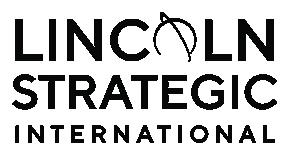
» Argonaut Gold named Richard Young as president, CEO and director.
» ATEX Resources appointed Sheila Magallon as CFO, following Thomas Pladsen’s retirement.
Anglo American’s group director
Matt Daley is a mining engineer with more than two decades of underground, open cut, smelting, refining, project and commodity trading experience. Prior to Anglo American, Daley was the executive general manager for Glencore Canada based in Toronto and served as a non-executive director on the board of PolyMet Mining. He has previously worked for Xstrata and Minera Alumbrera and started his career with Mount Isa Mines in Queensland, Australia.
Stephen Clayson is the newly appointed president, CEO and director of Mantaro
Precious Metals.
Clayson has more than 15 years of international experience as an executive and consultant and has expertise in equity markets and the management of public companies. His previous work has included several years as CEO of a London AIMquoted mineral exploration company and extensive consultancy work for two London AIM-quoted companies which brought gold mines into production.



Artemis Gold’s newest president, Jeremy Langford, has over 15 years of experience with multi-mine gold producer companies. Langford served most recently in the role of COO of Centamin Plc and prior to that COO and EVP construction and technical services with Endeavour Mining. Langford began his career as an Engineer with the Royal Australian Navy. He holds an Honours Degree in Mechanical Engineering and is a Fellow of the Australian Institute of Mining and Metallurgy.
» Azimut Exploration announced Rock Lefrançois as manager special projects.
» Bluestone Resources announced Peter Hemstead as president and CEO and Nevin Lau as CFO.
» Buffalo Coal named Somdeb Banerjee as CEO, replacing Emma Oosthuizen, who is now CFO.
» Carrie Arran Resources named John Downes as CFO. Cassius Ventures appointed Erik Marchand to director, CFO and secretary.
» Central Iron Ore appointed David Deitz (former CFO) as CEO and Graham Hurwitz as CFO.
» Ceylon Graphite appointed Sasha Jacob as interim CEO and director.
» Critical Elements Lithium appointed Michel Clement as senior project control director.



» DLP Resources named Allan Frame as director of business development.
» Flying Nickel Mining appointed Andrew Yau CFO.
» Foran Mining appointed Terri Uhrich as VP and legal counsel.
» Foremost Lithium Resource and Technology named Jason Barnard as interim president and CEO.
» Forum Energy Metals announced Rebecca Hunter as VP exploration.
» Gold Fields announced Martin Preece as interim CEO.
» Kooteny Silver appointed Dale Brittliffe as VP exploration.
JANUARY 202 3 | VOLUME 4 | ISSUE 1
SPONSORED BY ERIK BUCKLAND Client Director Global Mining Recruitment M: +1 416.854.8468 E: erik.buckland@lincolnstrategic.com W: www.lincolnstrategic.com
Isela Costantini
Randy Reichert
Andrew Gubbels
68 | CANADIAN MINING JOURNAL www.canadianminingjournal.com
» Lara Exploration has appointed Bill Tsang as CFO.
» Myriad Uranium announced Nelson Lamb as CFO, following the departure of Charles Ackerman
» Newcrest Mining announced CFO Sherry Duhe as interim CEO, following Sandeep Biswa’s retirement.
» Oceanic Iron Ore appointed Gerrie van der Westhuizen as CFO effective.
» Palamina has appointed Michael Farrant as CFO.
» Pedro Resources announced Fiona Fitzmaurice has resigned as CFO.
» Rhyolite Resources announced the resignation of Fred Stanford as CEO.
» Sayona Mining appointed Guy Belleau as CEO of its Québec subsidiary Sayona Quebec.
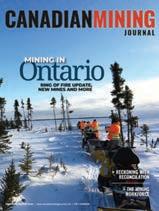
BOARD ANNOUNCEMENTS
» Allied Copper announced Andrew Leslie to its board.
» Andean Precious Metal named Yohann Bouchard to its board.
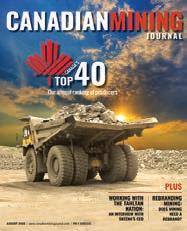
» Awalé Resources named Robin Birchall as independent non-executive chair.
» Blackrock Silver appointed Edie Thome as independent director.
» Candelaria Mining appointed Manuel Gomez to the board.
» Grid Metals appointed Patrick Murphy to the board.
» Highland Copper appointed Stephen J. Hicks as chair of the board.
» Hot Chili welcomed Stephen Quin to the board as an independent nonexecutive director.
» Japan Gold named Takashi Kuriyama to the board, following the retirement of Mitsuhiko Yamada
» Kenmare Resources announced Sameer Oundhakar stepped down from the board.
» Moneta Gold named Sheila Colman to its board.
» Osisko Development appointed David Danziger as an independent nonexecutive director.
» Palamina appointed Peter Bojtos as director of the company.
» Rio Tinto appointed Kaisa Hietala as a non-executive director, effective March 1, 2023.
» Steadright Critical Minerals named Brent Rochon to the board.
» Traction Uranium’s Blair Way has stepped down as chair and a director.
» Vital Battery Metals named Paul Chung as a new director.
» Silver Elephant Mining appointed Andrew Yau as CFO, replacing Zula Kropivnitski, who resigned.
» Sun Summit Minerals named Ken Macdonald as VP exploration.
» Tearlach Resources announced Morgan Lekstrom as CEO and director.
» Teck Resources appointed Crystal Prystai as senior VP and CFO and Greg Brouwer as SVP technology and innovation.
» Toubani Resources named Phil Russo as CEO and executive director.
» Valhalla Metals named Mihai Draguleasa as CFO and corporate secretary and Bonnie Broman as VP exploration.
ACCELERATE YOUR CAREER: https://discover.careermine.com. FEBRUARY/MARCH 2023 CANADIAN MINING JOURNAL | 69
To send your management, board and award announcements directly to us for inclusion in the next newsletter, please email your submission to editor@canadianminingjournal.com SUBSCRIBE TO CANADA’S FIRST MINING PUBLICATION. Mining and Mineral Processing news Since 1882. Print edition is FREE for Canadians involved in mining. Digital Edition and Daily News is FREE. www.canadianminingjournal.com




ADVERTISERS INDEX AMC Consultants 70 www.amcconsultants.com Balsam Promotions Insert www.balsampromotions.com Brandt Group 9 www.brandt.ca Eriez Manufacturing 27 www.eriez.com Evergreen Energy 25 garryevergreenenergy@rogers.com Exploration Mapping 38 www.explorationmapping.com Hepburn Engineering ........................................... 61 .............................................. www.hepeng.com Hercules Sealing Products 70 www.herculesca.ca HRH Workforce 62 www.hrhworkforce.com Komatsu 2 www.komatsu.com Maestro Digital Mine 31 www.maestrodigitalmine.com Major Drilling 34 www.majordrilling.com Marco Polo 71 www.marcopolo.tnm.global Maven Water & Environment ................................... 24 ............................................ www.mavenwe.com P&C Recruiting and HR 67 www.pandcrecruiting.com Panorama Helicopters 16 www.helicopterespanorama.com Redpath Mining 8 www.redpathmining.com Rokion 21 www.rokion.com Rosta Canada 11 www.rosta.com Sandvik Mining 72 rocktechnology.sandvik/DI650i Smithco Side Dump Trailers .................................... 19 ........................................... www.sidedump.com SMS Equipment 5 www.smsequip.com Sofvie 30 www.sofvie.com South32 Tucson 63 www.south32.net S.P.R.S. 18 www.sprs.ca SRK Consulting 51 www.srk.com Stantec Inc. 45 www.stantec.com Superior Glove ................................................. 15 ................................ www.superiorglove.com/mining Titan Environmental 43 www.titanenviro.com Vega Instruments 7 www.vega.com/radar Water In Mining 55 www.waterinmining.net Wood Canada 65 www.woodgroup.com WSP Canada 26 www.wsp.com
Cylinder Repair Seals, Kits & Cylinder Repair Mining Equipment. STOCKED FOR SAME DAY BARRIE, ONTARIO T 800.665.7325 | F 800.565.6990 barrie@HerculesCA.ca MONTREAL, QUEBEC T 800.565.6534 | F 800.263.9533 montreal@HerculesCA.ca Online Ordering www.HerculesCA.ca 1,800+ CLIENTS | 8,000+ PROJECTS 38+ YEARS’ EXPERIENCE Corporate Consultancy Geotechnical Engineering Geology Mining Engineering amcconsultants.com 1,800+ CLIENTS | 8,000+ PROJECTS 38+ YEARS’ EXPERIENCE Corporate Consultancy Geotechnical Engineering Geology Mining Engineering amcconsultants.com 1,800+ CLIENTS | 8,000+ PROJECTS 38+ YEARS’ EXPERIENCE Corporate Consultancy Geotechnical Engineering Geology Mining Engineering amcconsultants.com 1,800+ CLIENTS | 8,000+ PROJECTS 38+ YEARS’ EXPERIENCE Corporate Consultancy Geotechnical Engineering Geology Mining Engineering amcconsultants.com 70 | CANADIAN MINING JOURNAL www.canadianminingjournal.com
BUSINESS DIRECTORY
THE MINES HANDBOOK HAS GONE GLOBAL
The Northern Miner’s Mines Handbook has been your trusted source for property, company and personnel data about North American listed companies for over 80 years.
With TNM Marco Polo you can now get access to all these data points and more for all globally listed companies in a modern interface that’s faster and easier to use than ever.
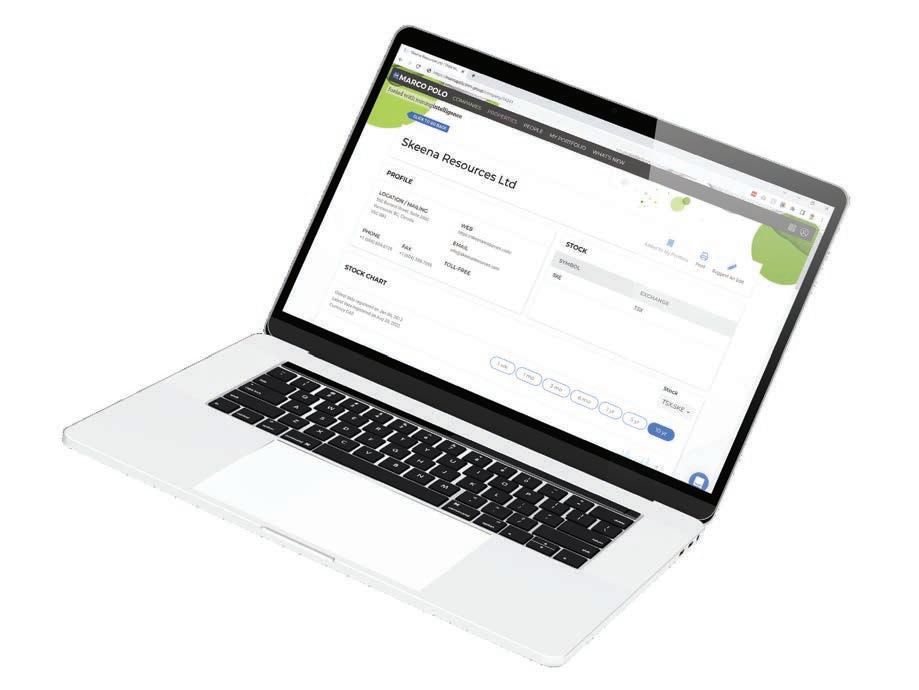
2,500+ COMPANIES

12,900+ PROPERTIES
16,000+ EXECUTIVES
CHART YOUR COURSE WITH
LEARN MORE AT MARCOPOLO.TNM.GLOBAL
LEOPARD™ DI650i TIME FOR A NEW LEADER
New Leopard DI650i down-the-hole surface drill rig offers long-term productivity and superior stability with robust and reliable main components – seamlessly integrated with state-of-the-art technical solutions. Scalable automation, easy maintenance and outstanding movability are the features that make Leopard DI650i a premium product, which is an honour to own.
Leave your paw print and enjoy the smooth, efficient ride.
Explore the new Leopard DI650i: ROCKTECHNOLOGY.SANDVIK/DI650 i
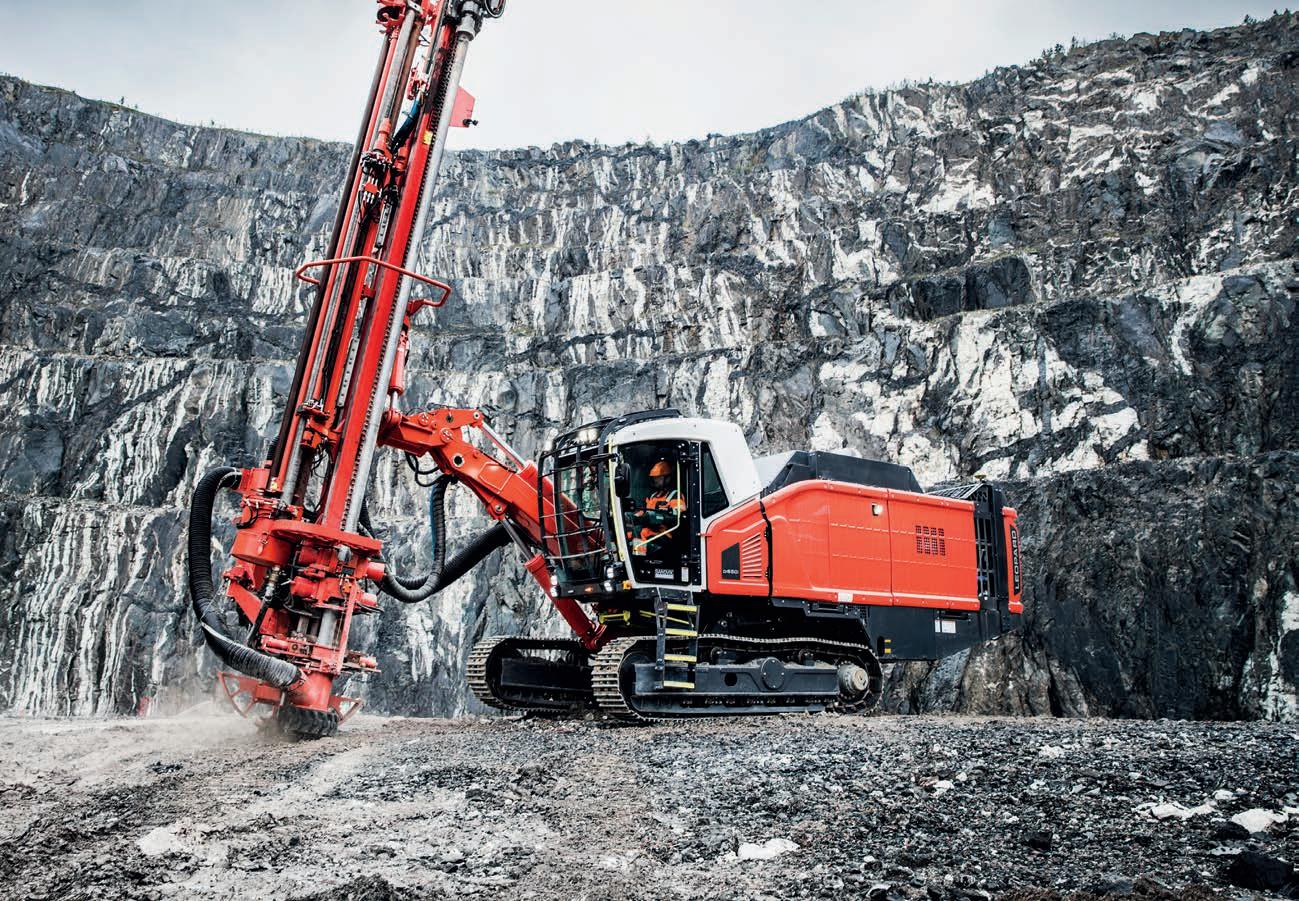
























 By David Baker, Stephen D’Esposito, and John Thompson
By David Baker, Stephen D’Esposito, and John Thompson






 By Paul Triolo and Kevin Allison
By Paul Triolo and Kevin Allison












































































 By Norm Tollinsky
By Norm Tollinsky































































 By Chris Hodgson
By Chris Hodgson

























